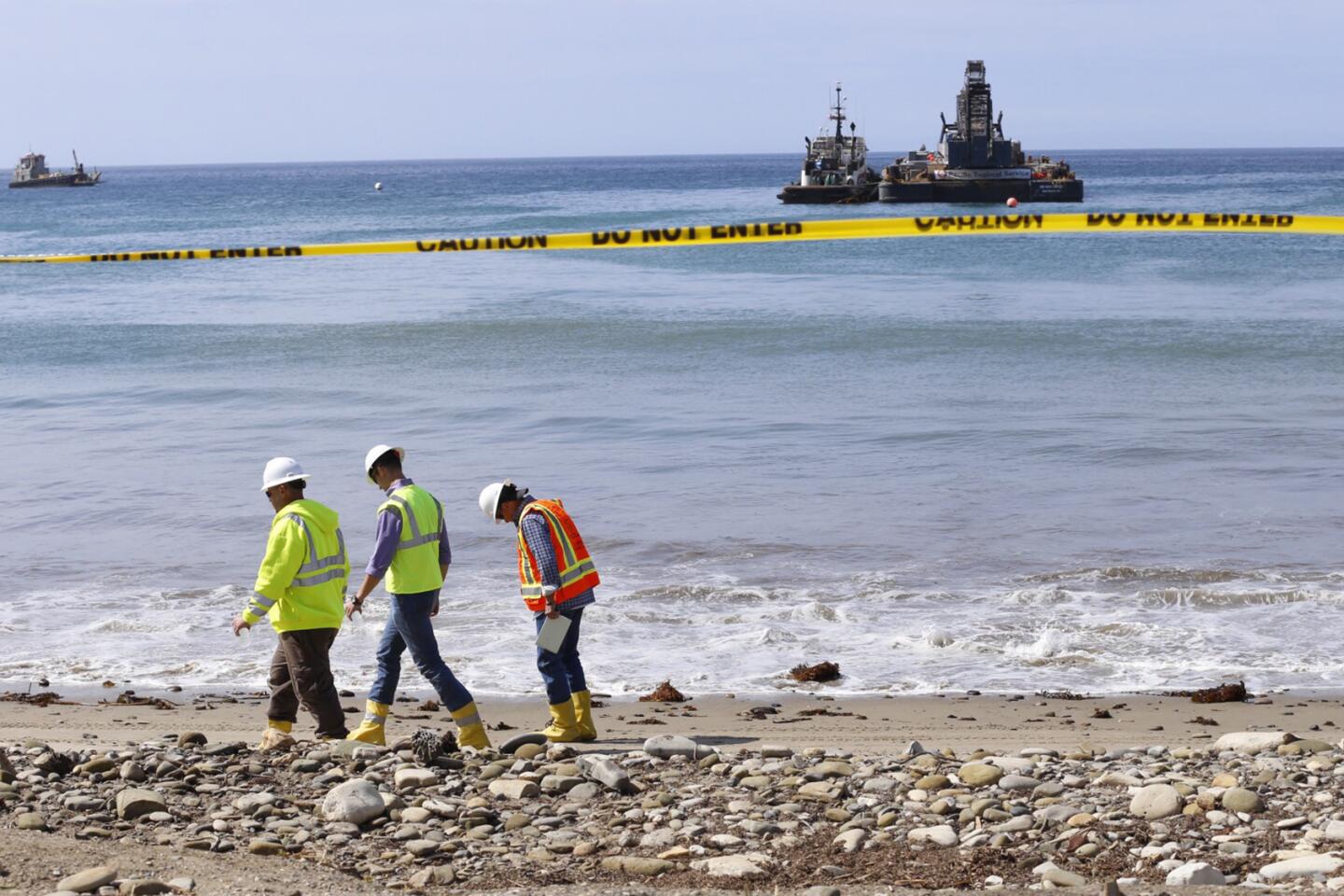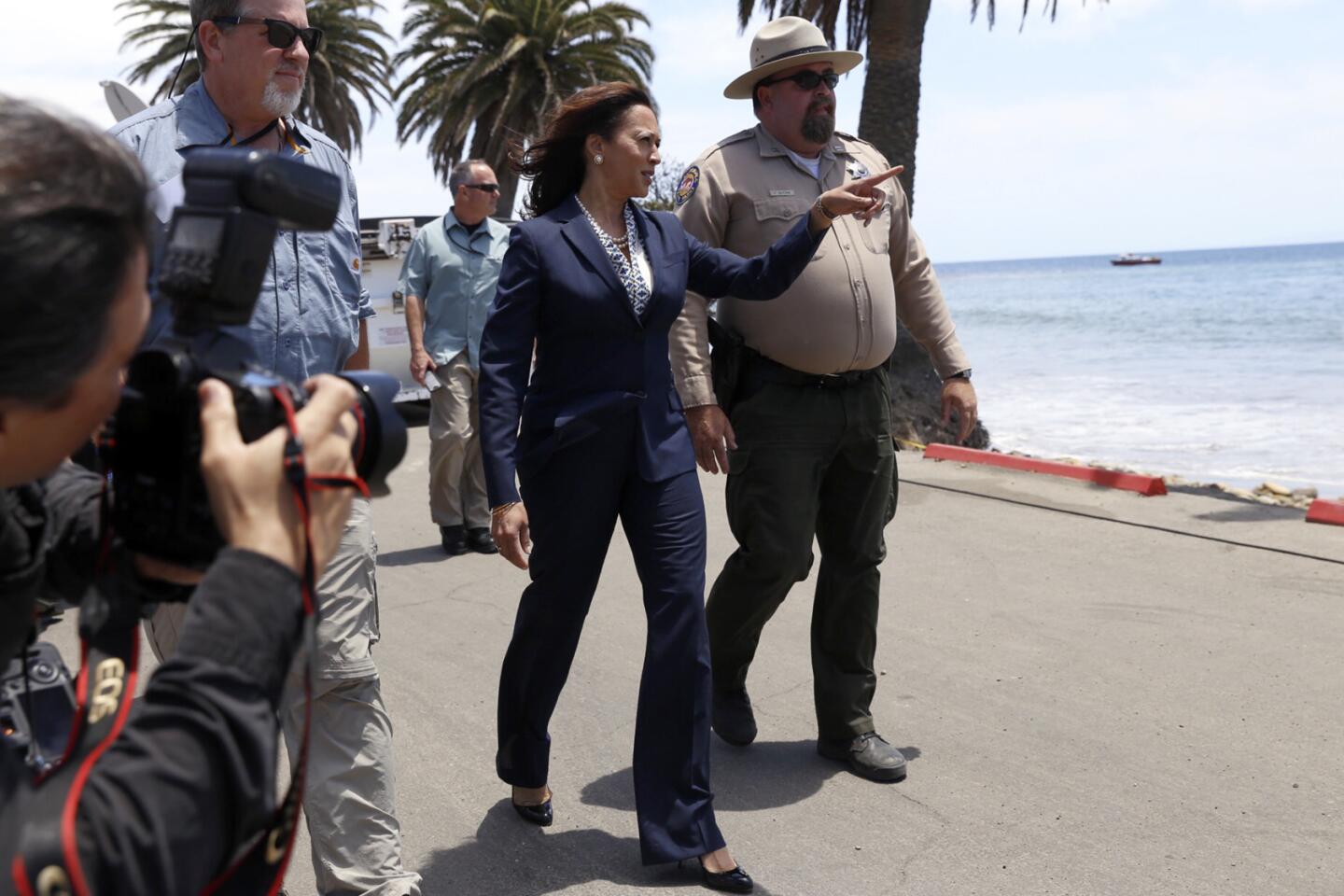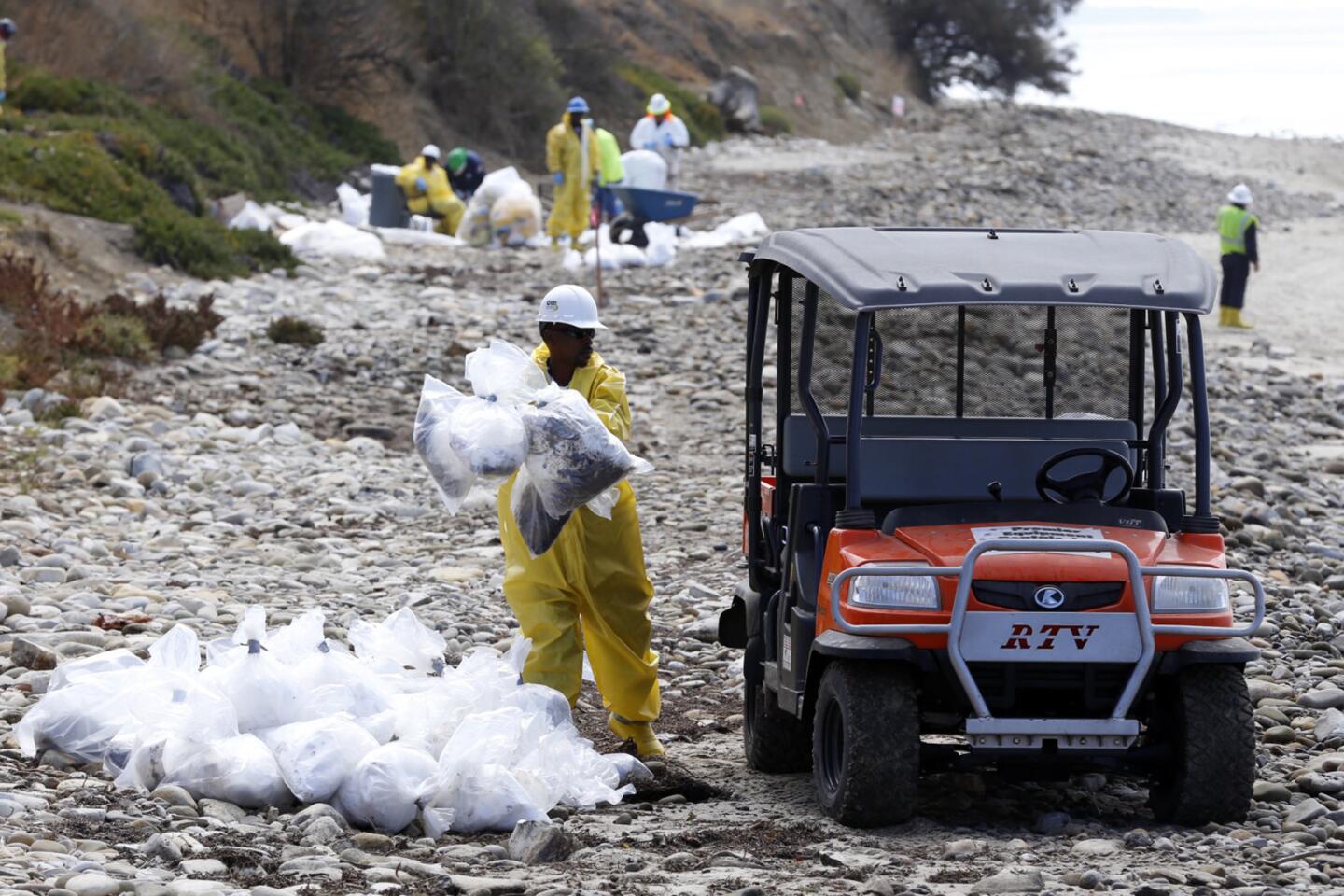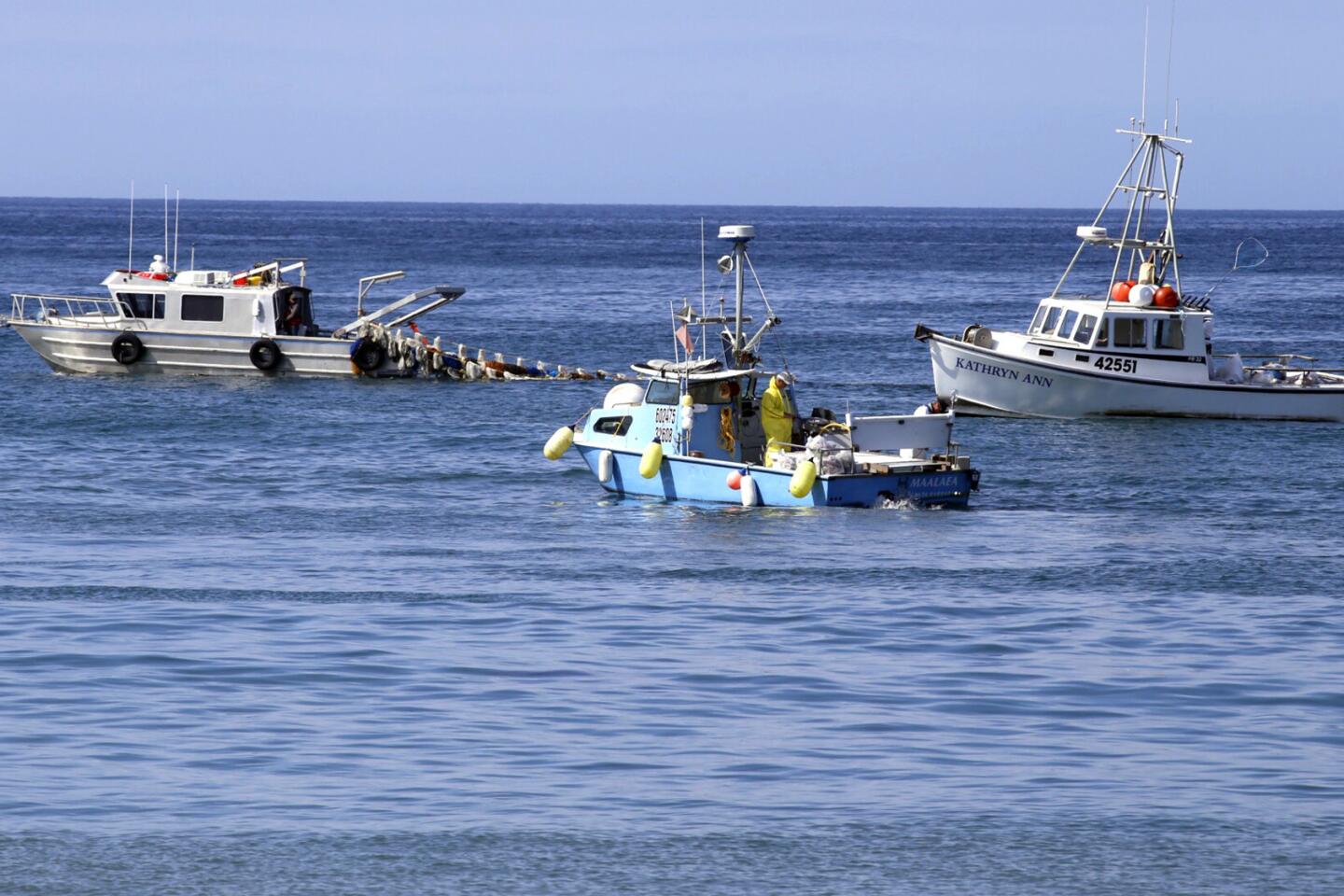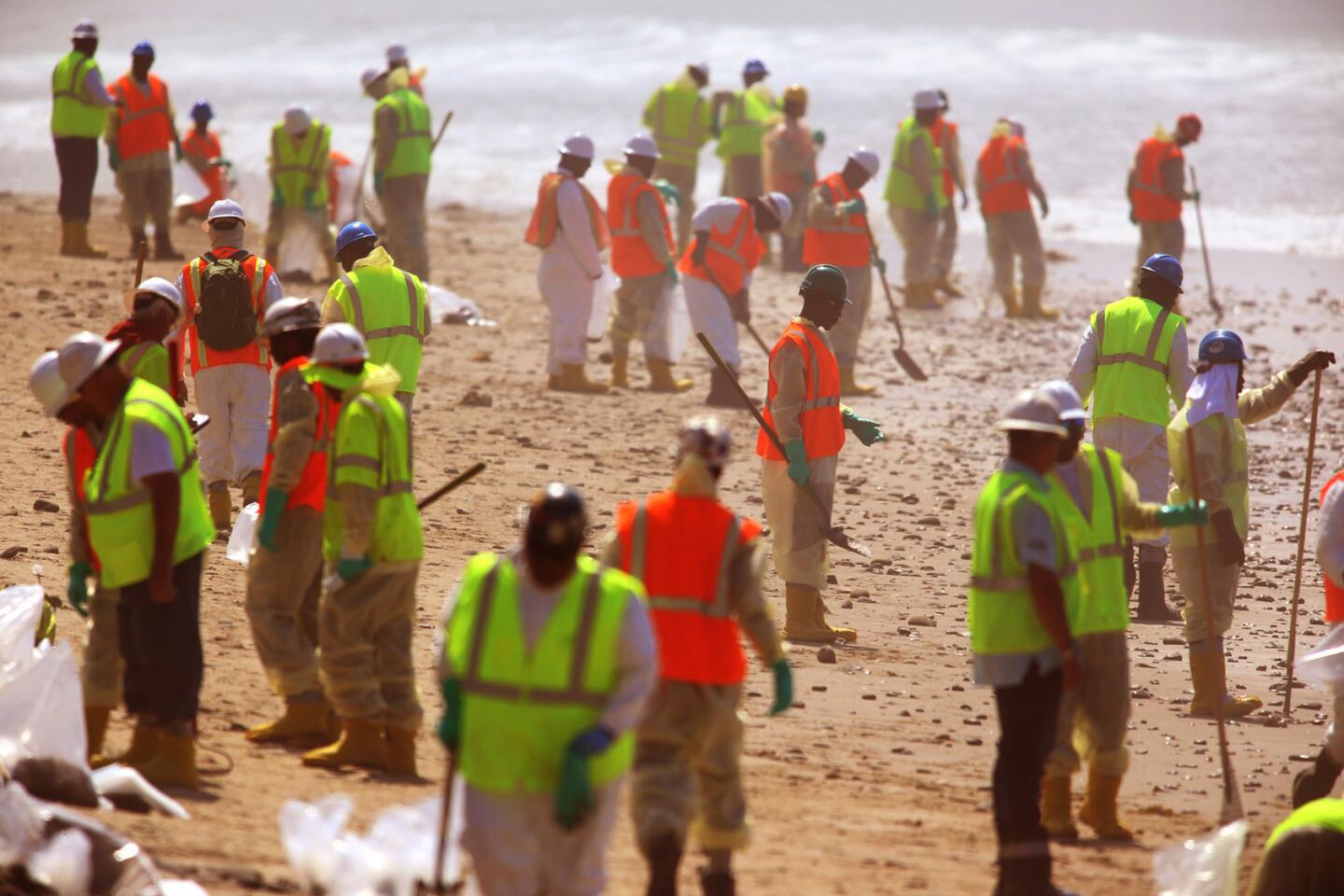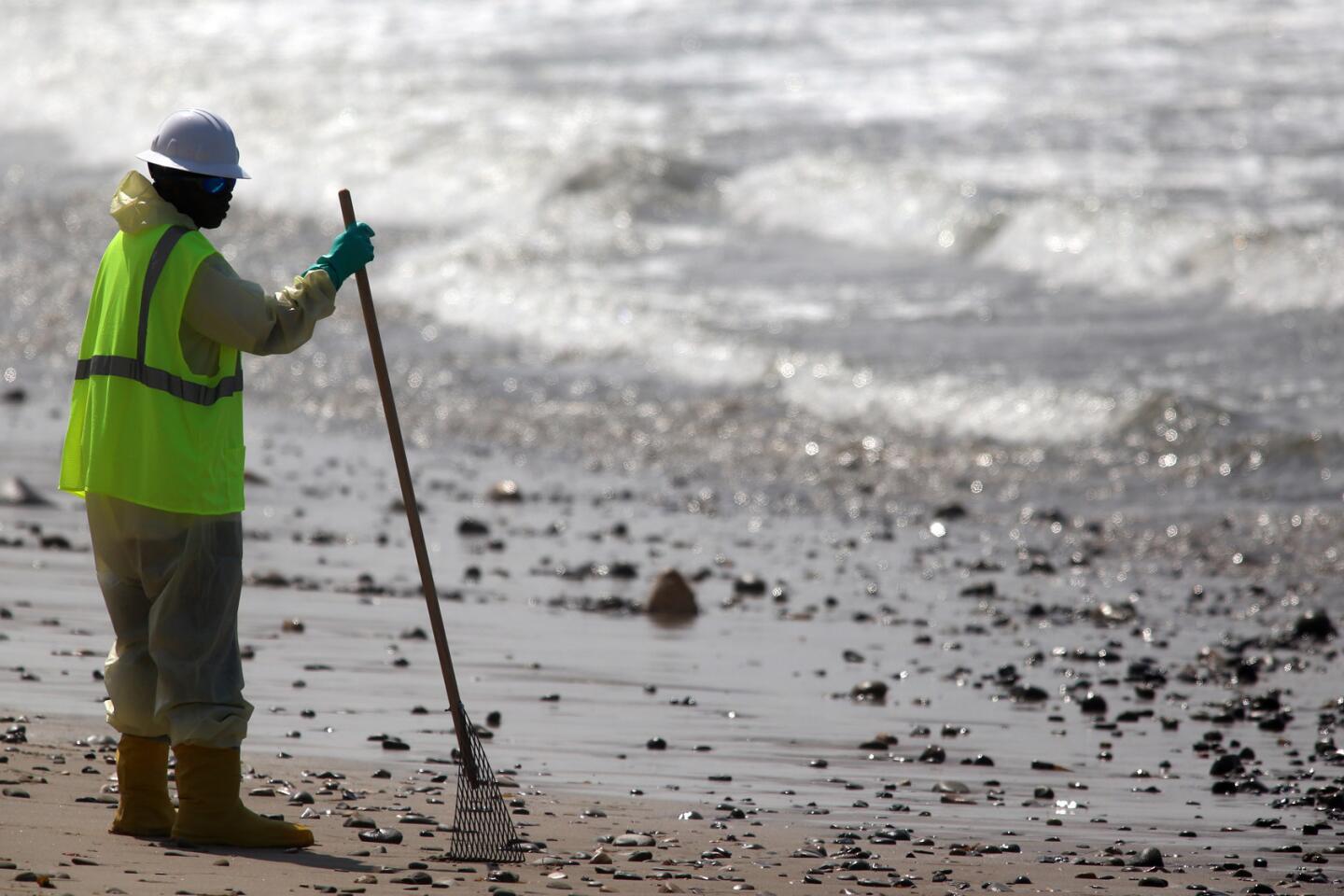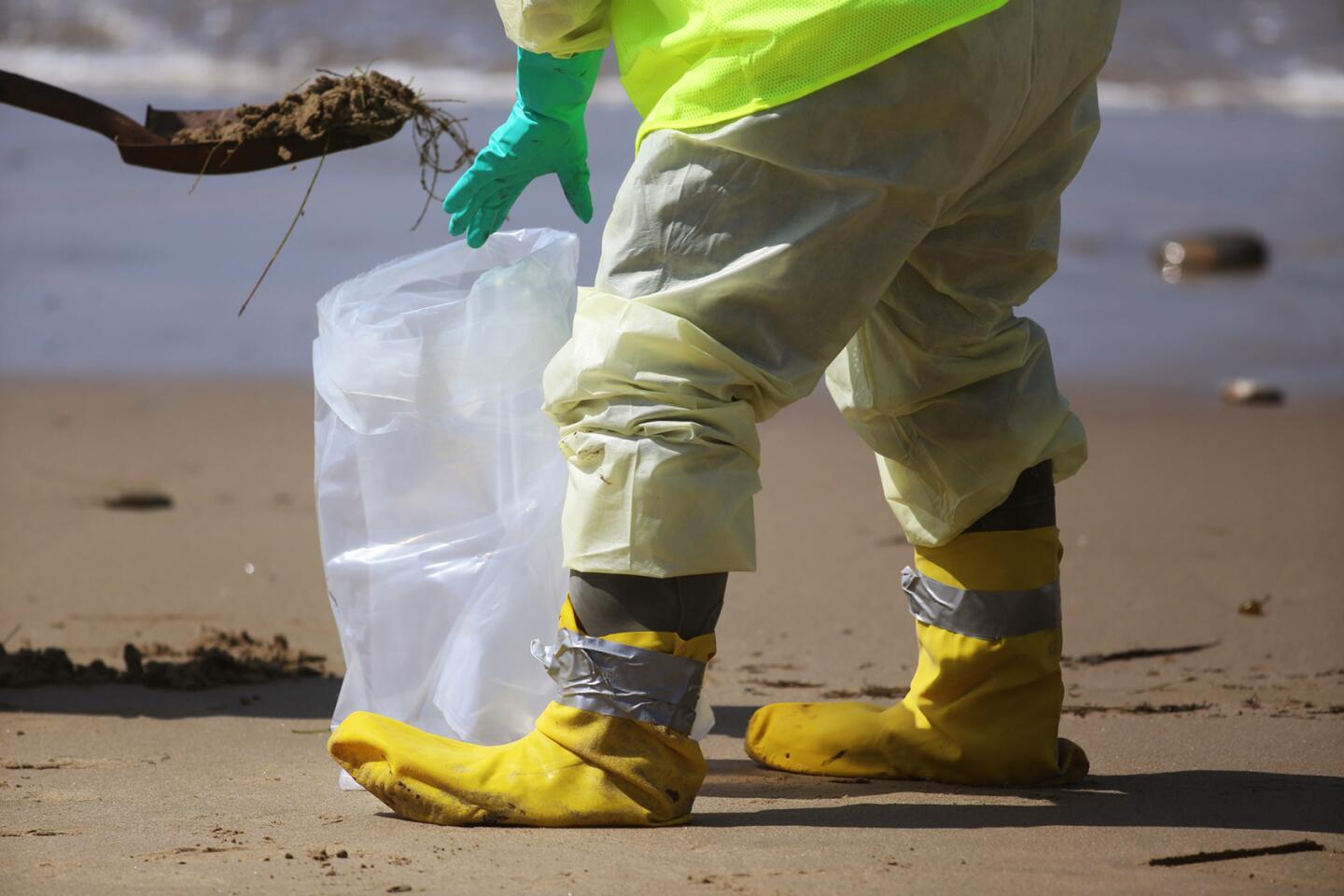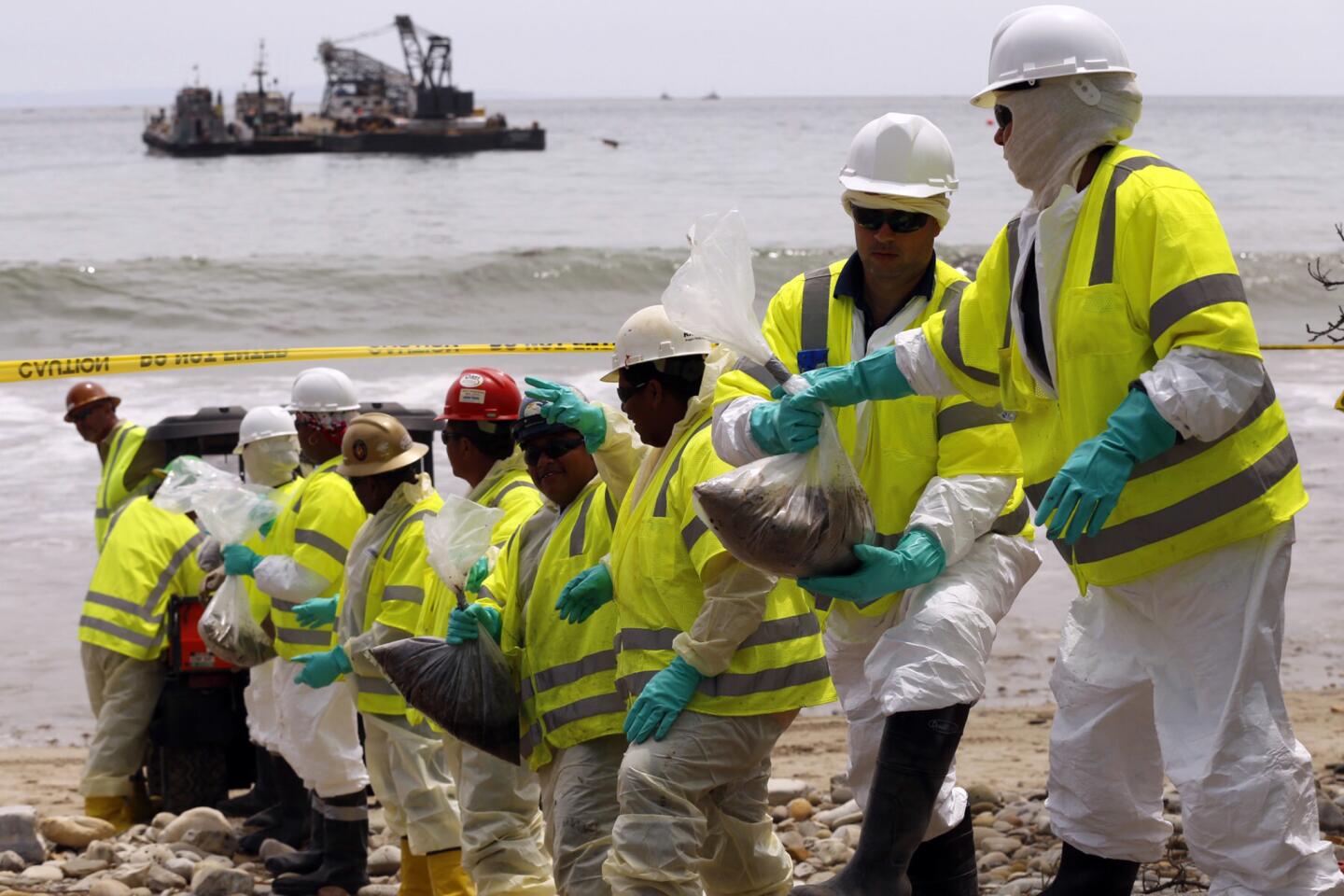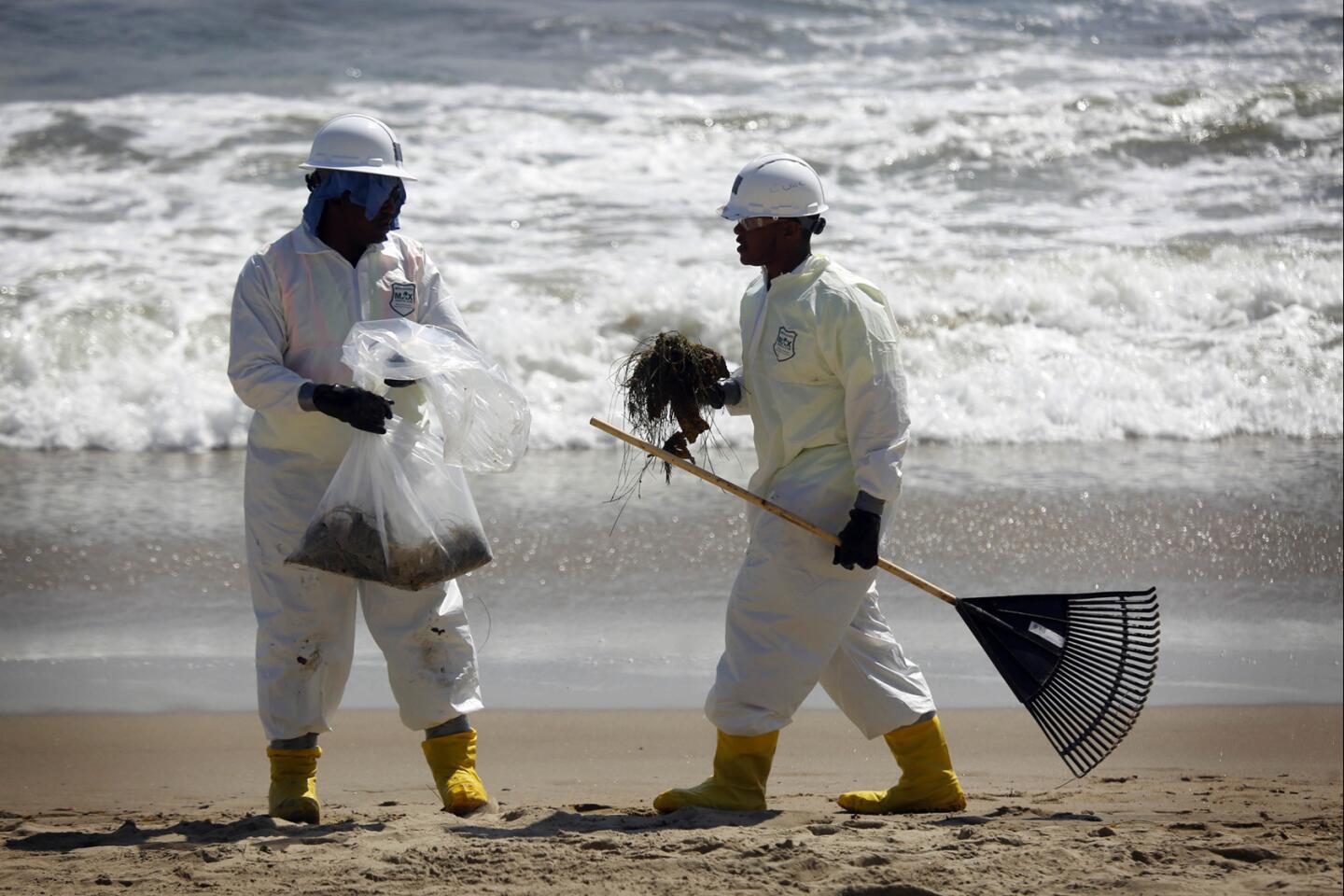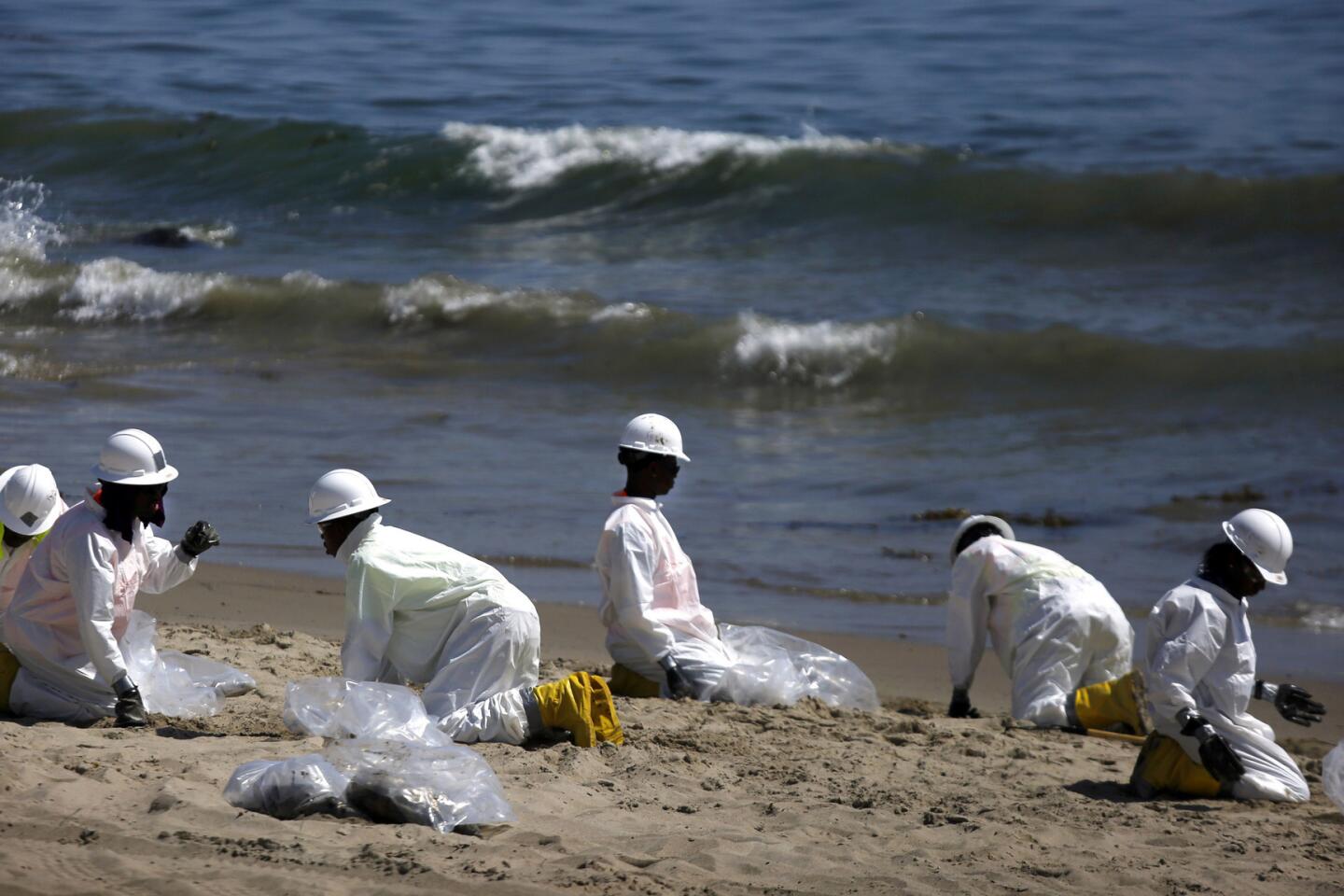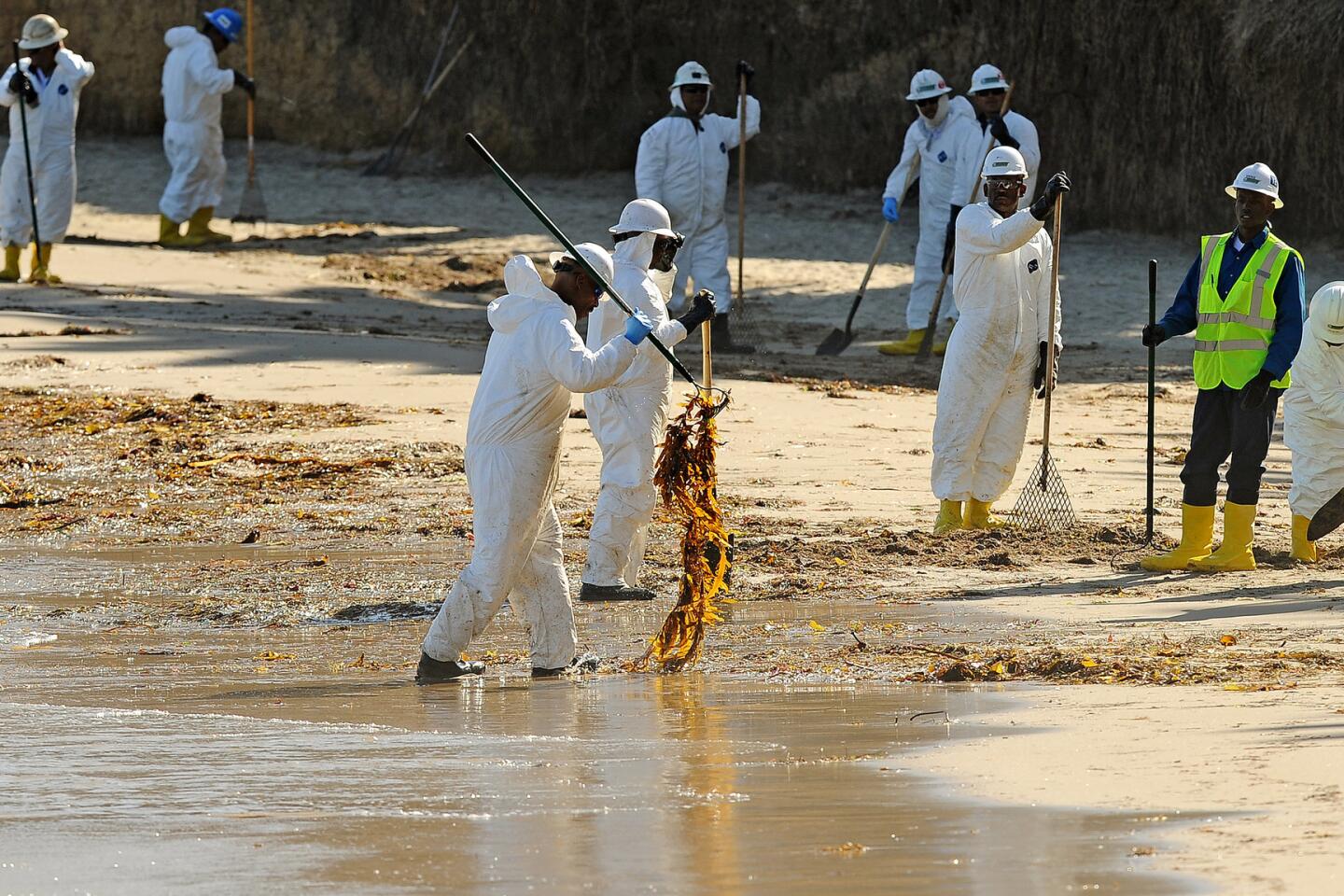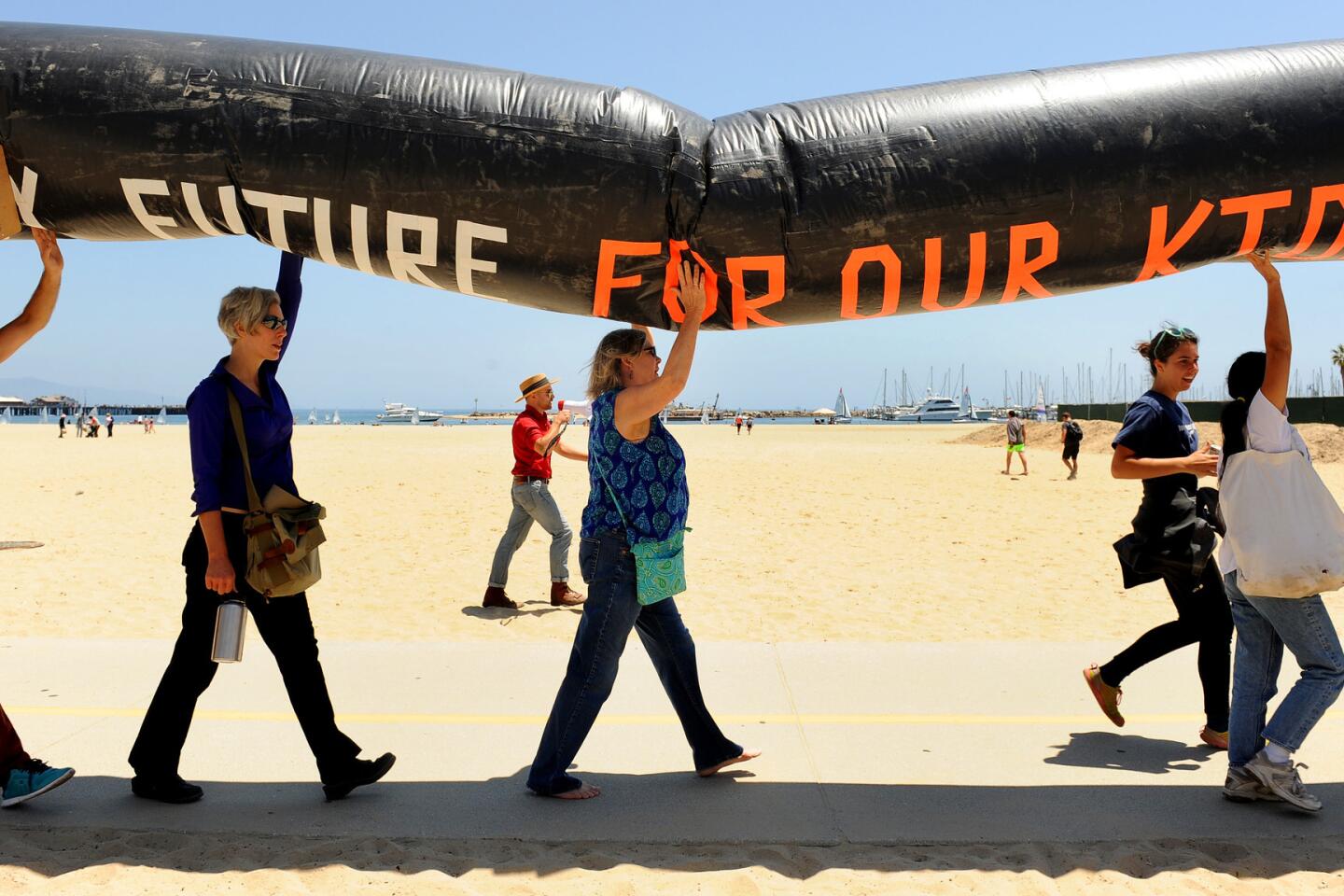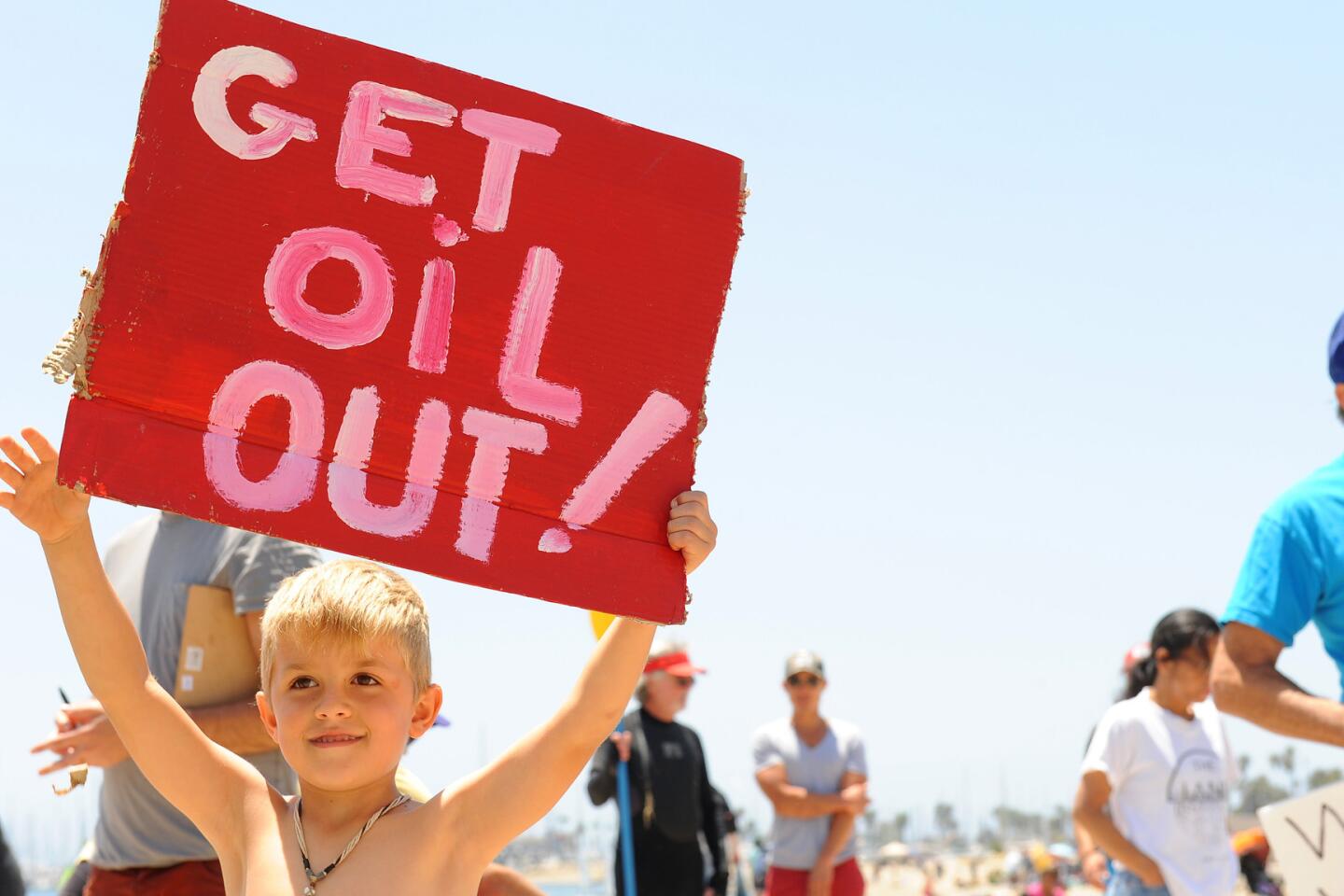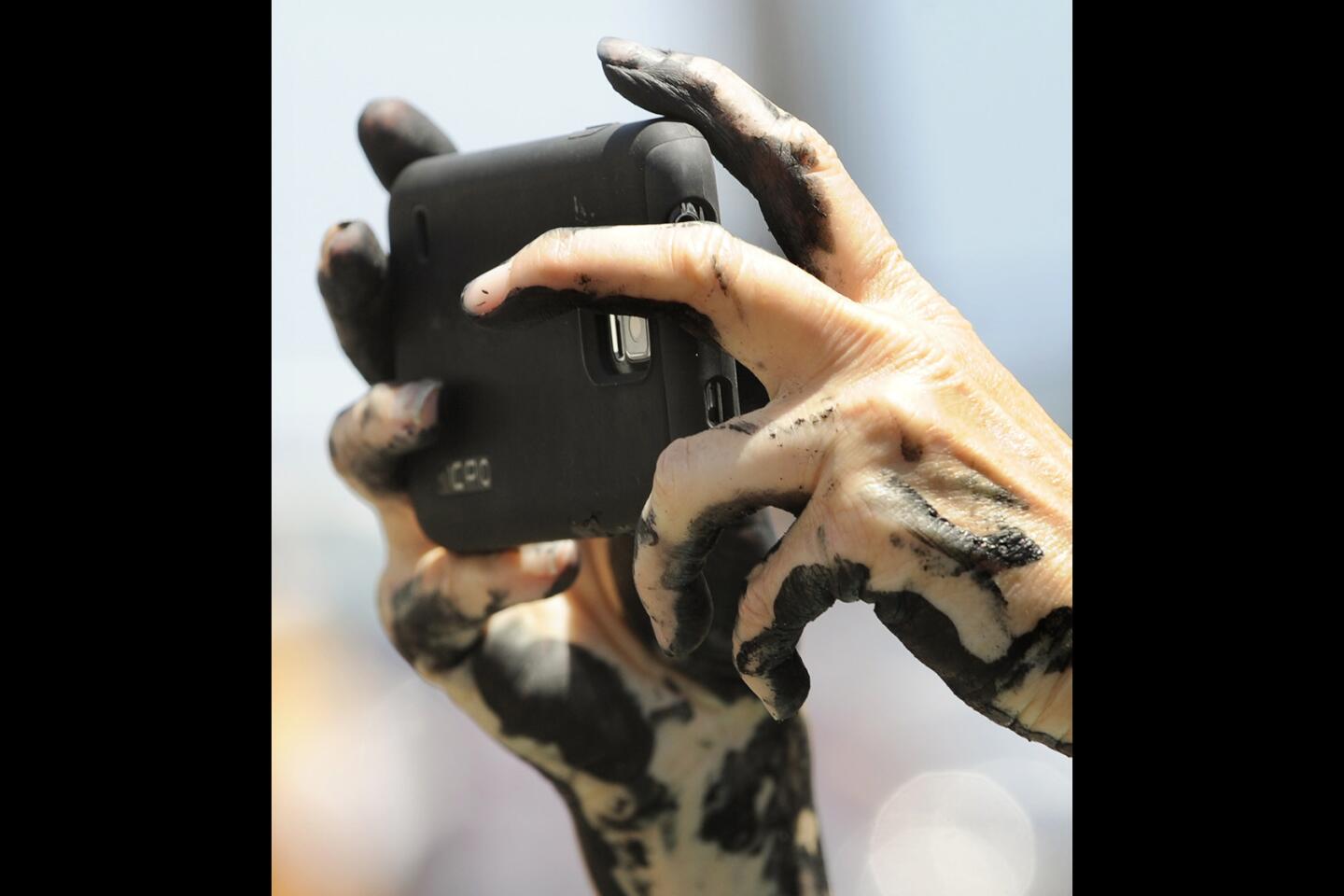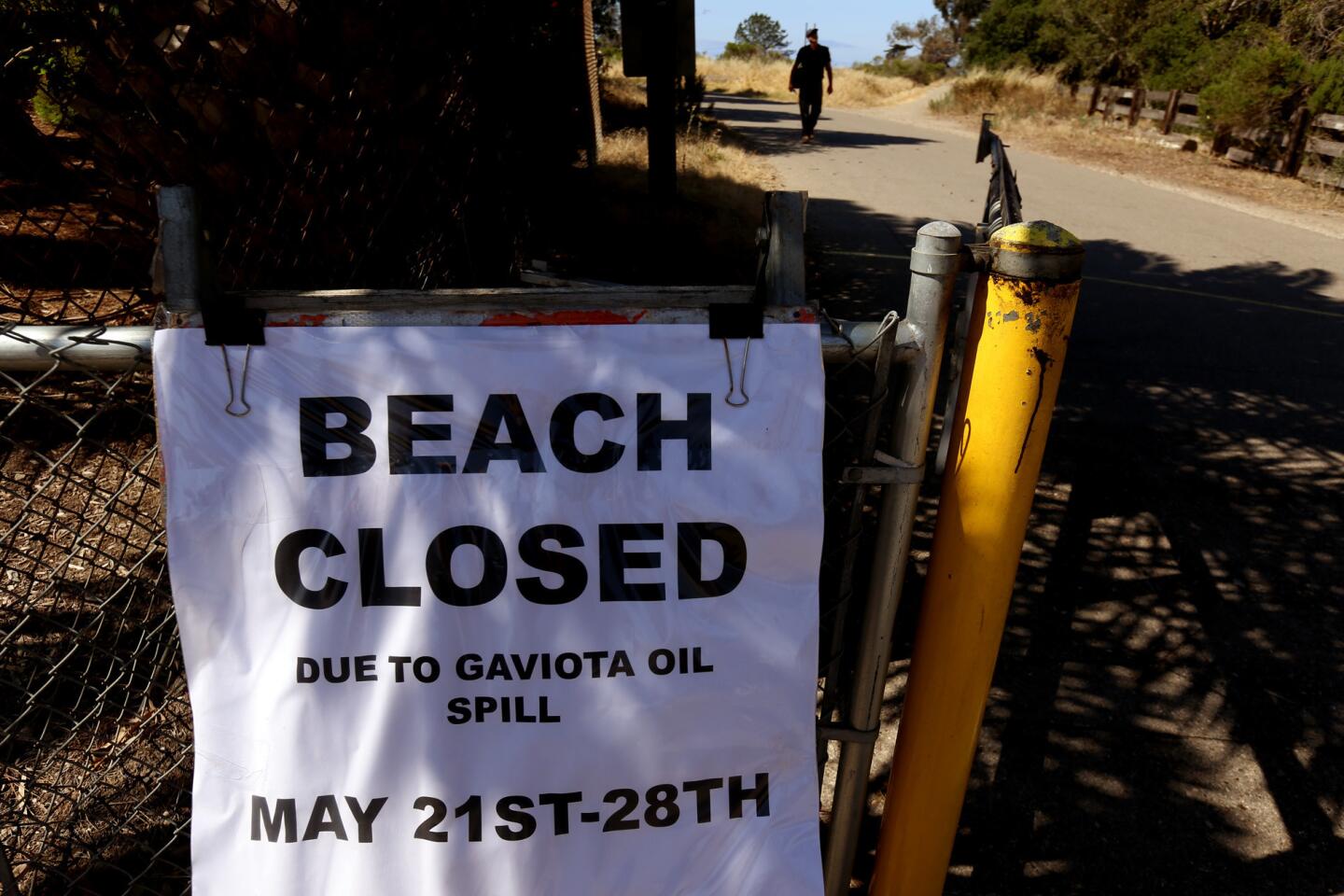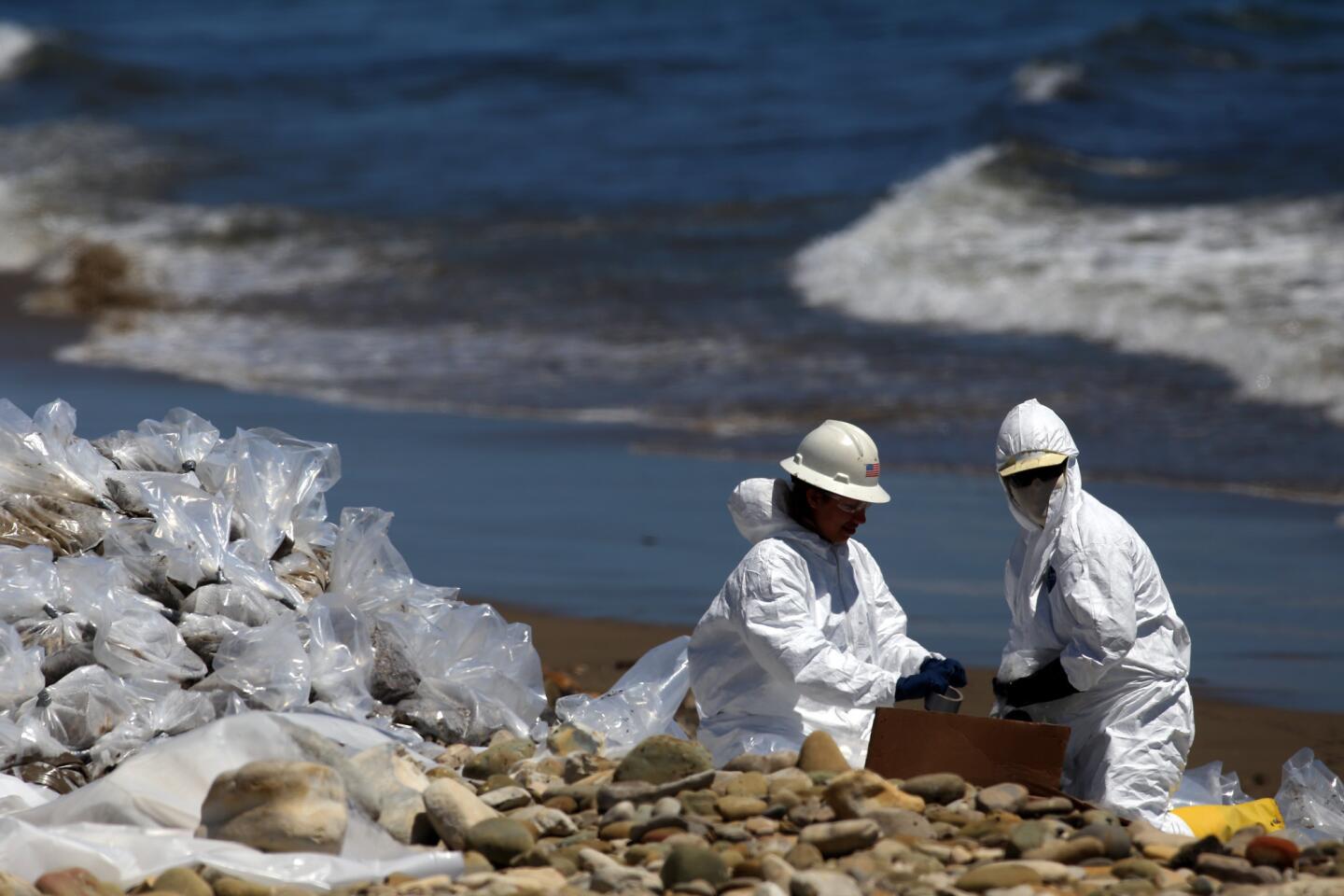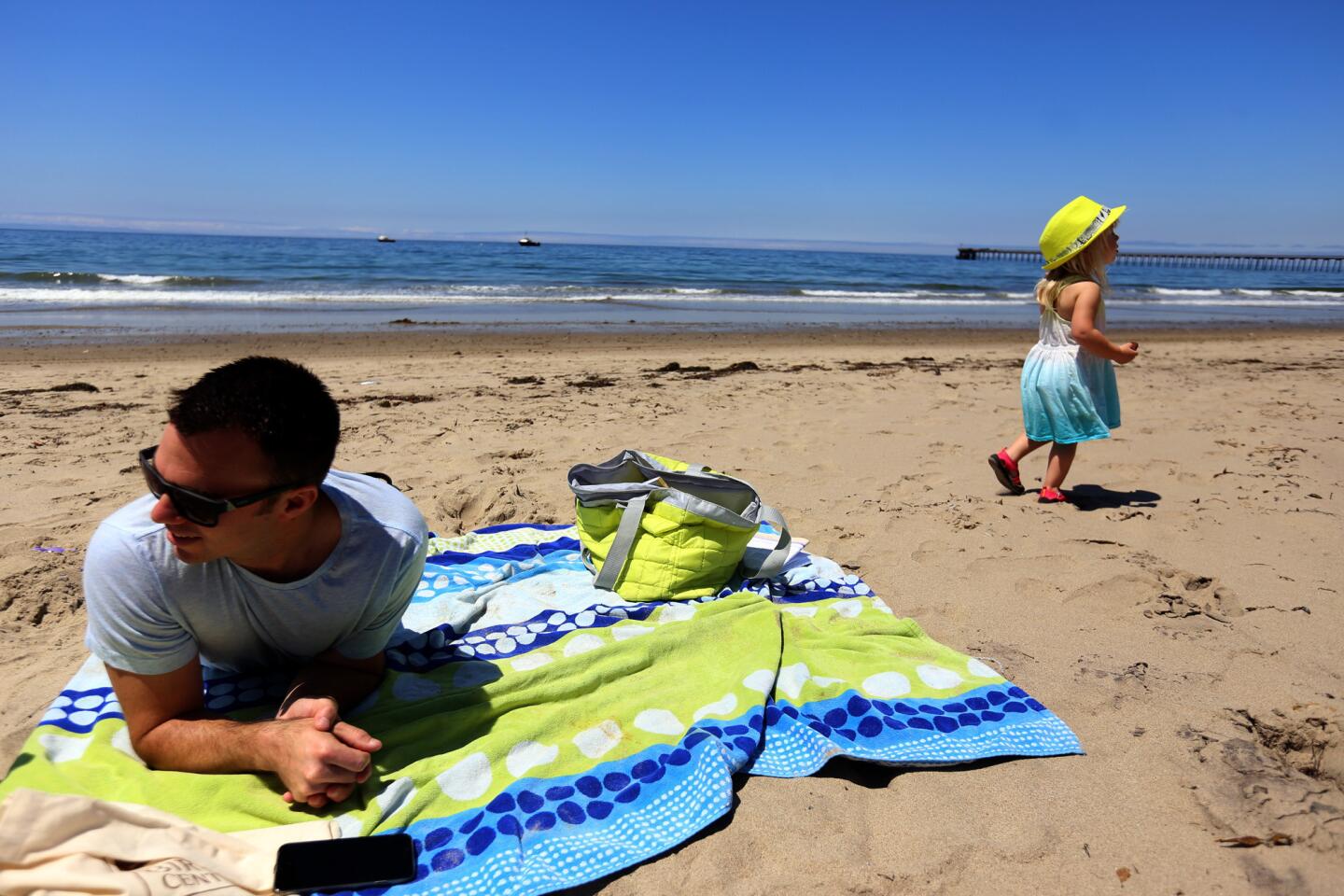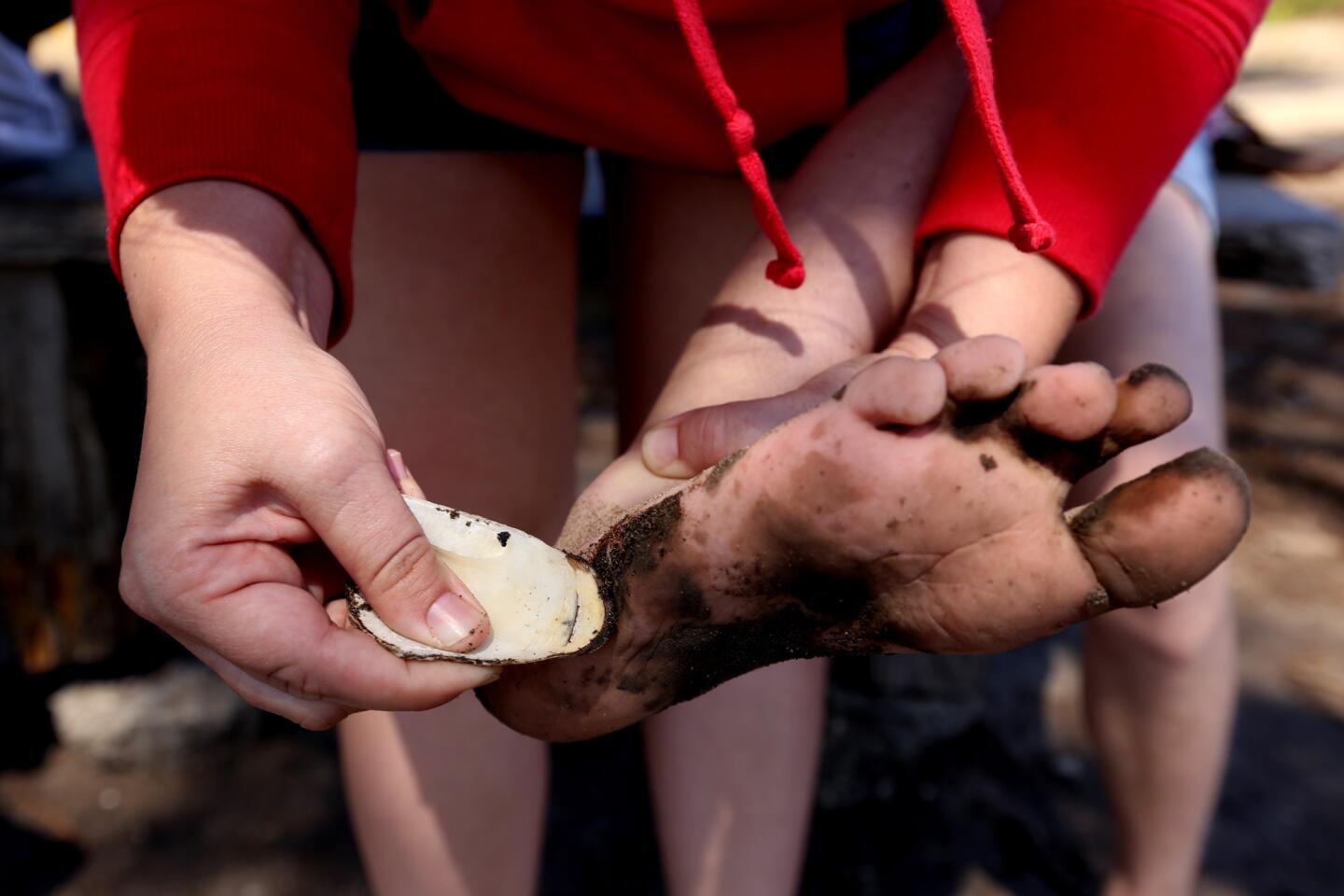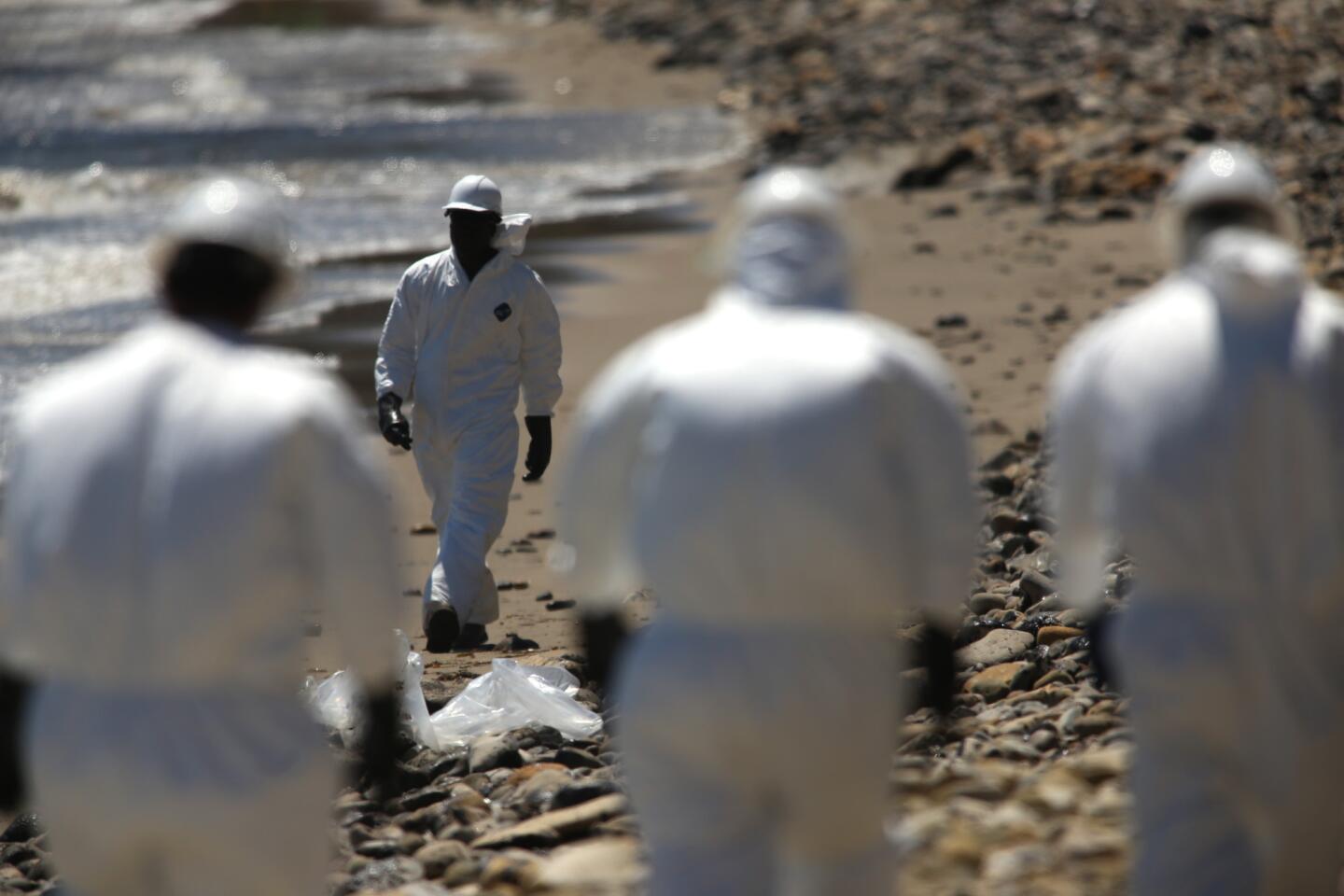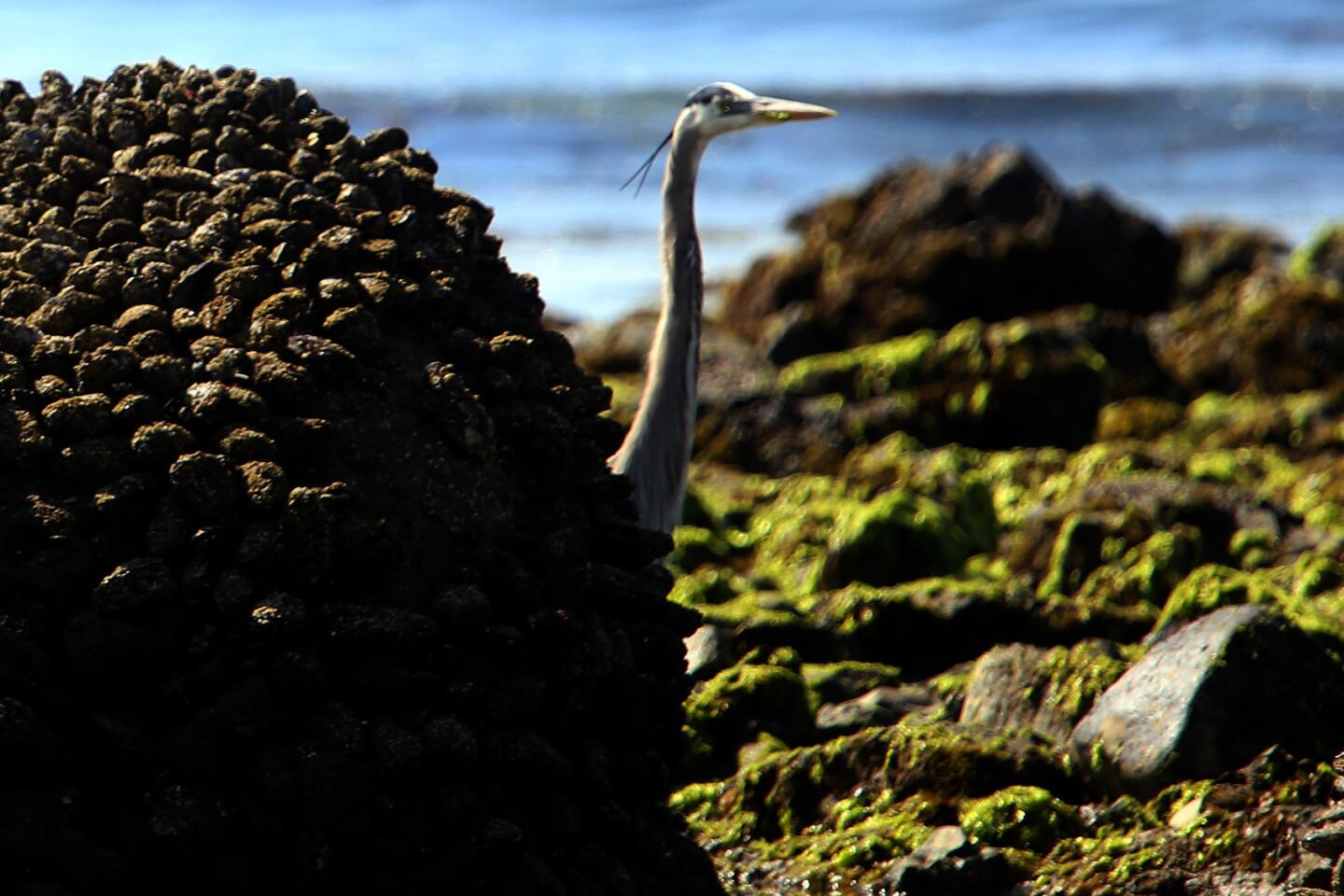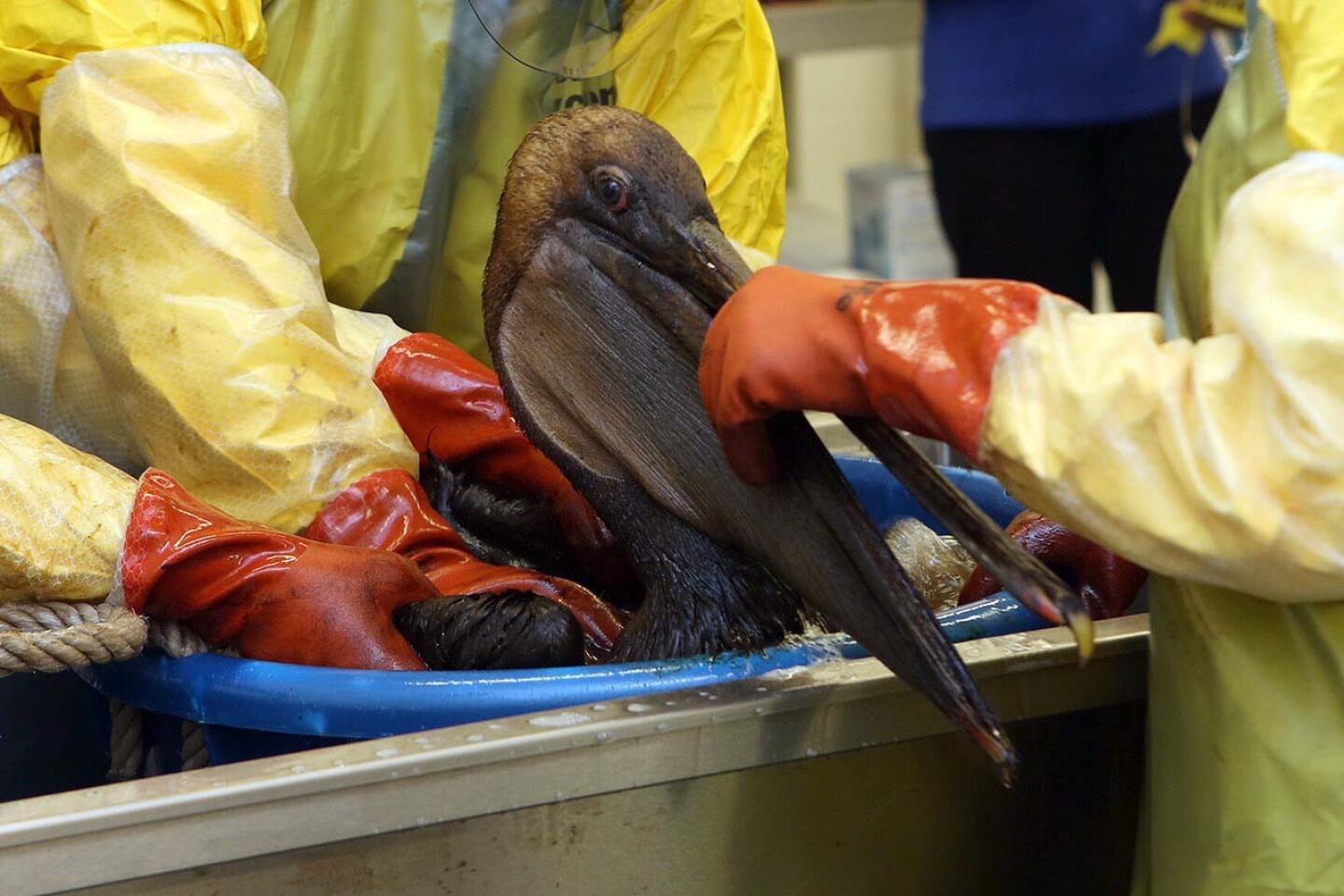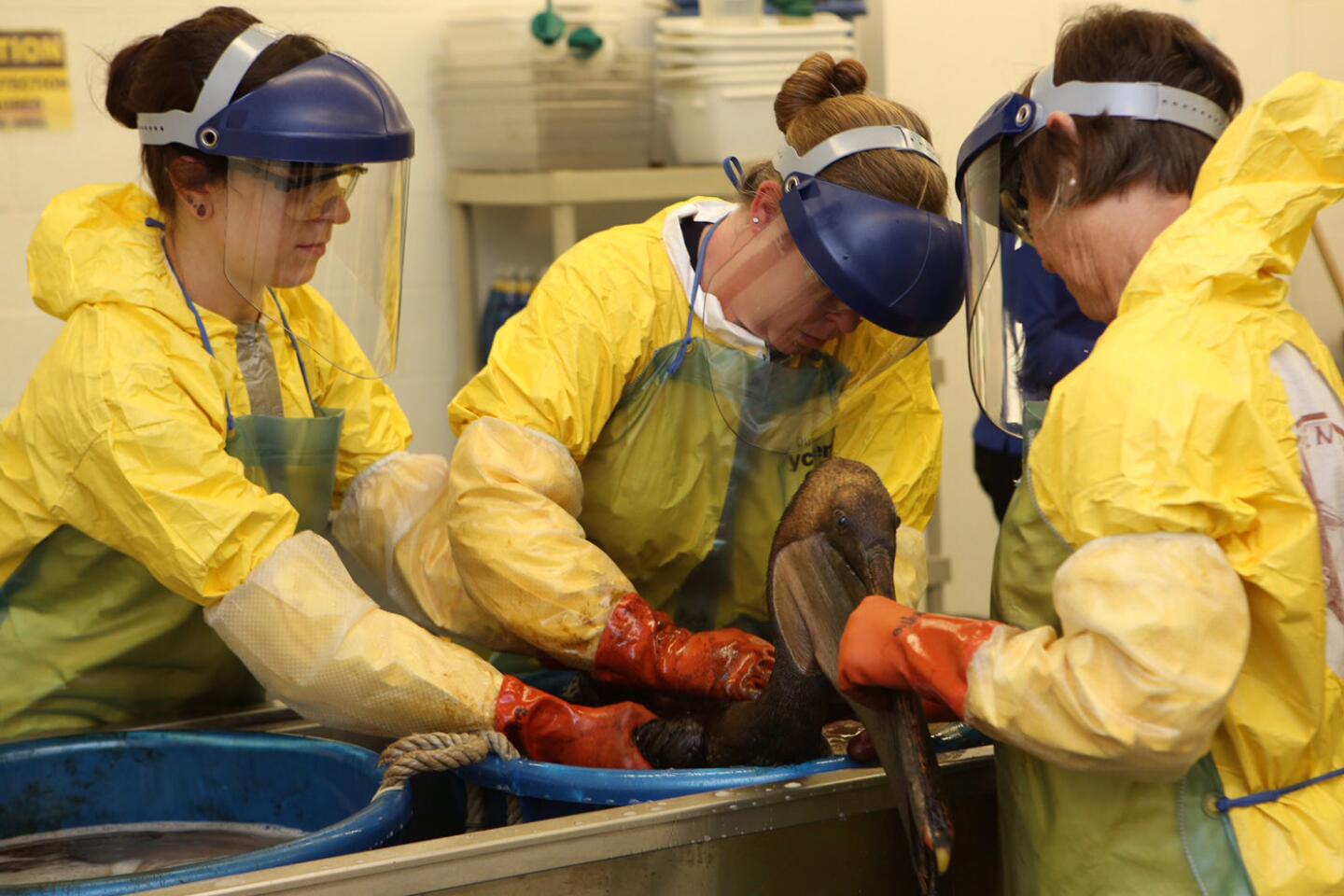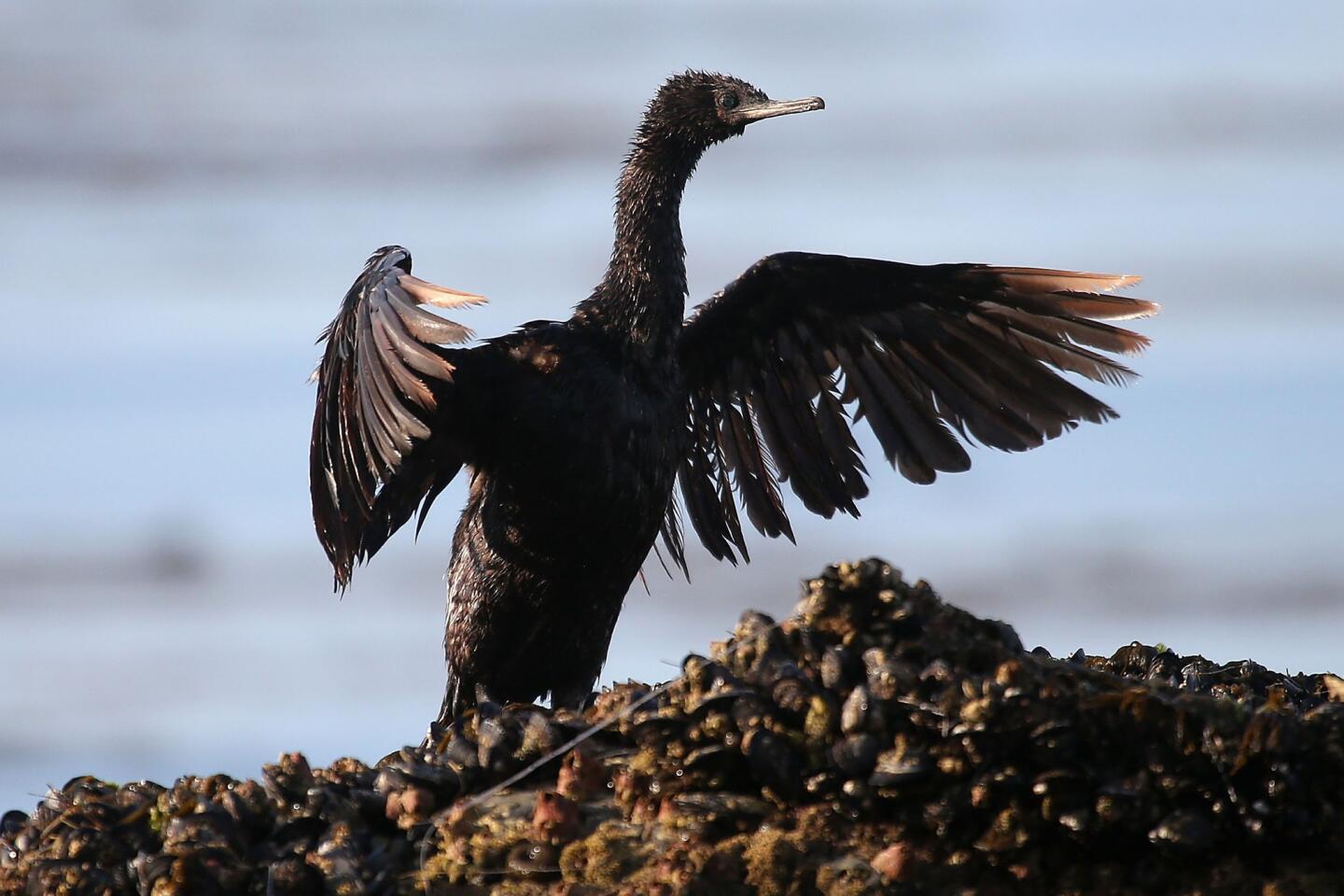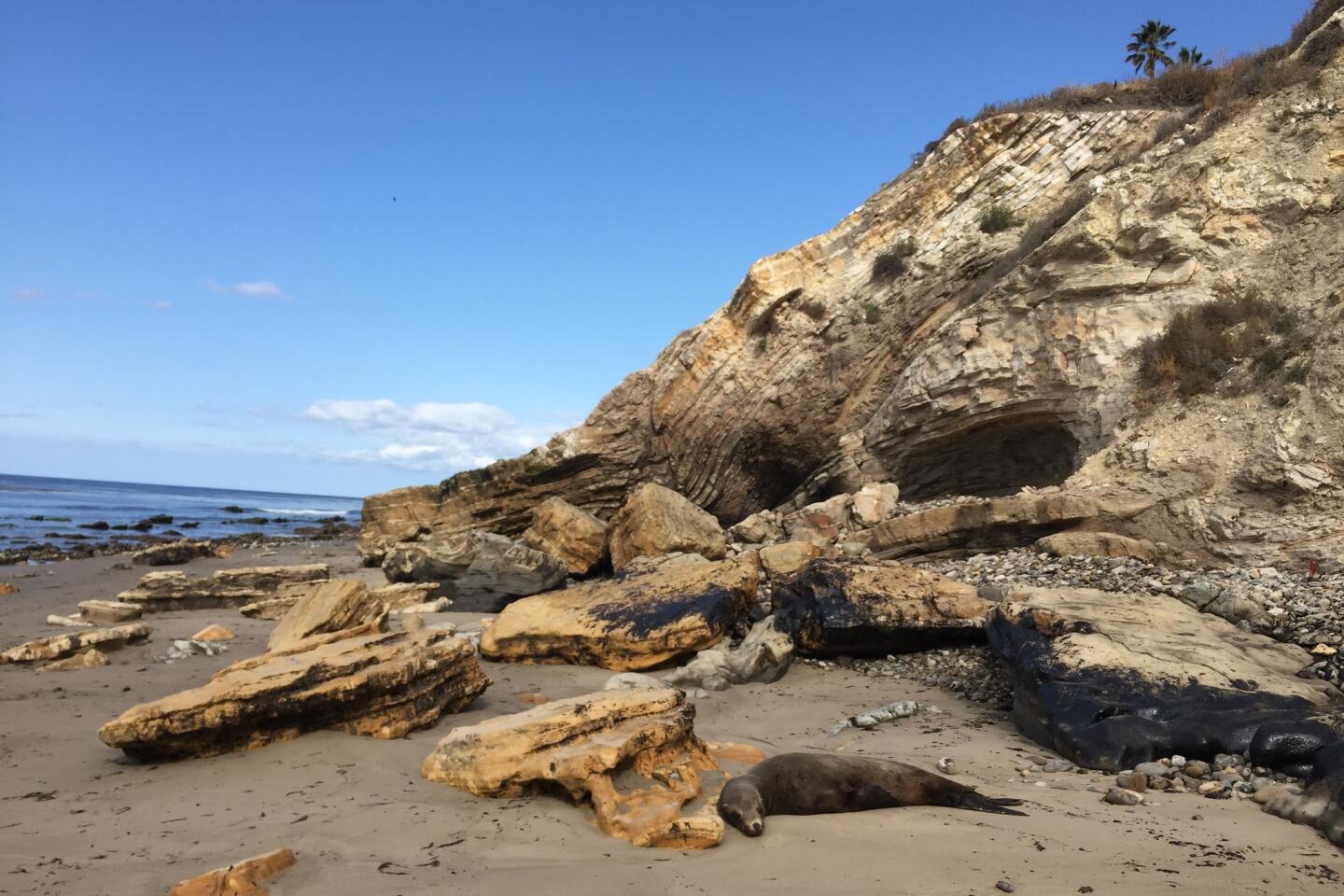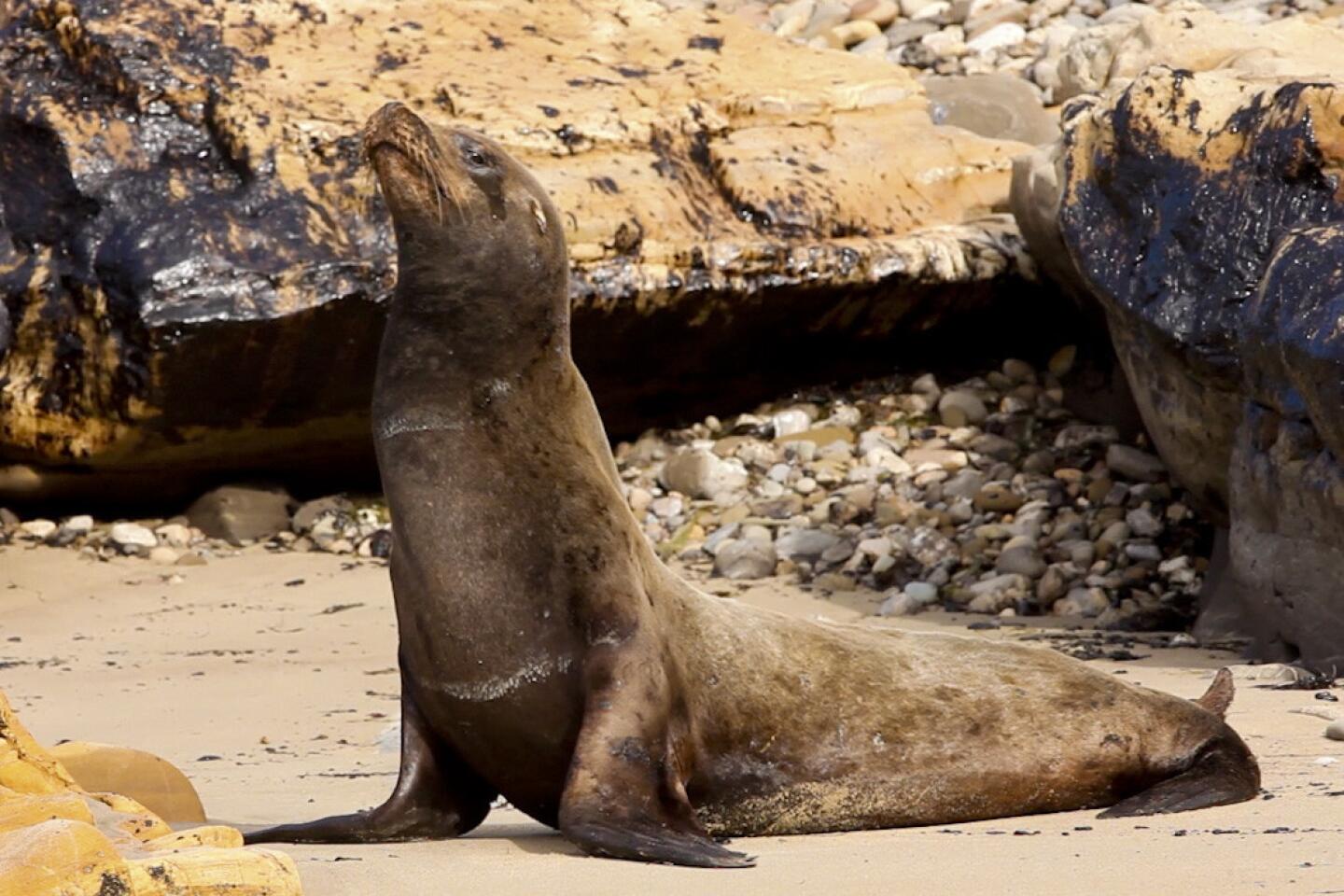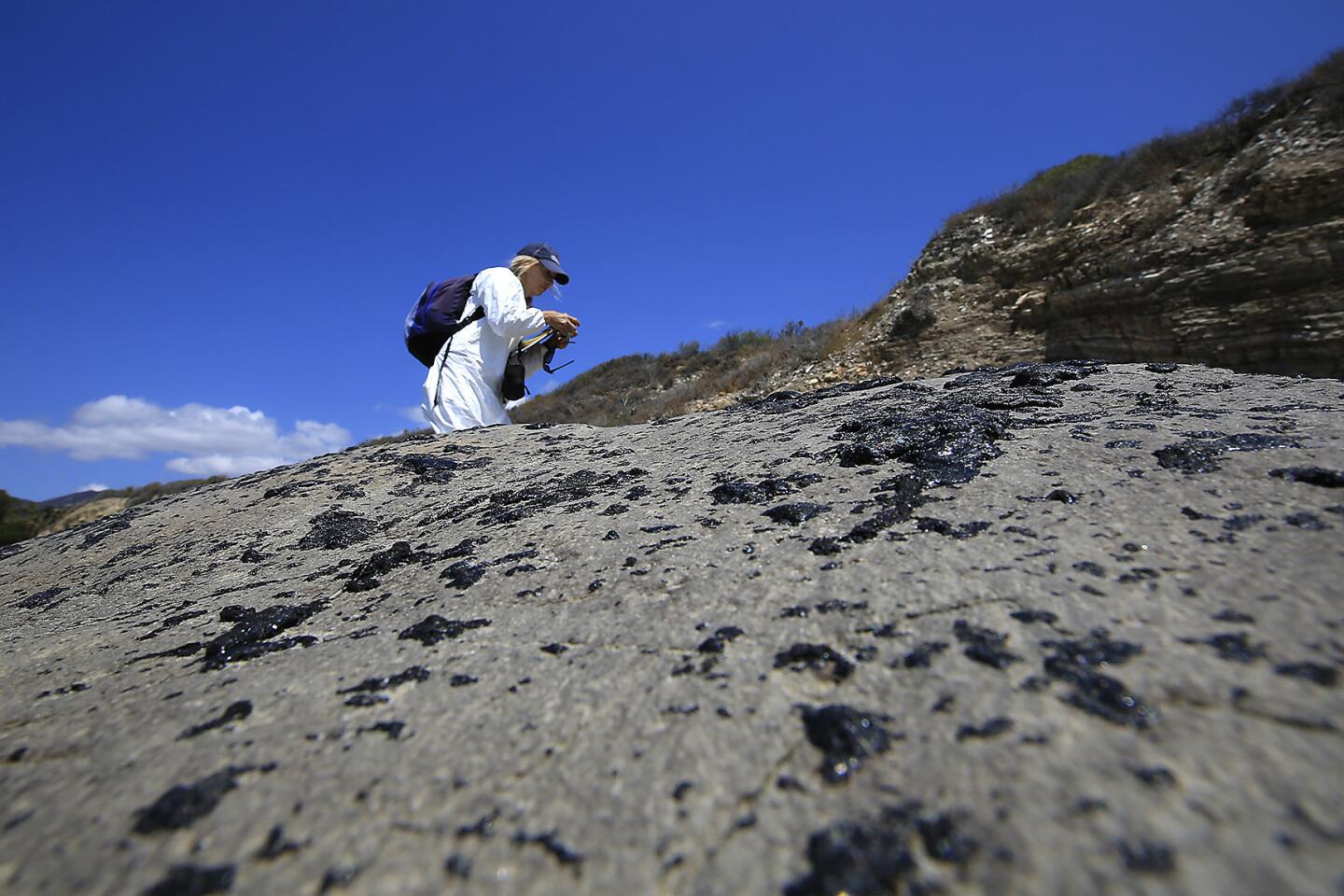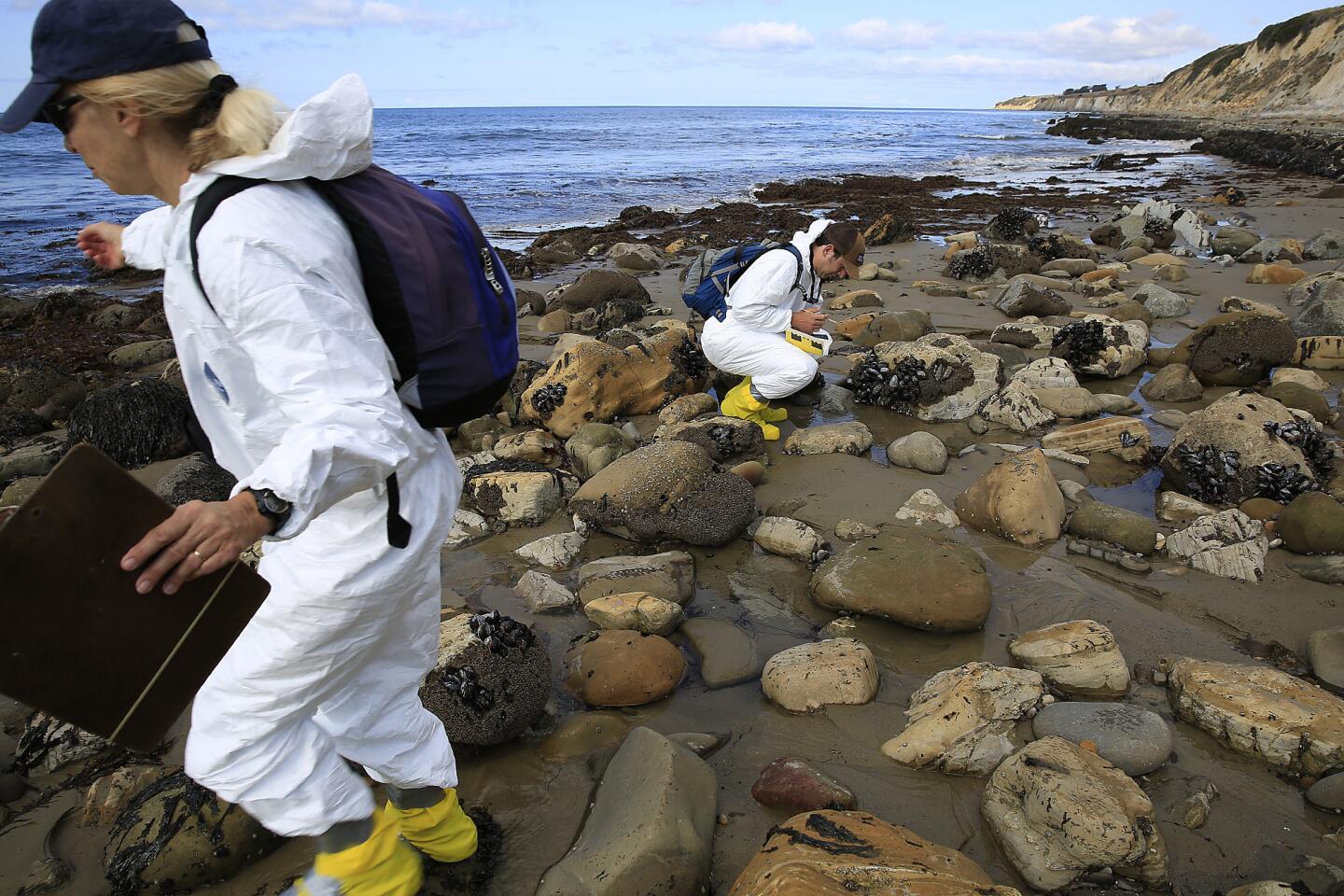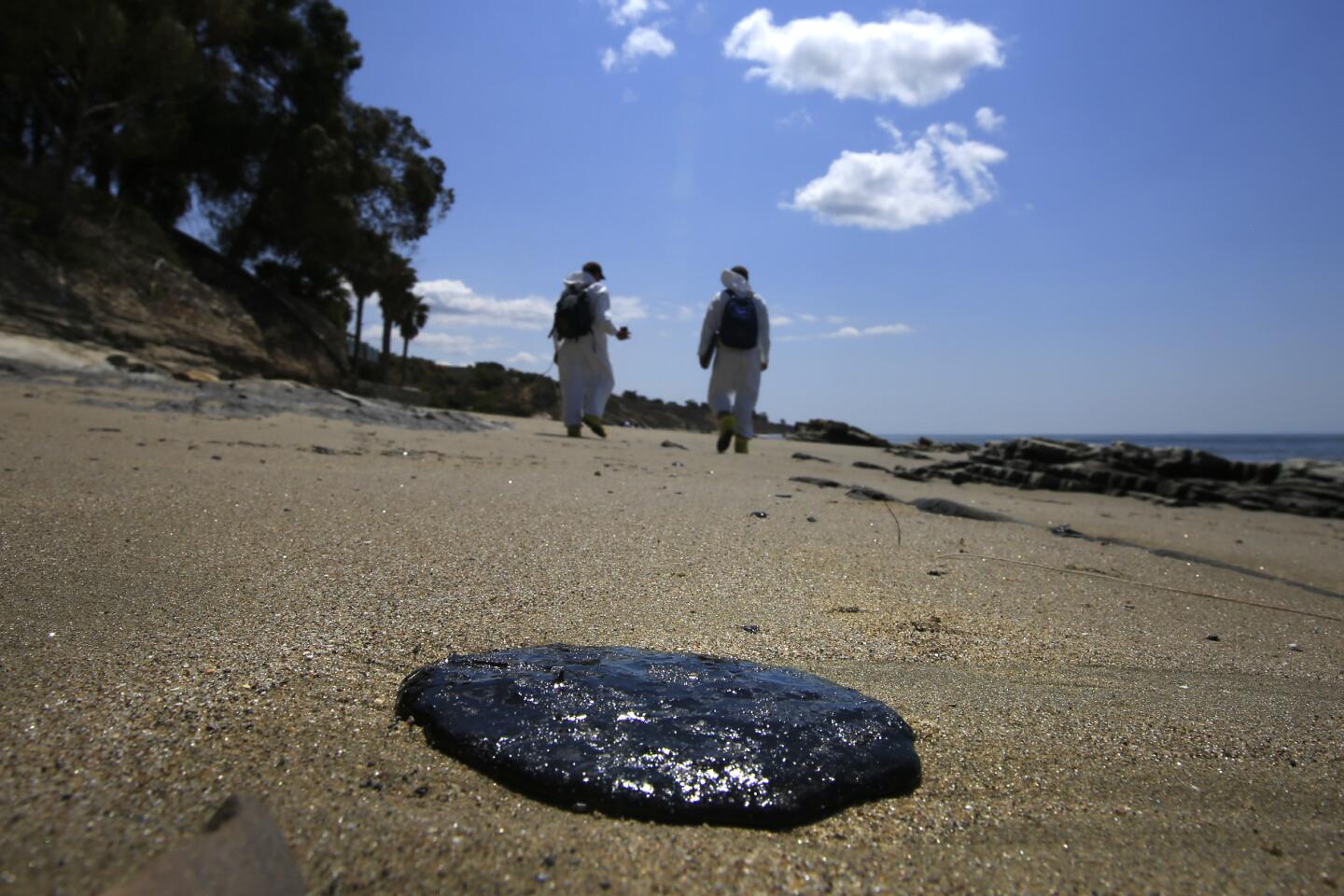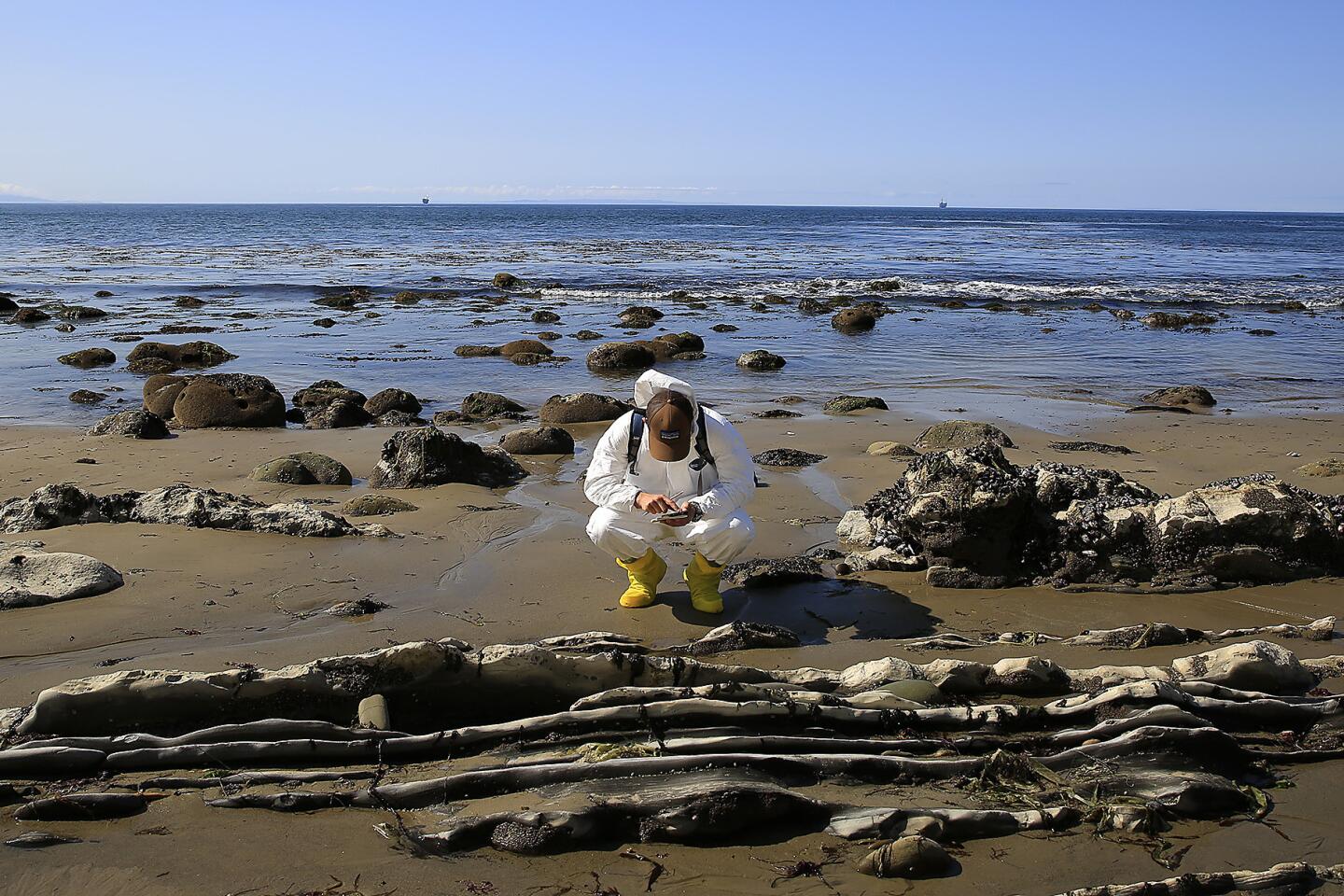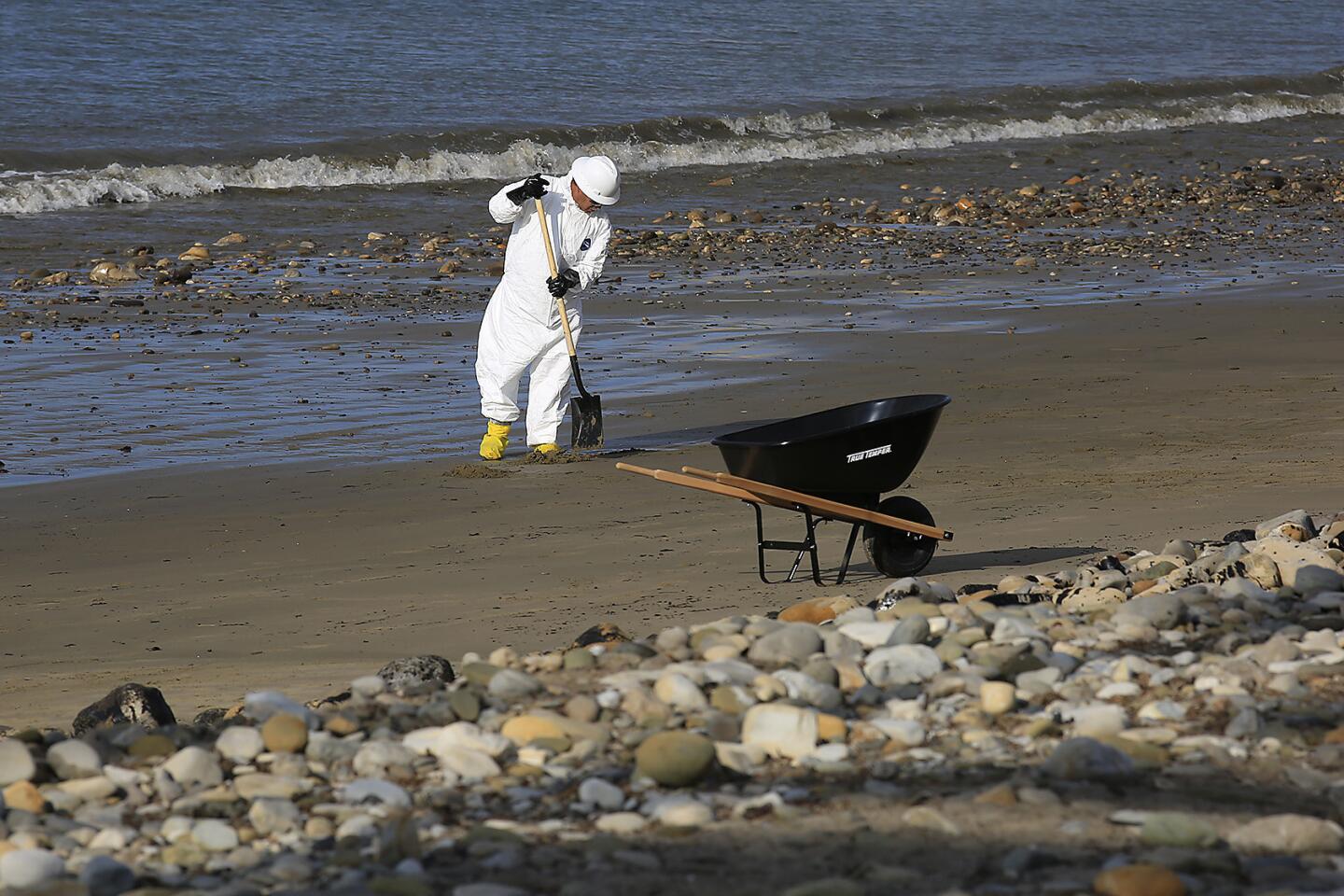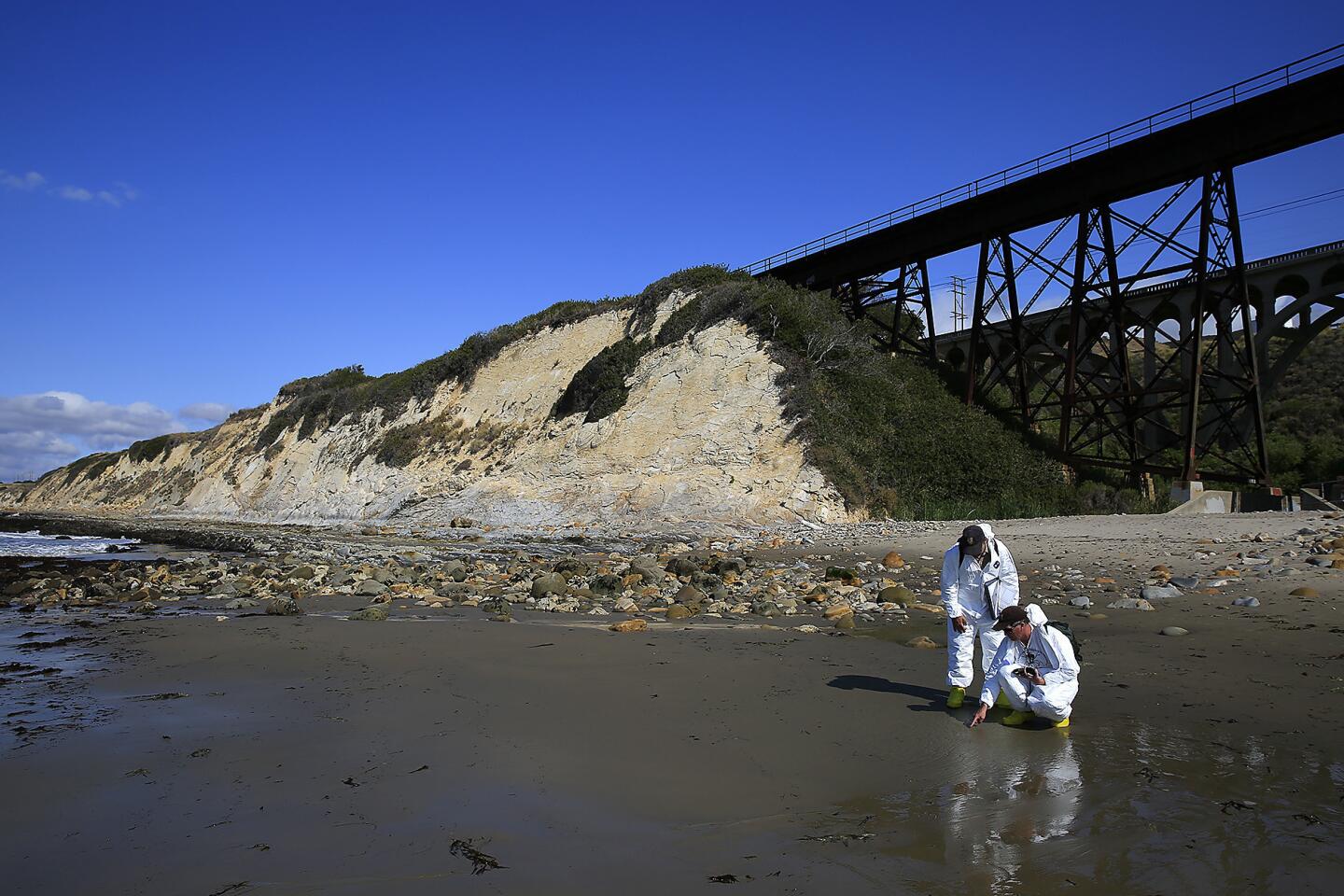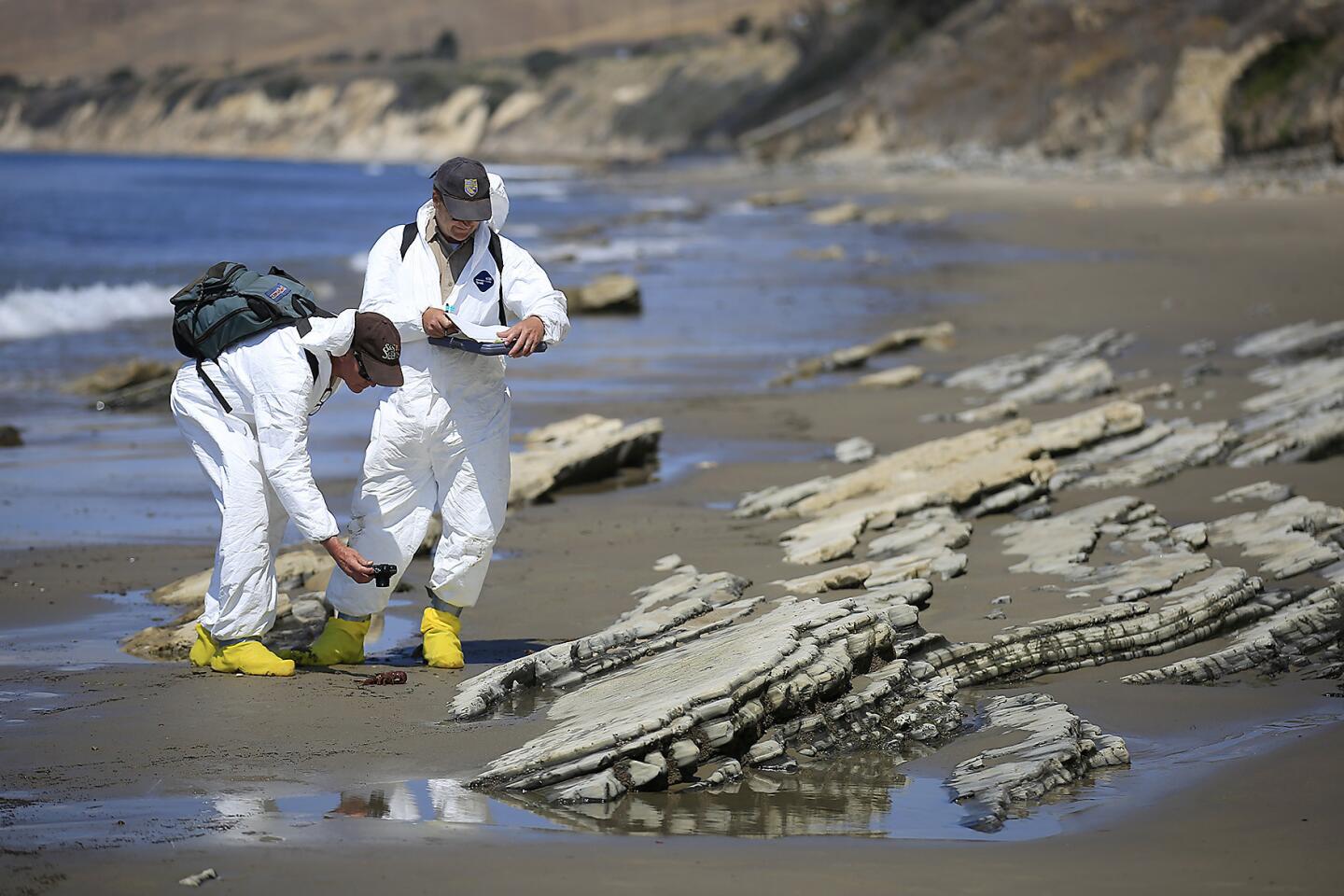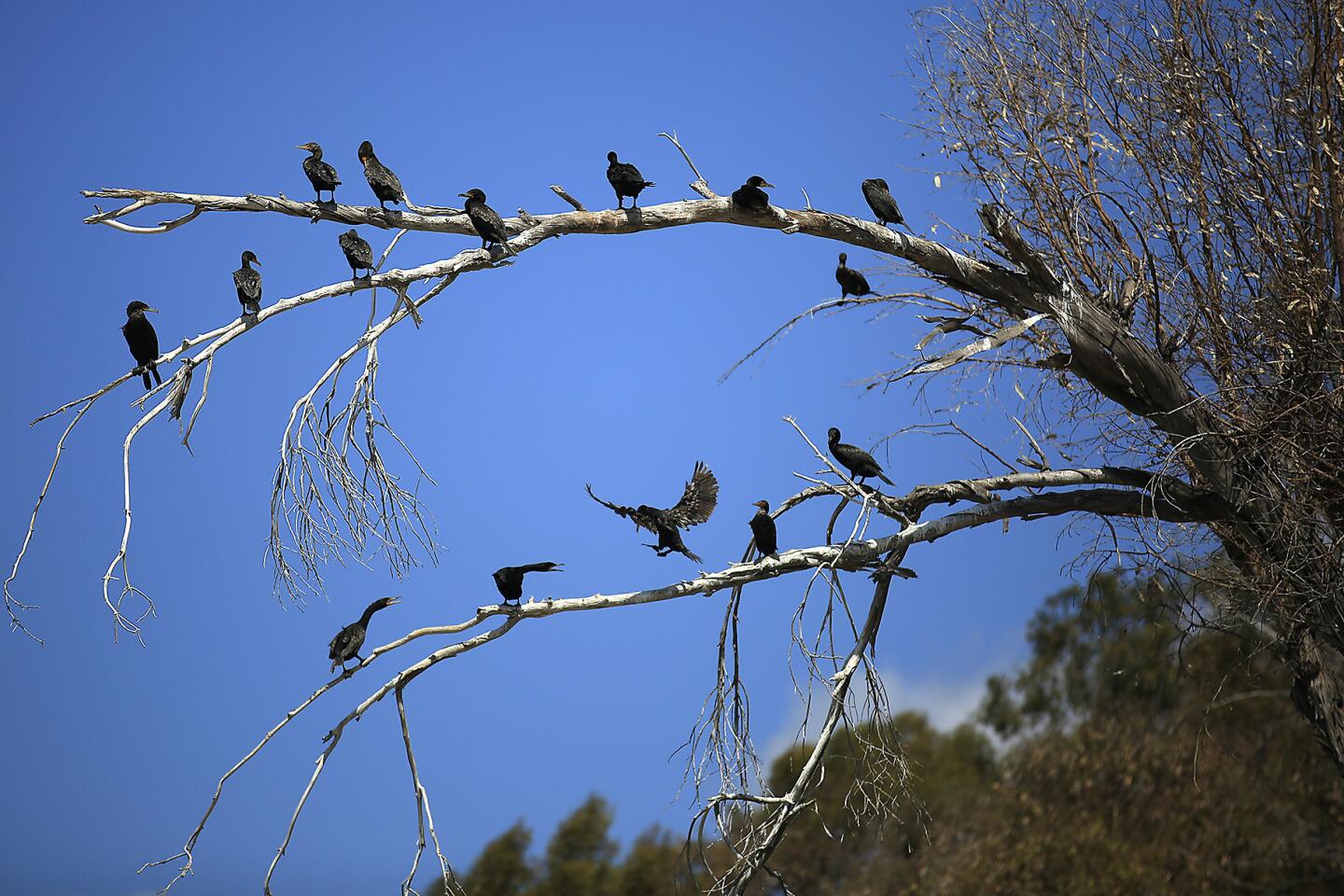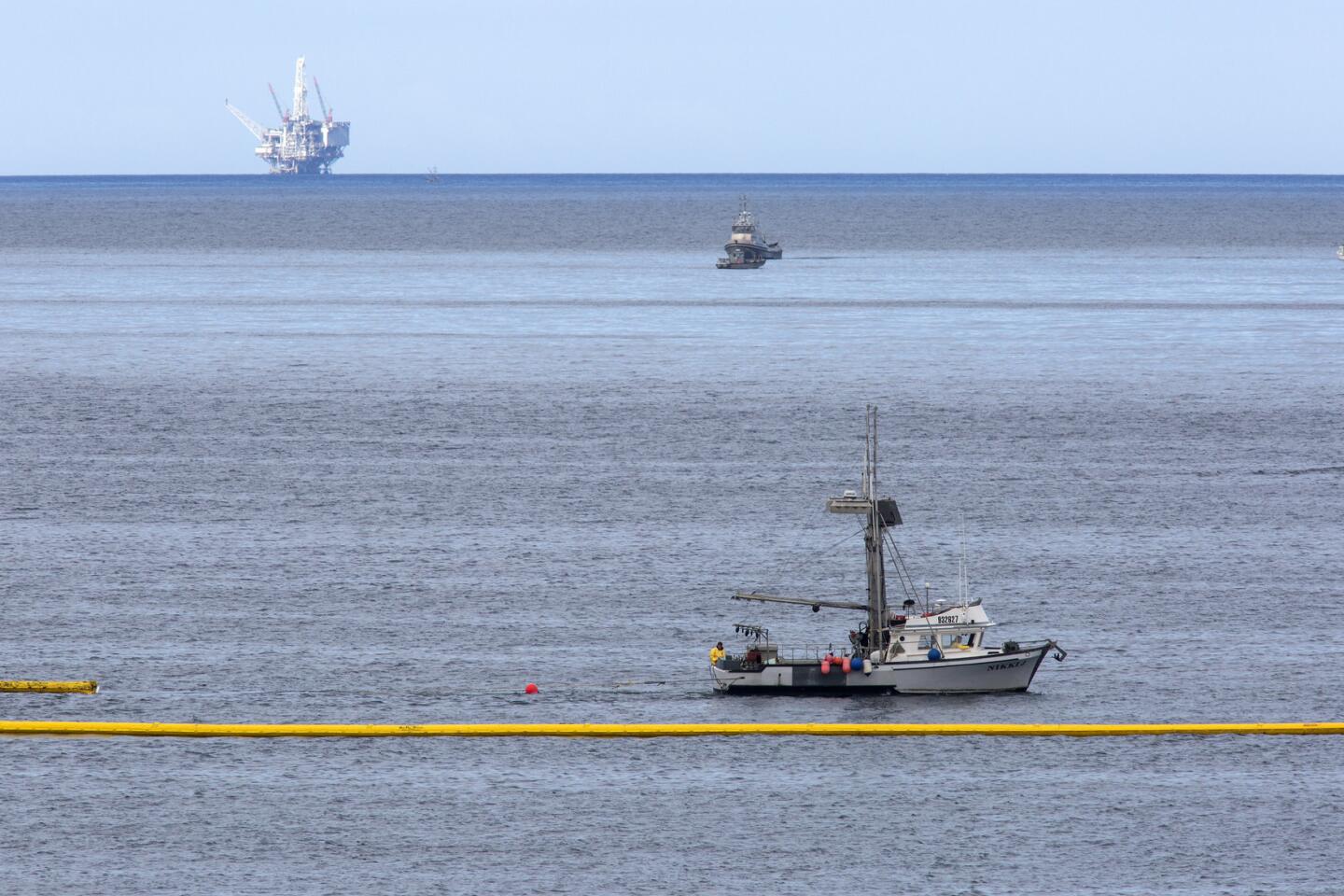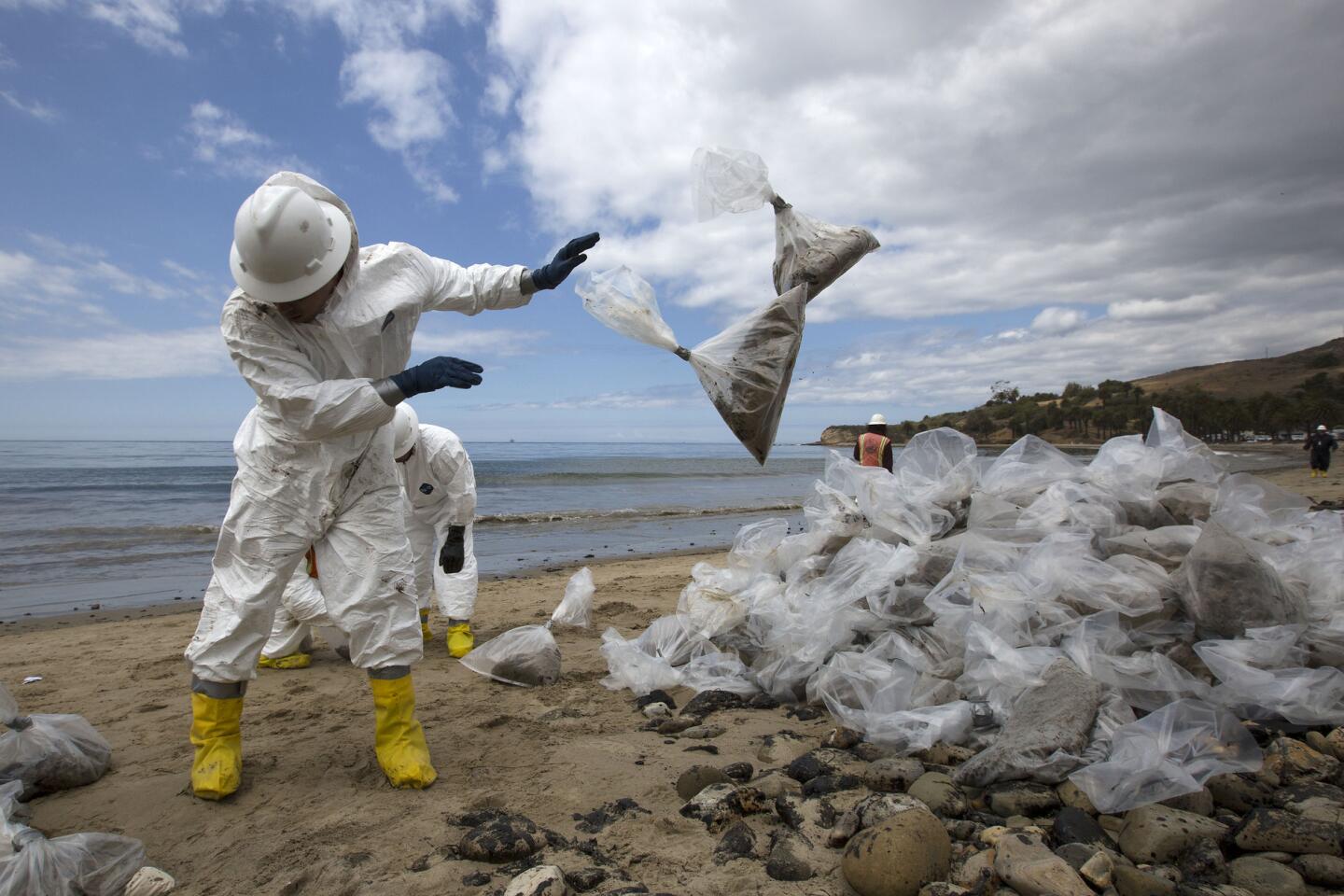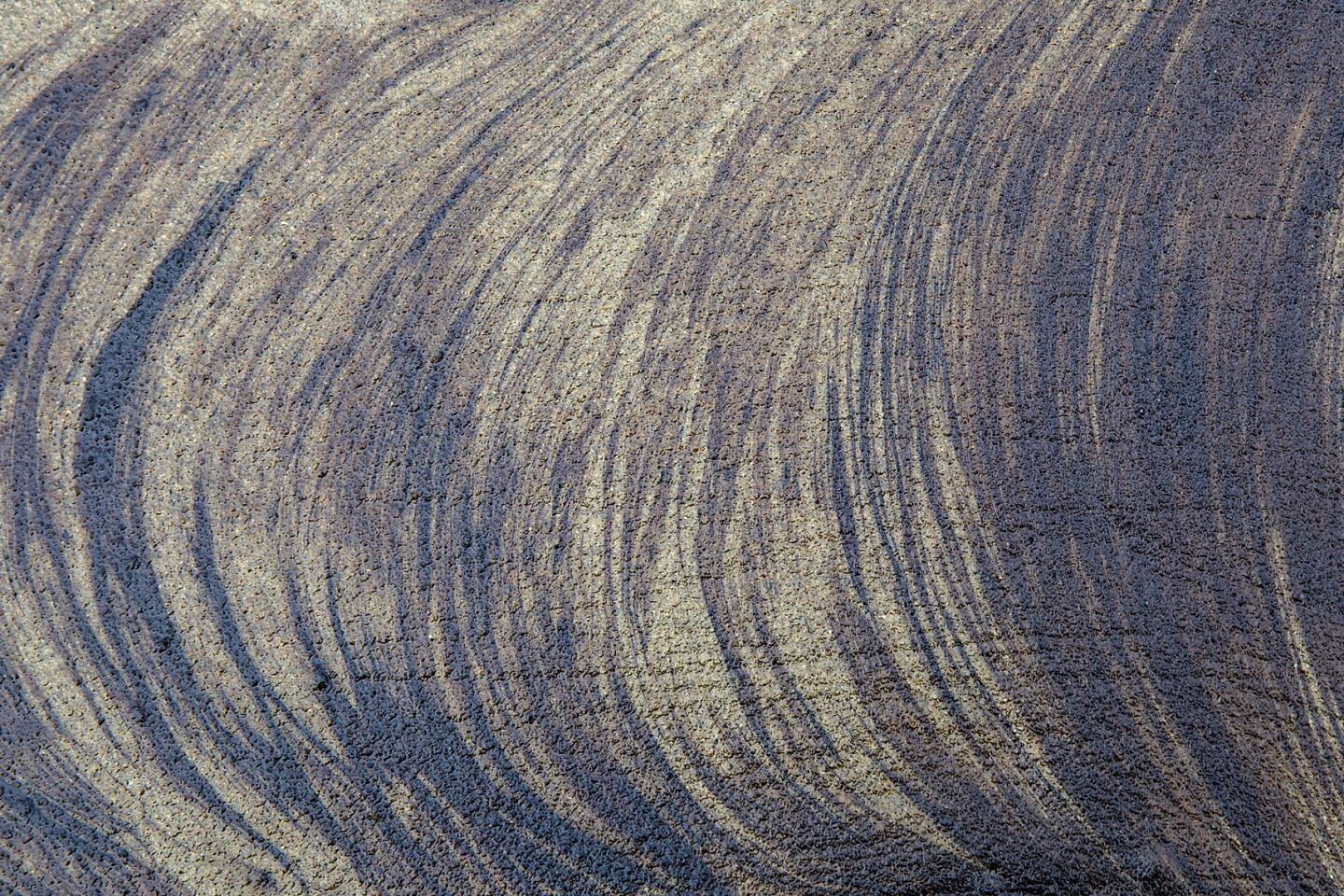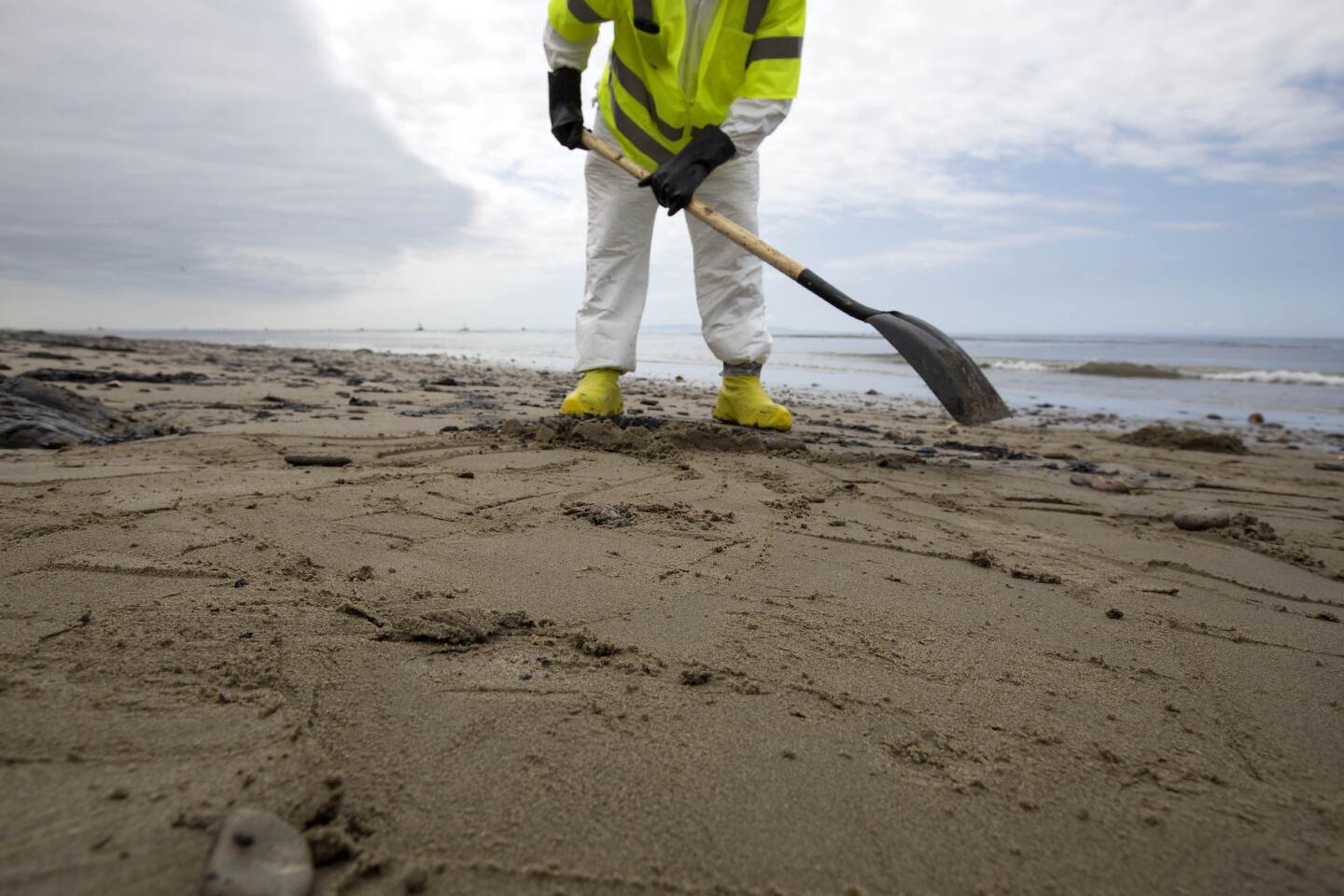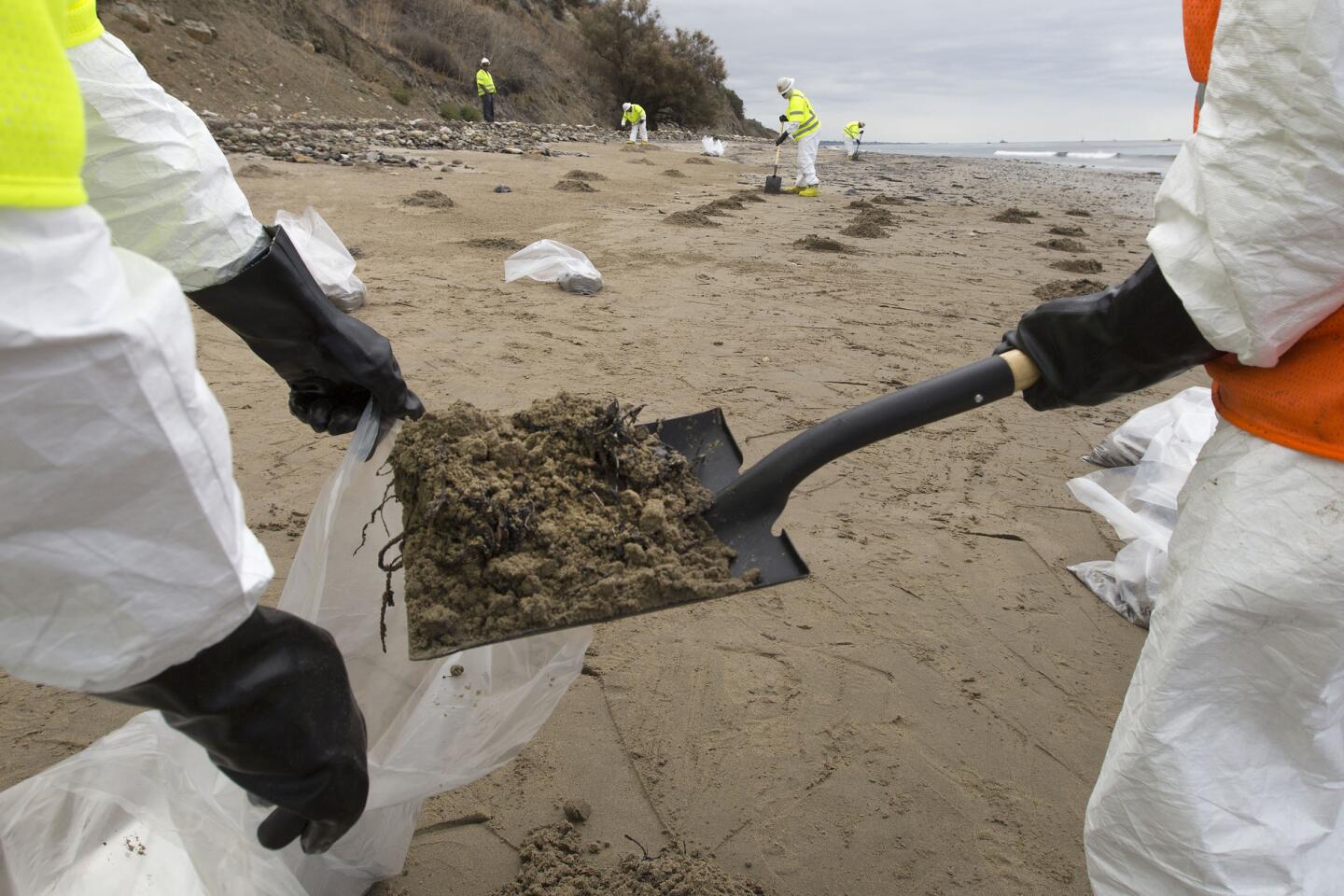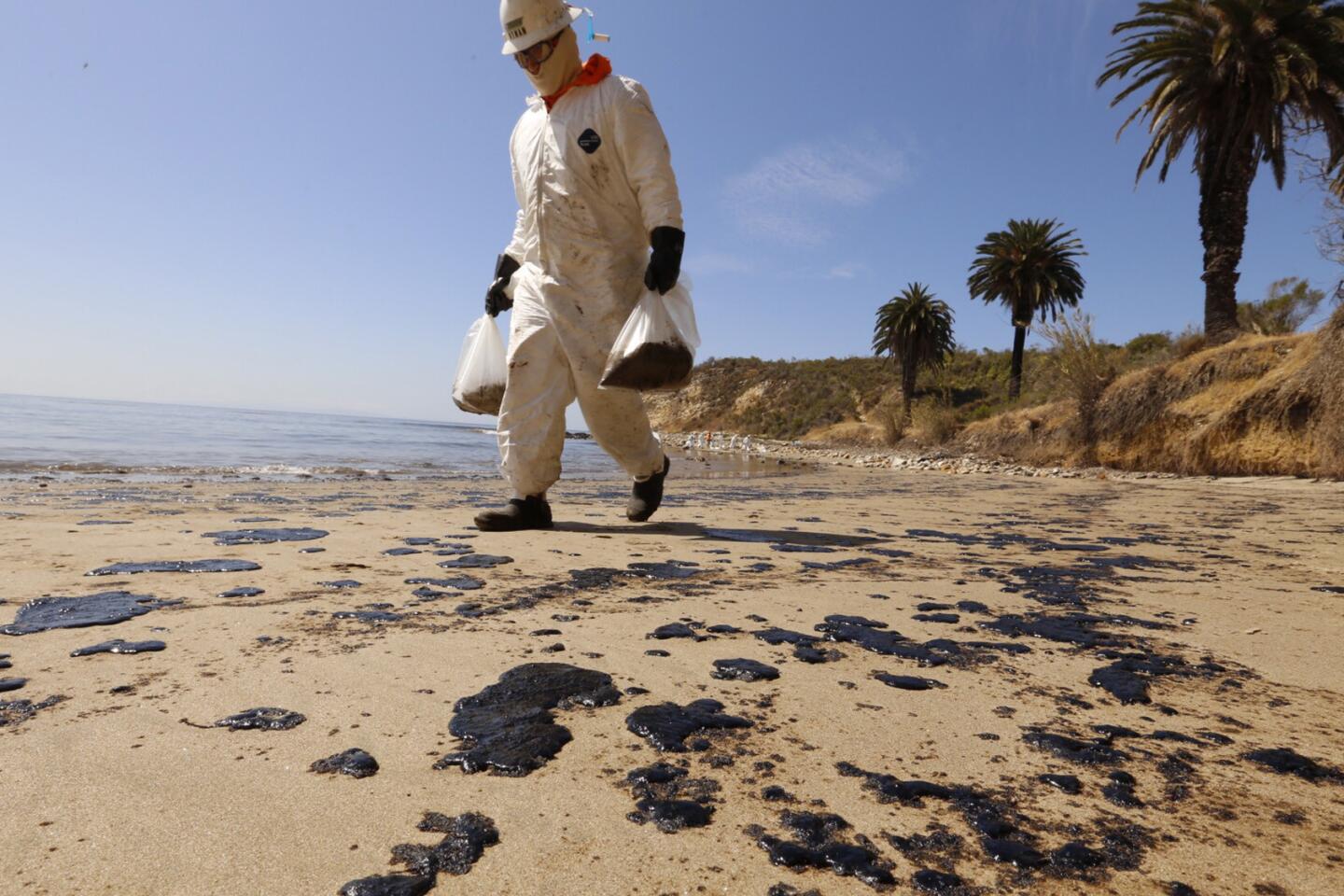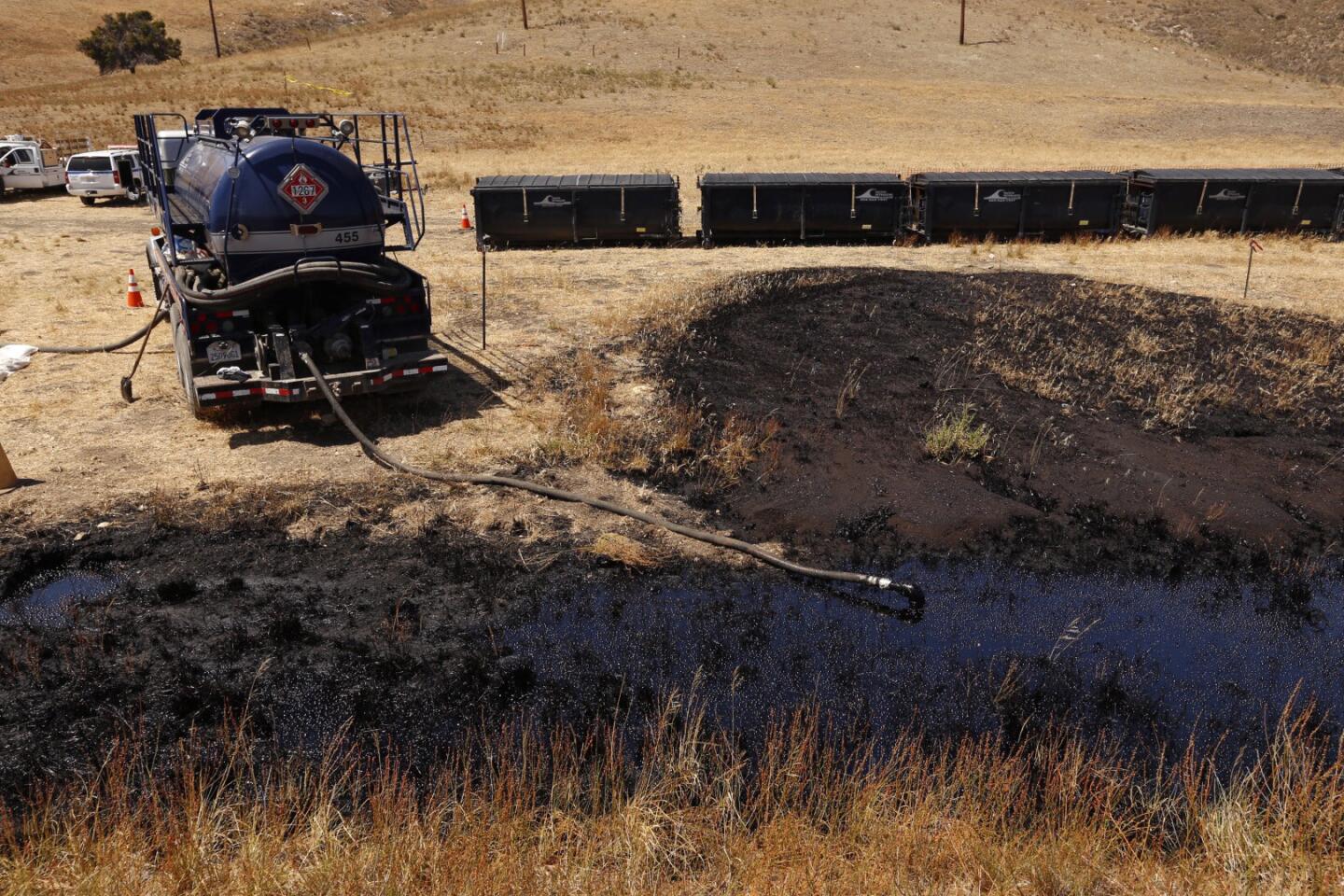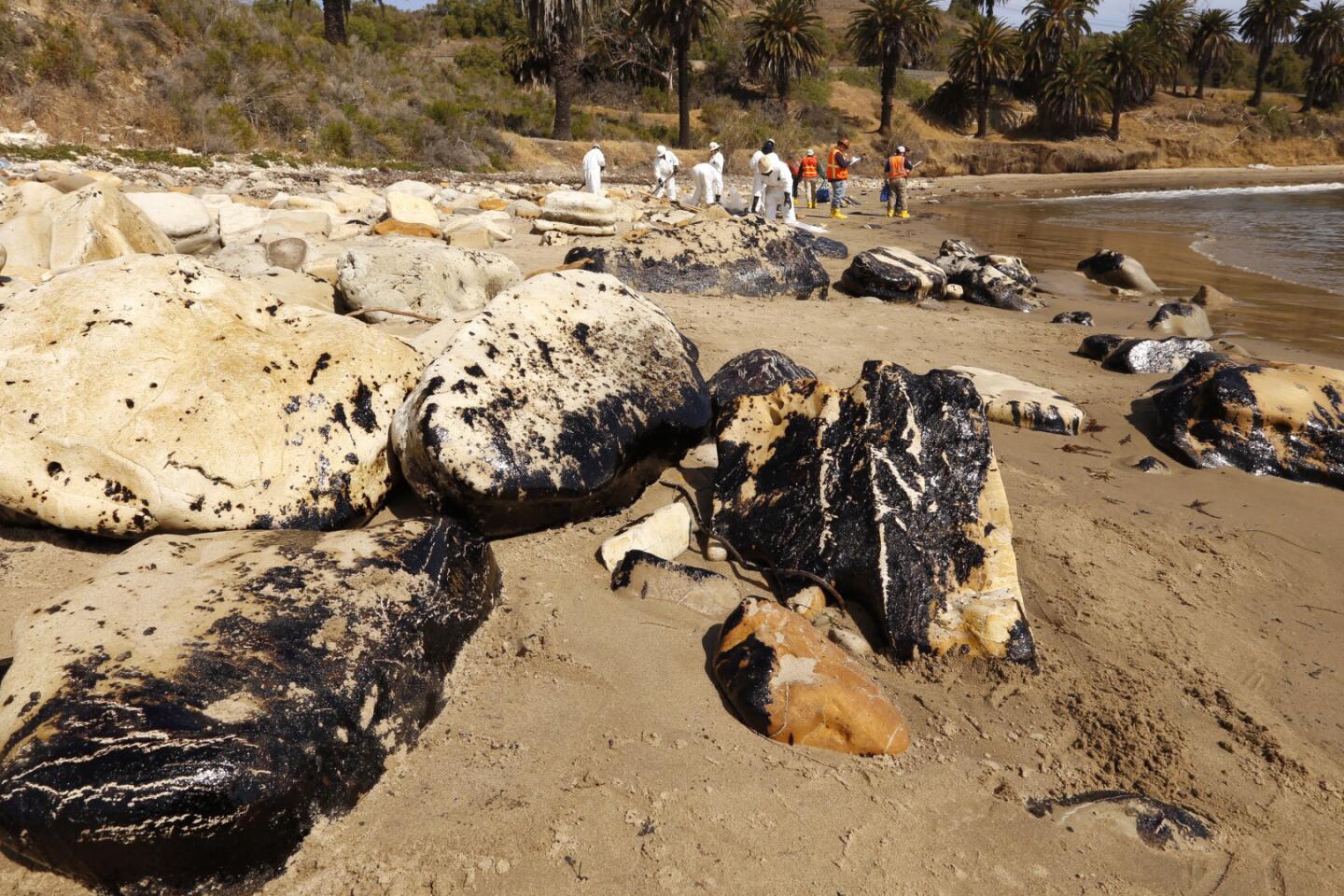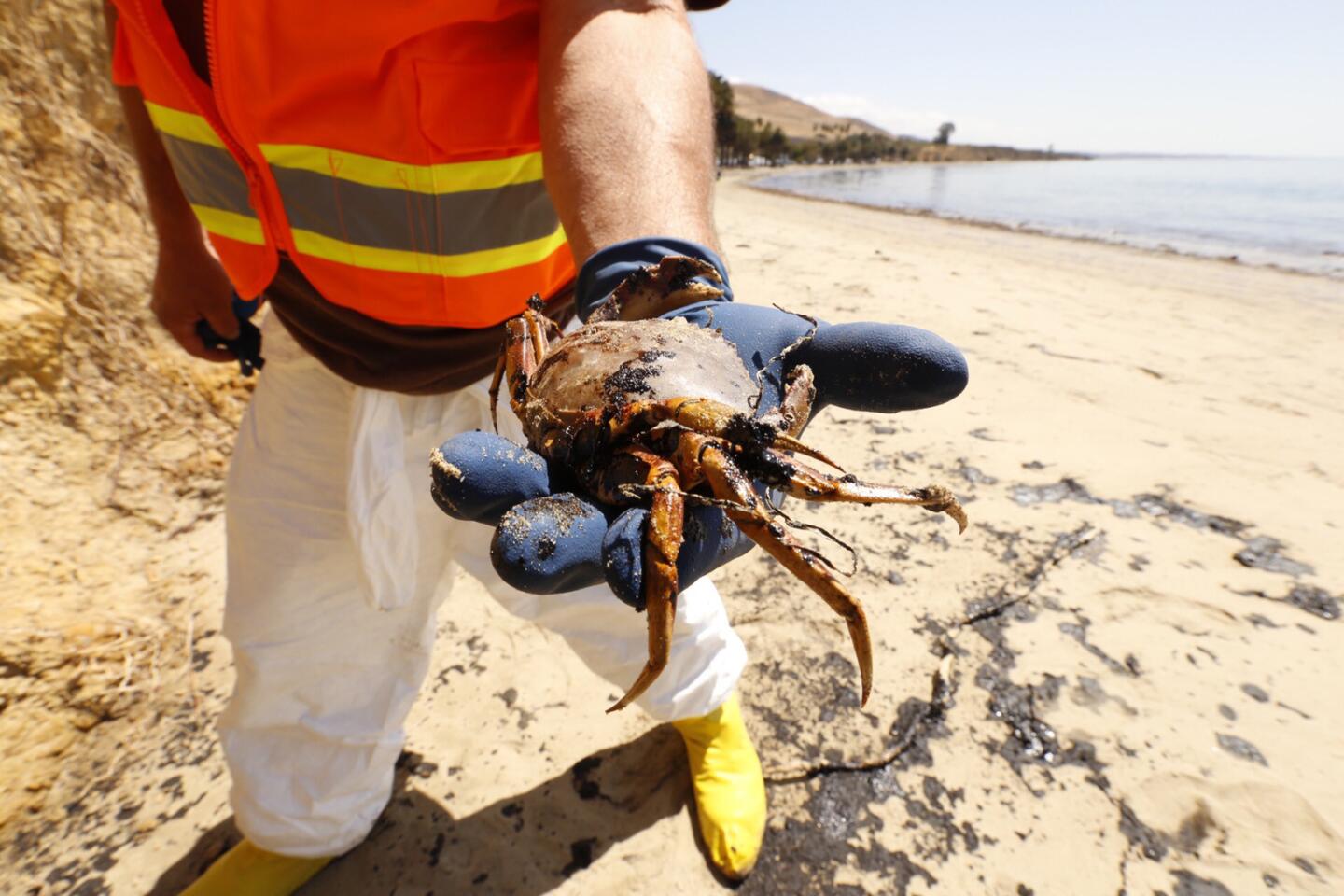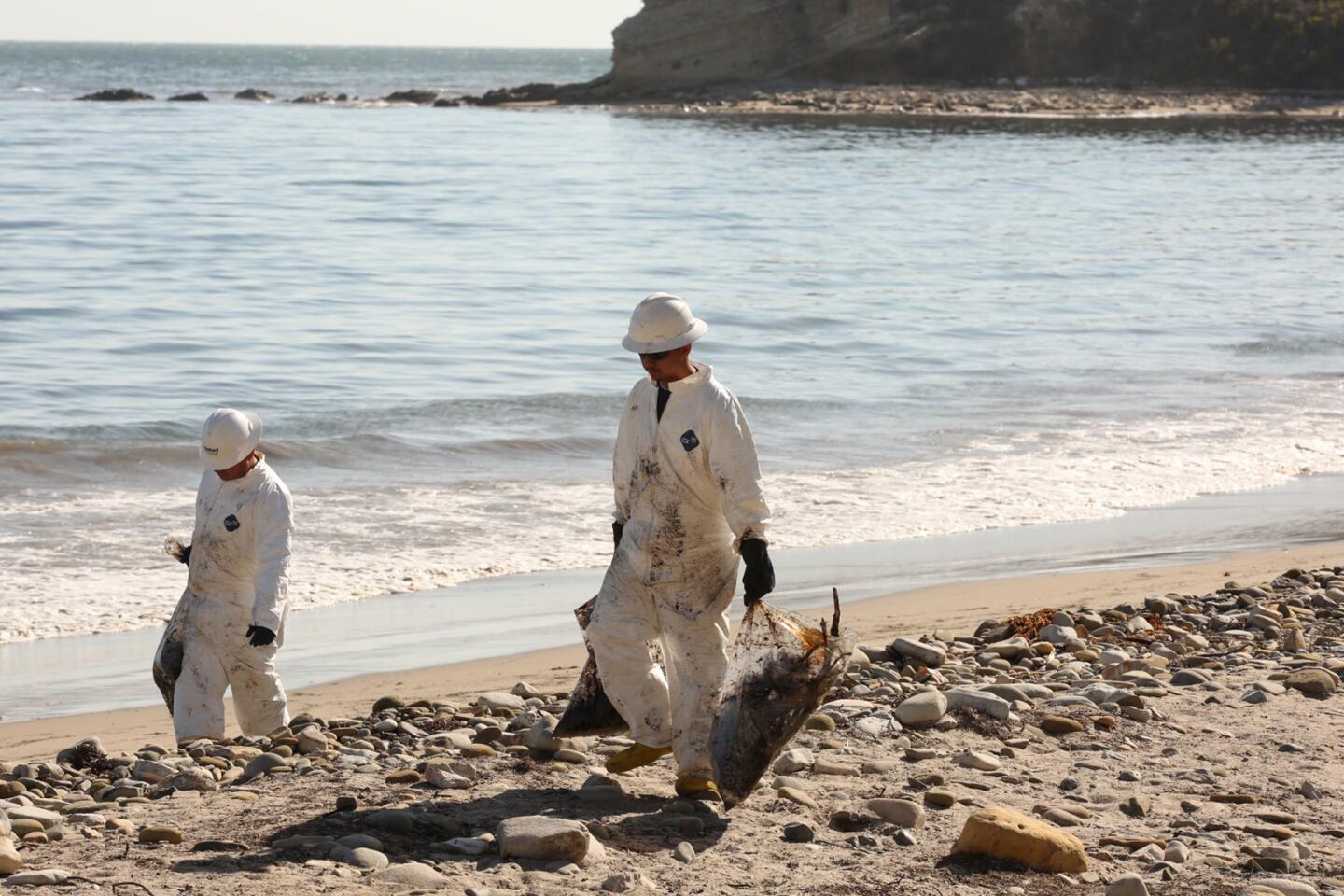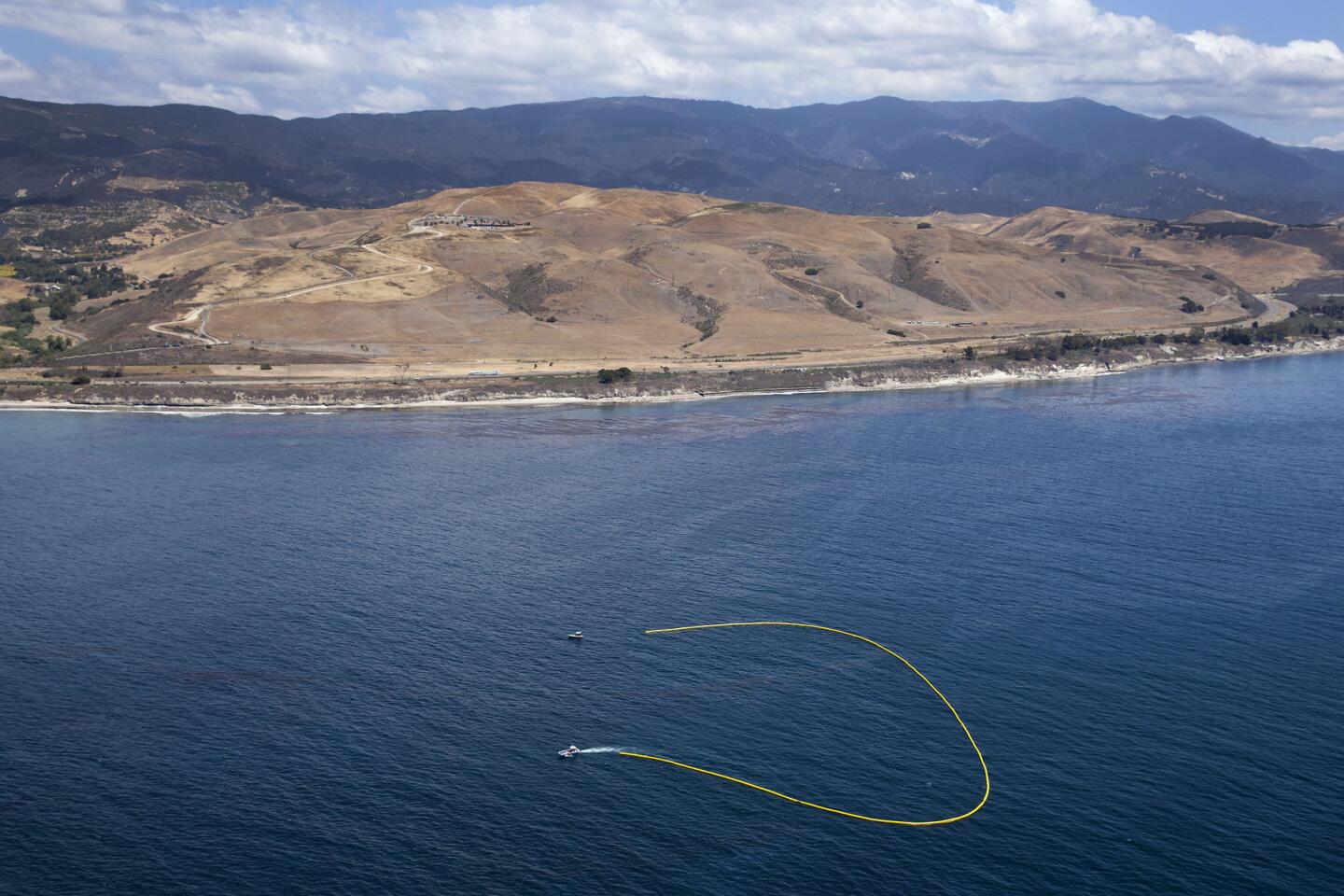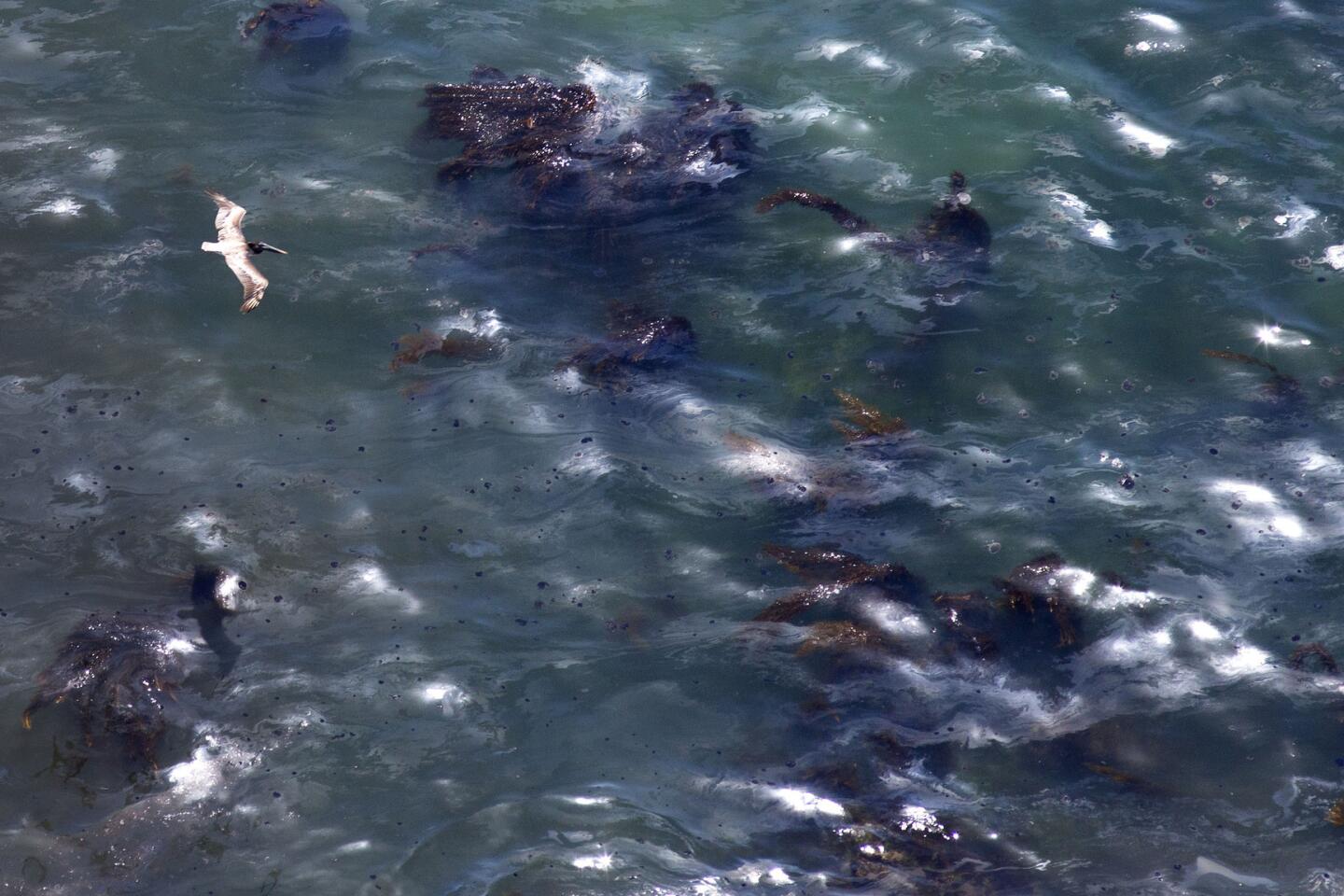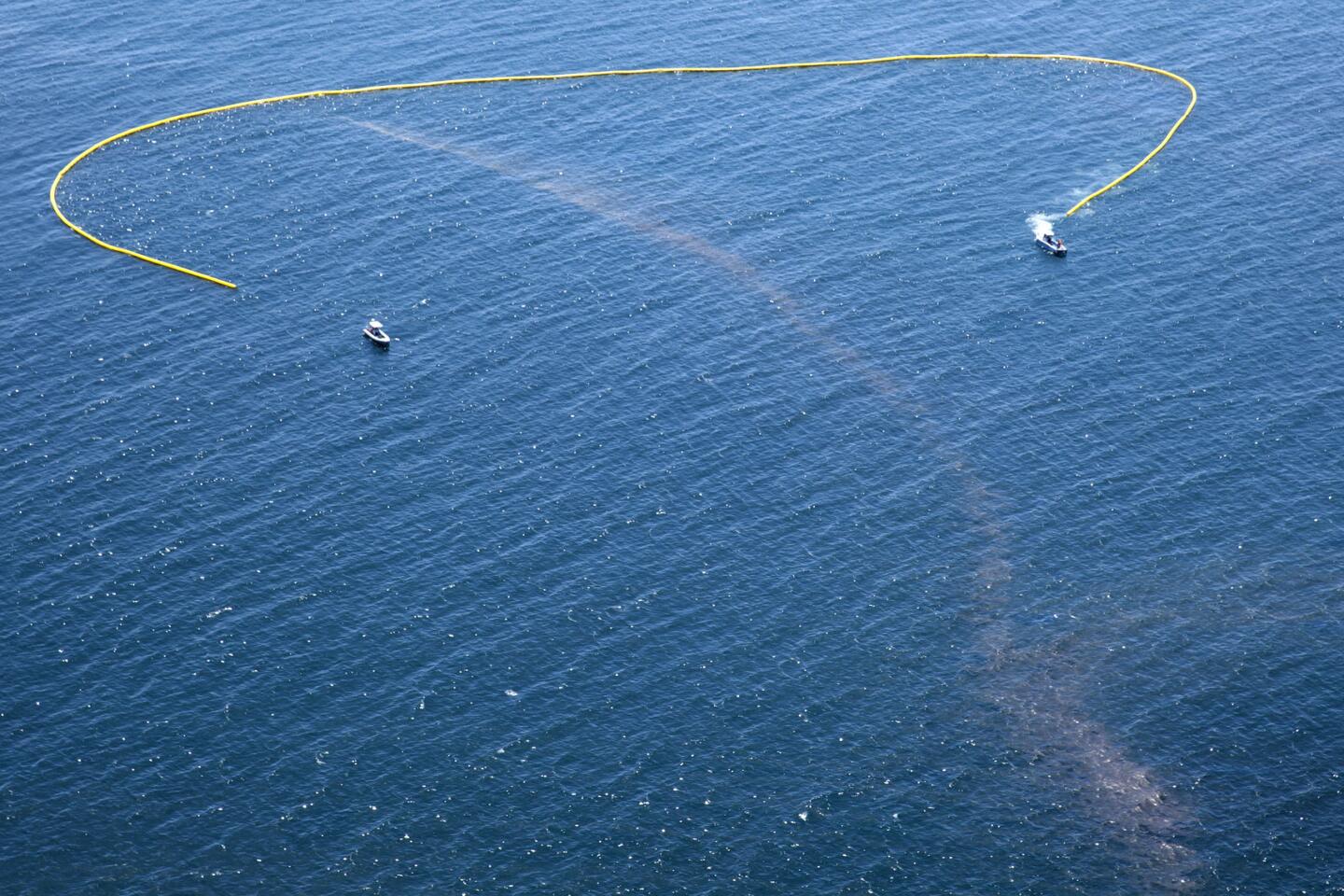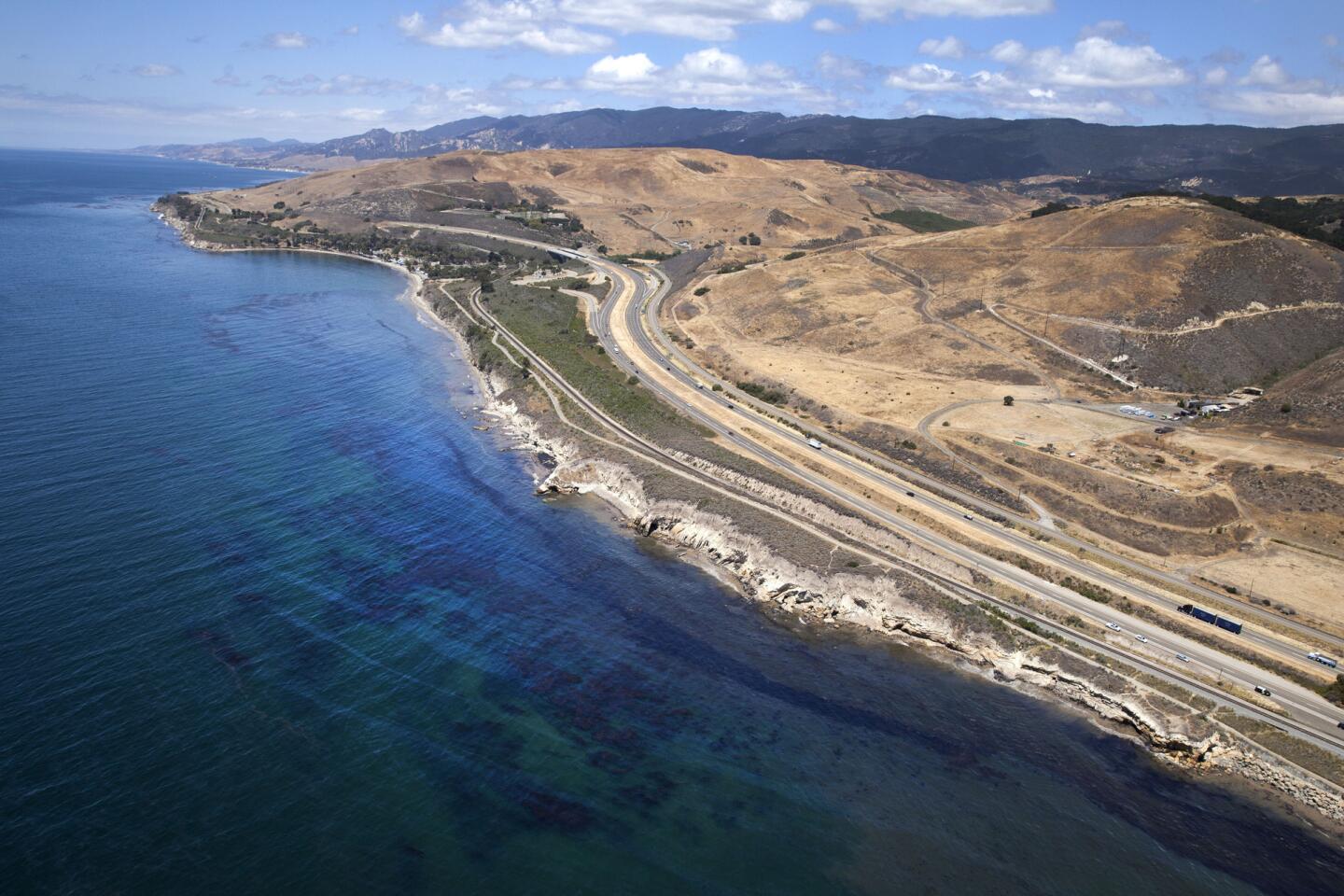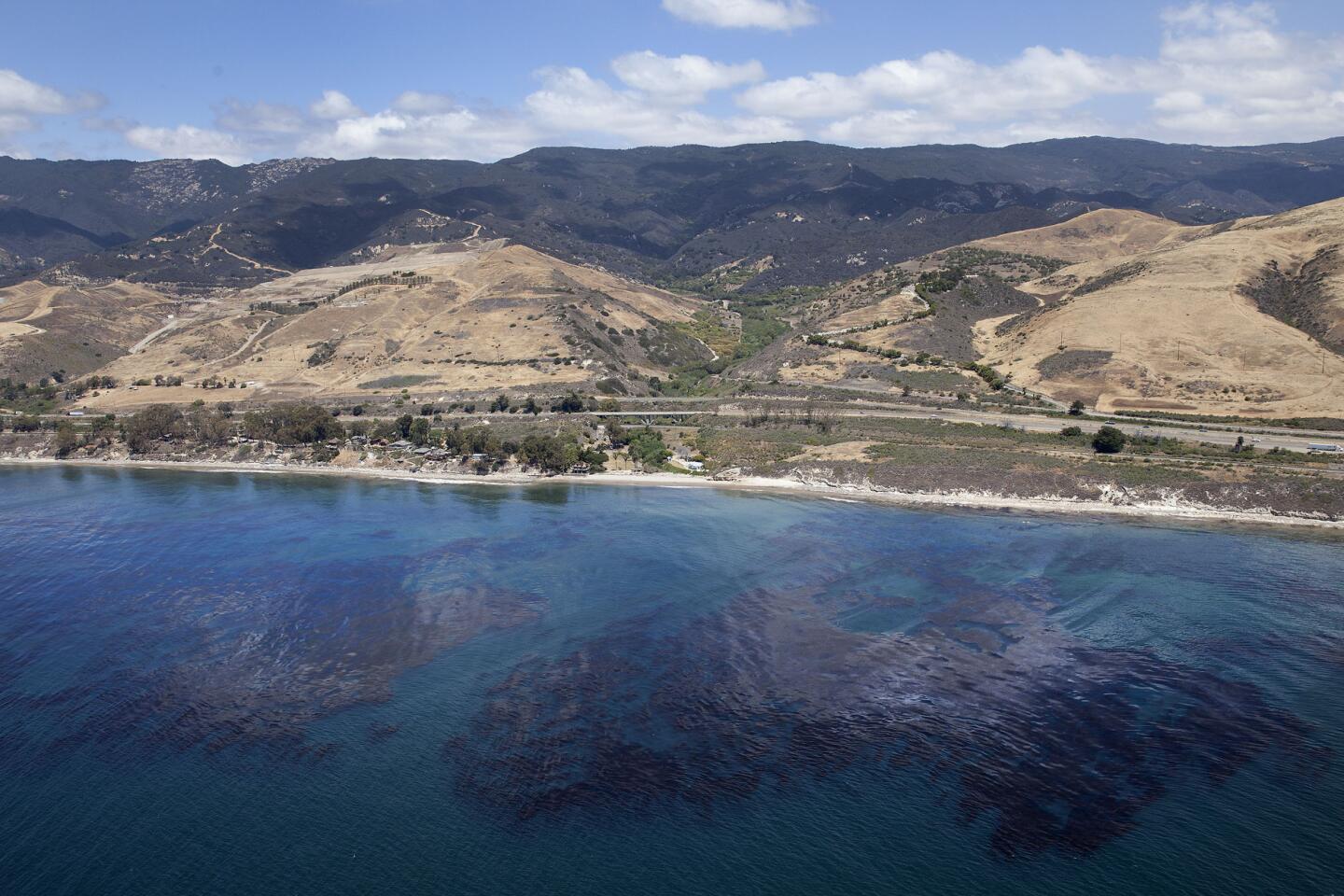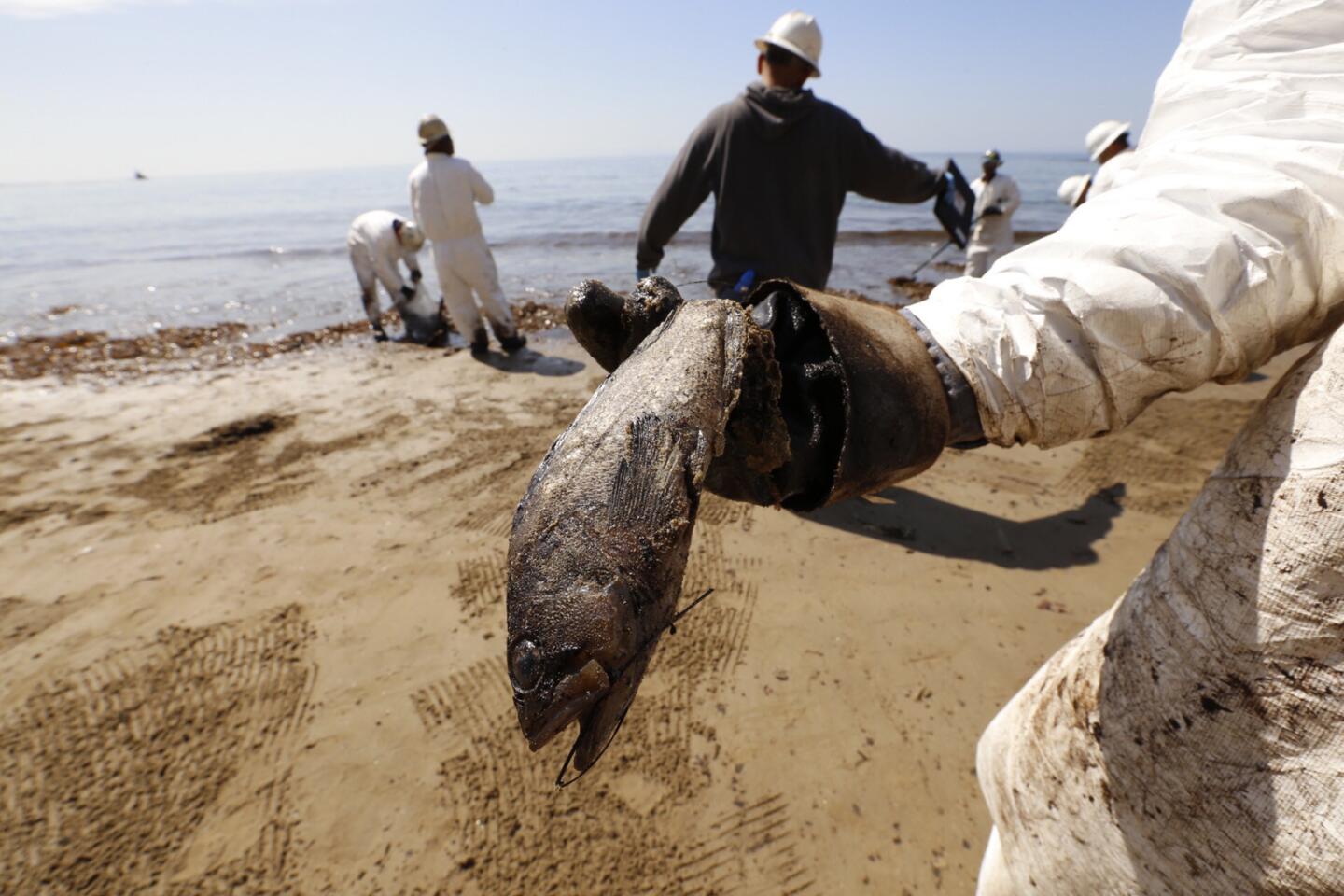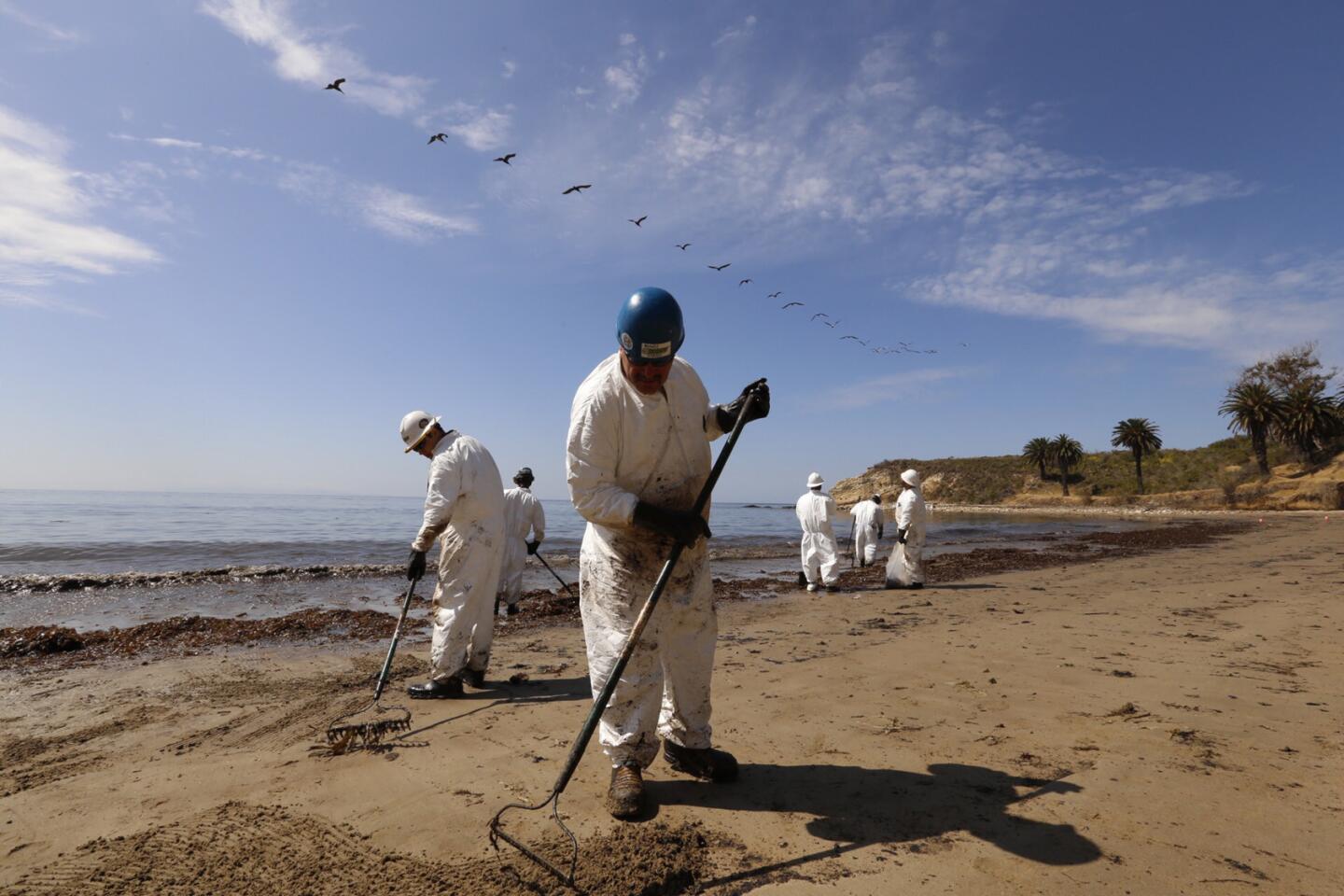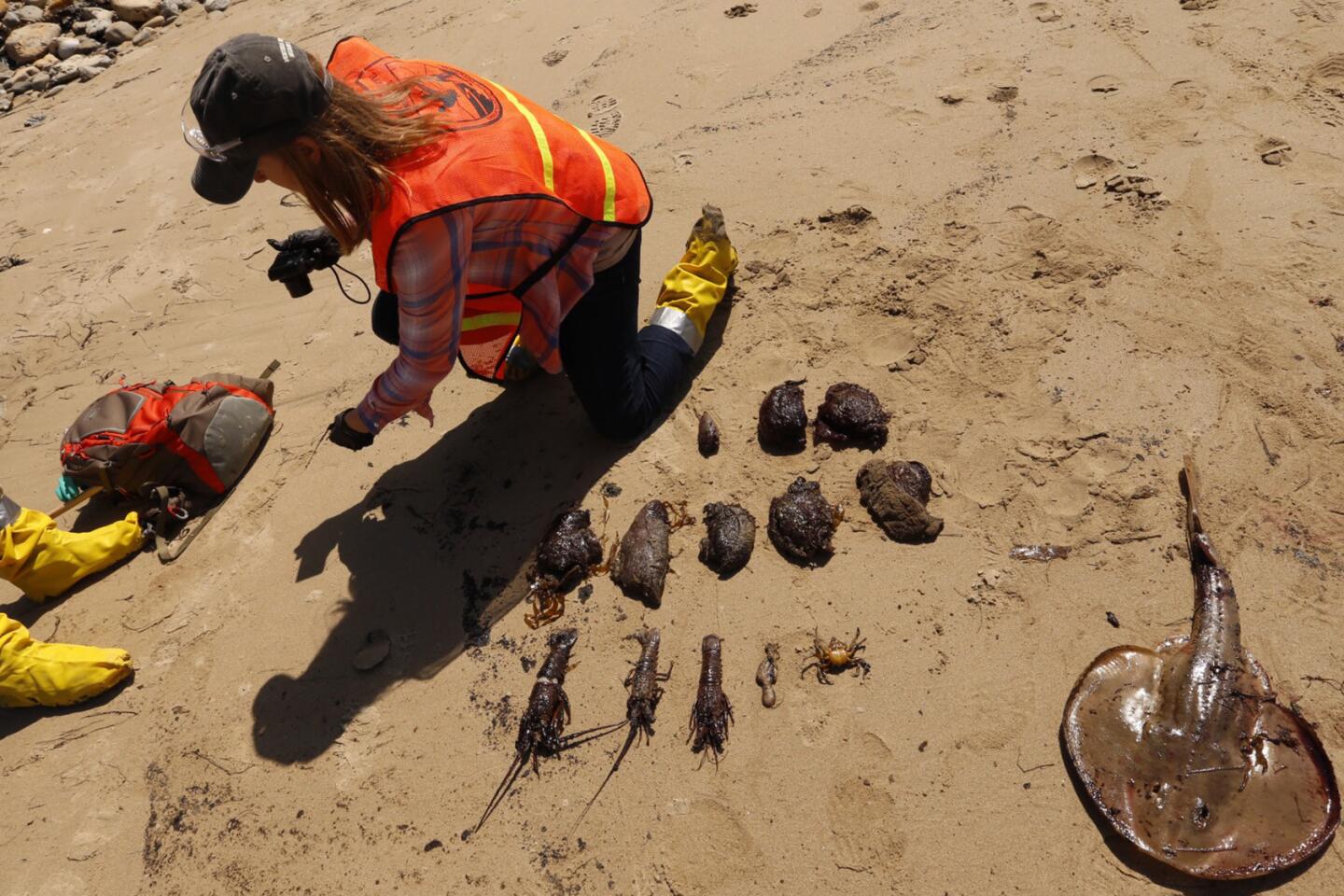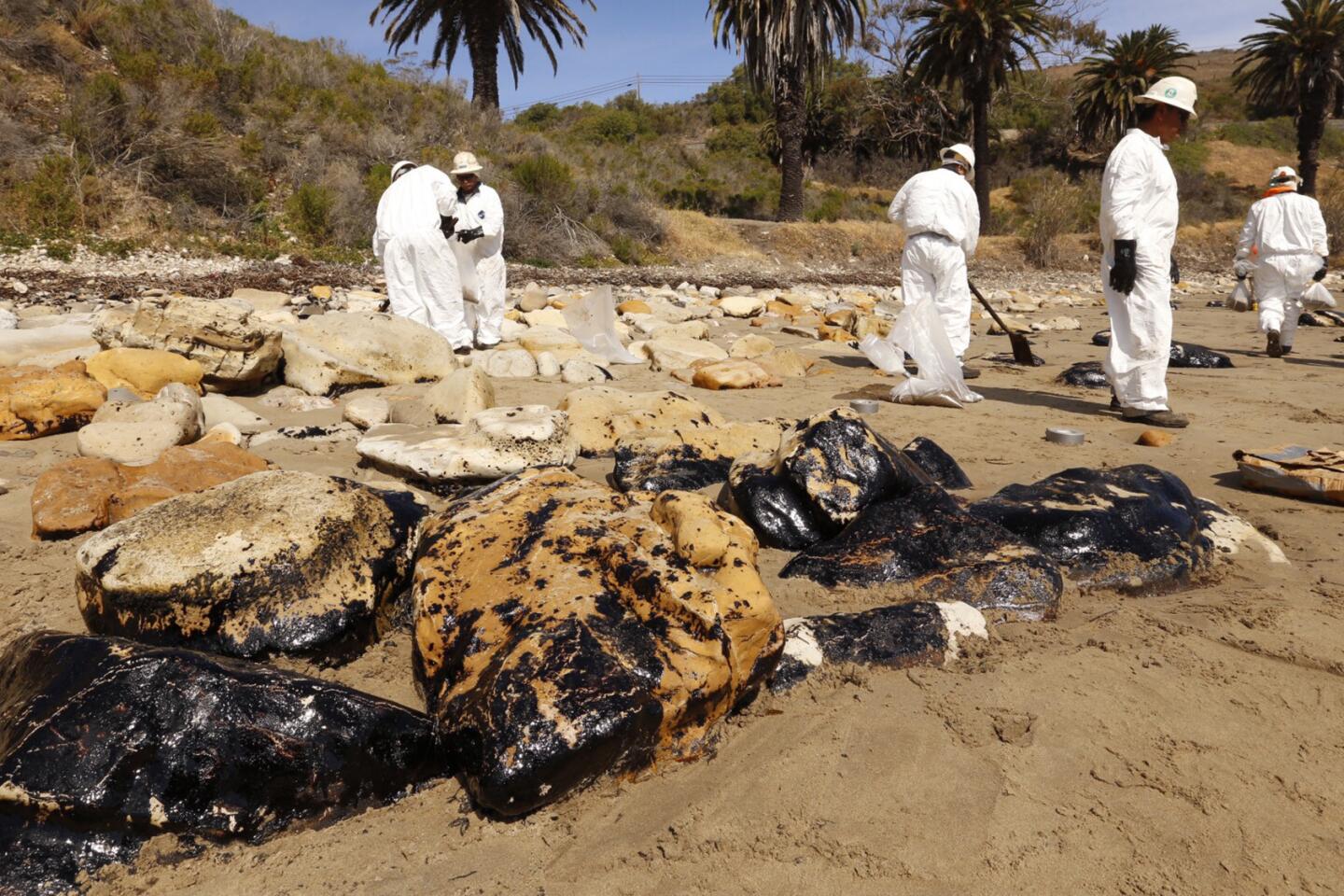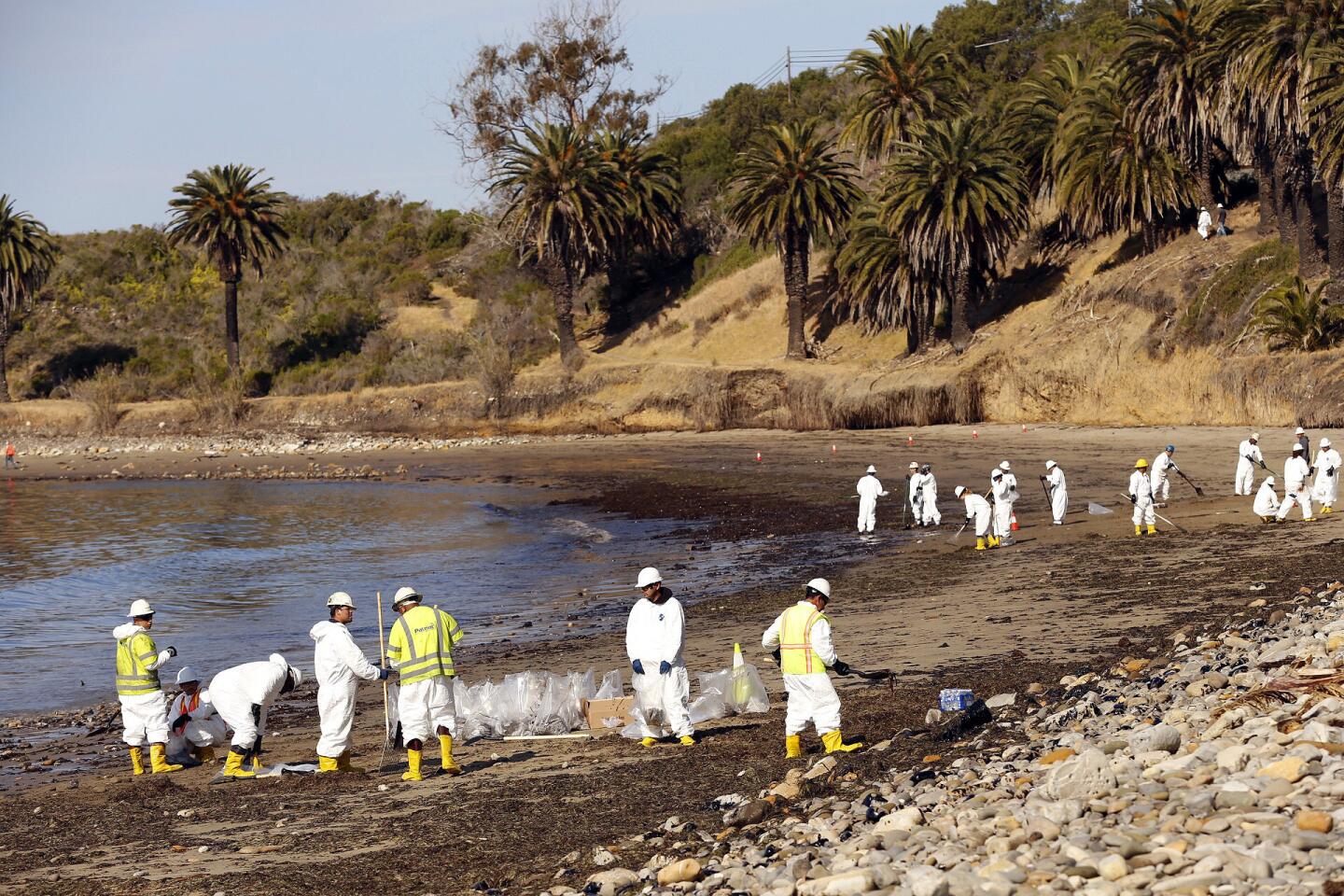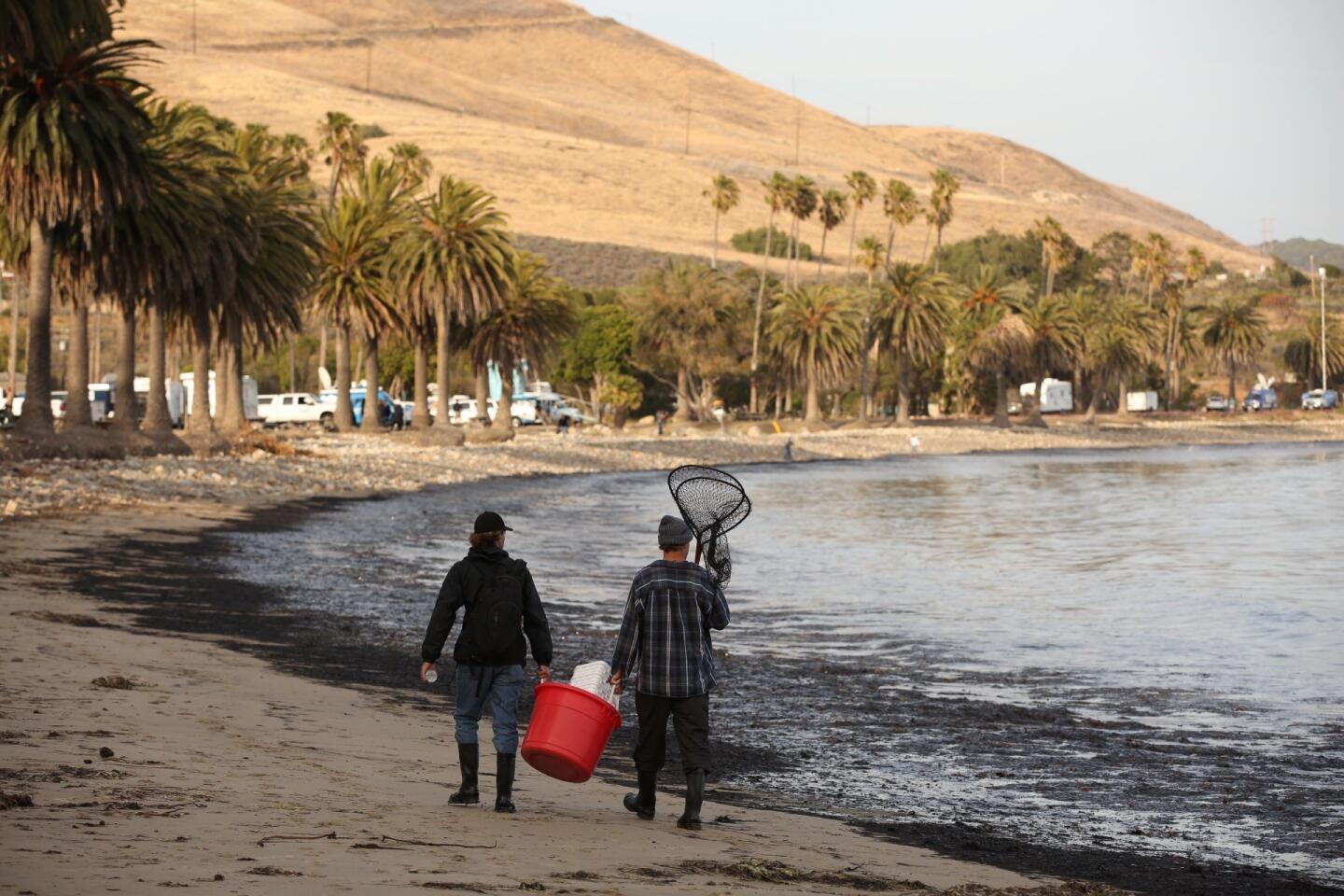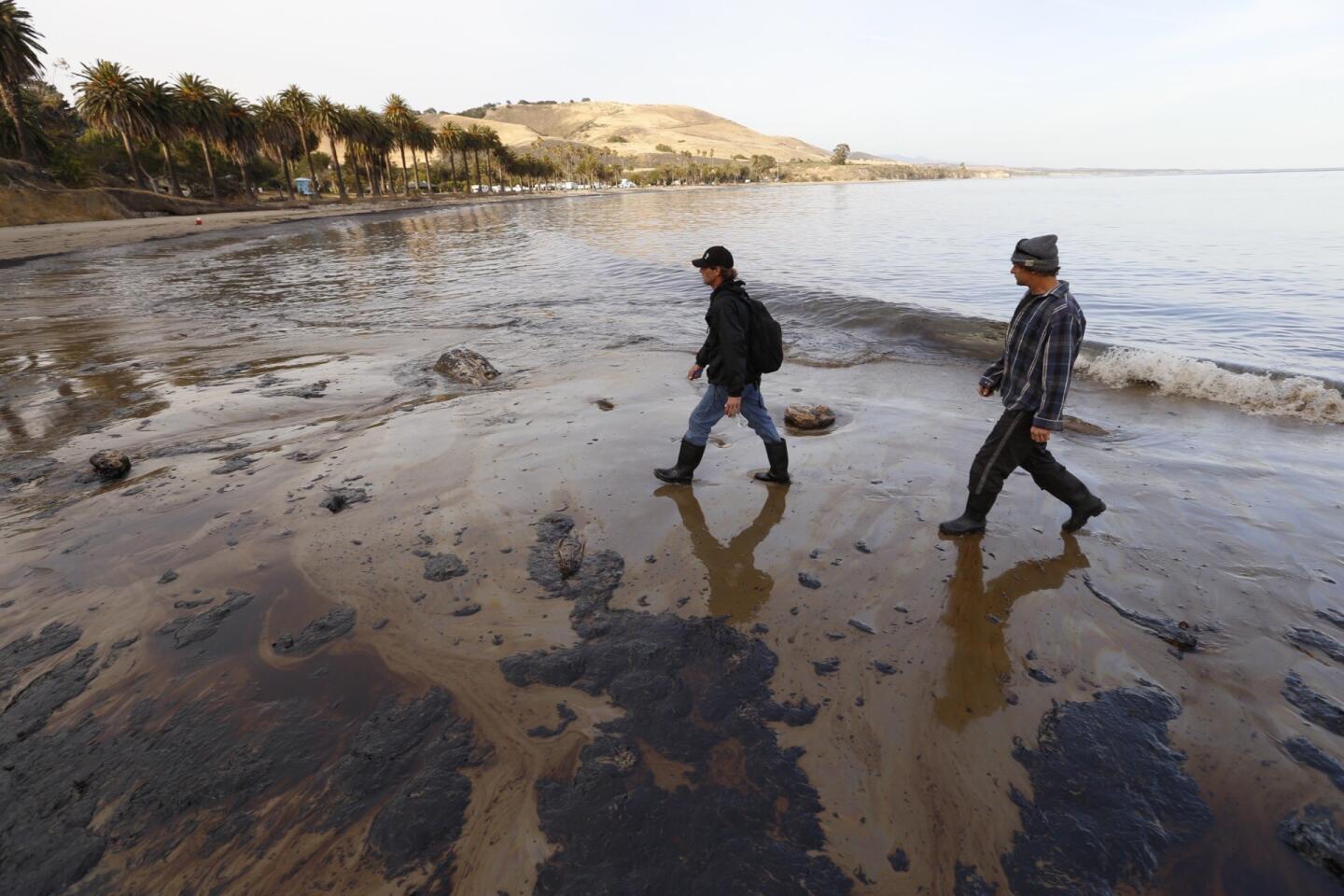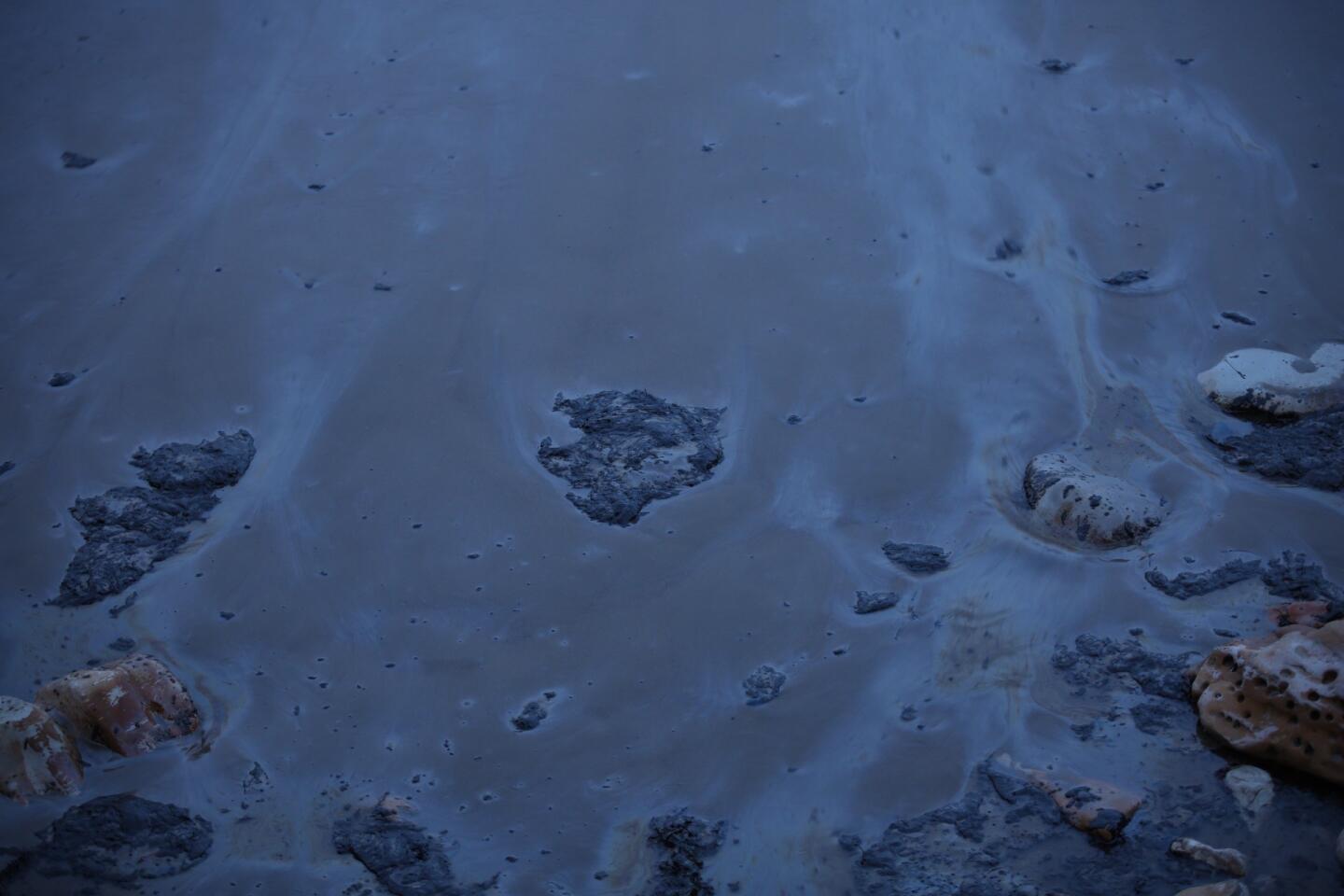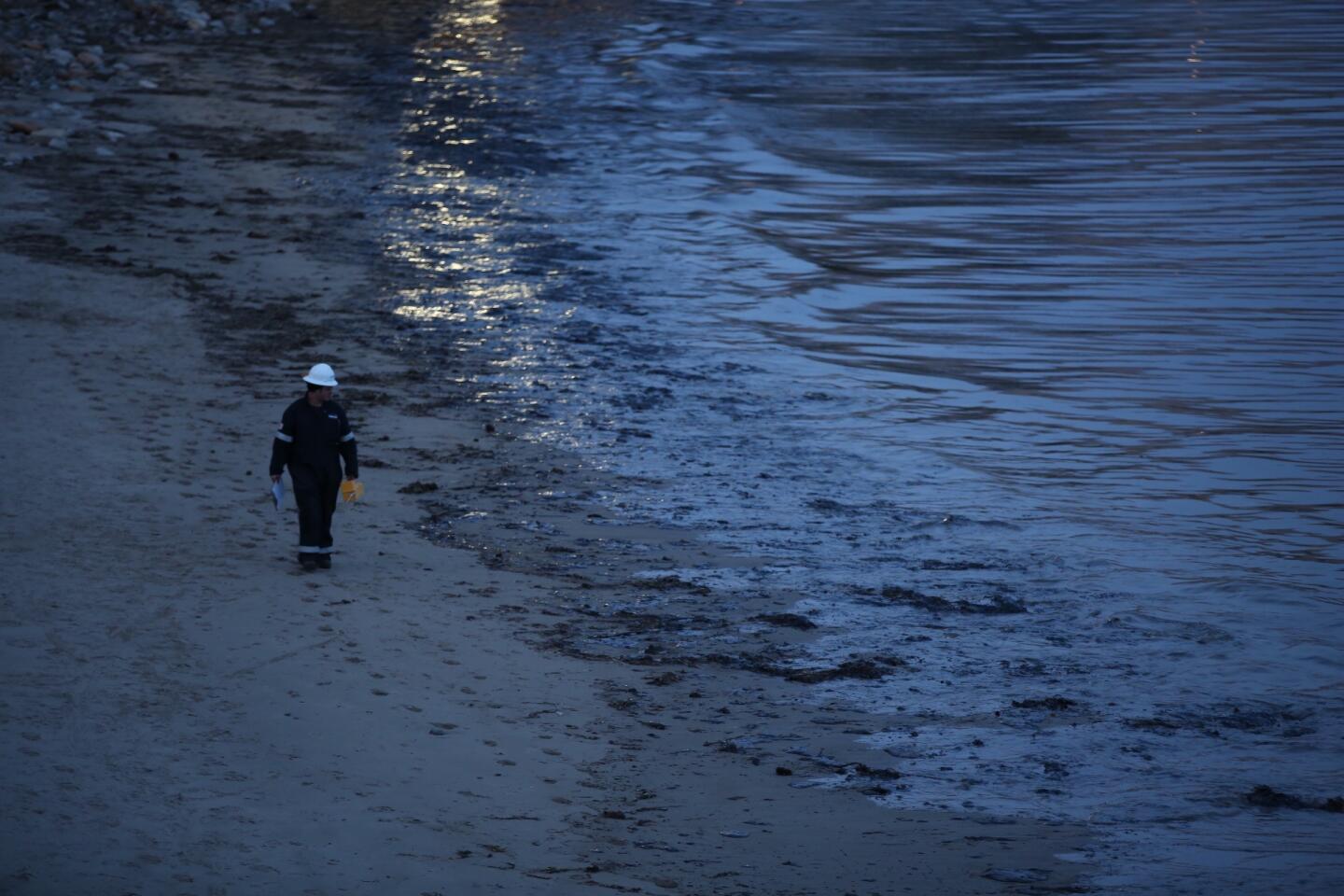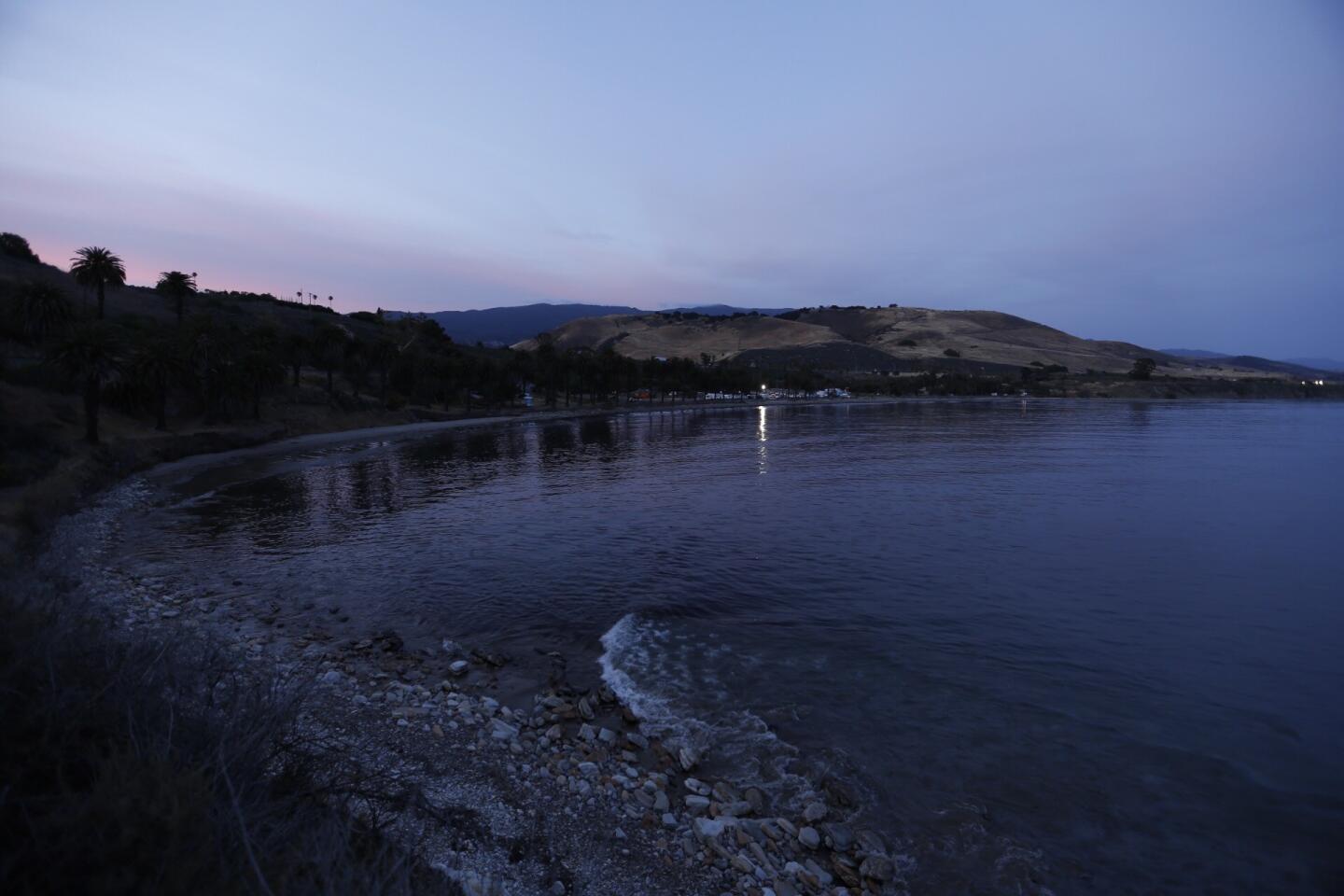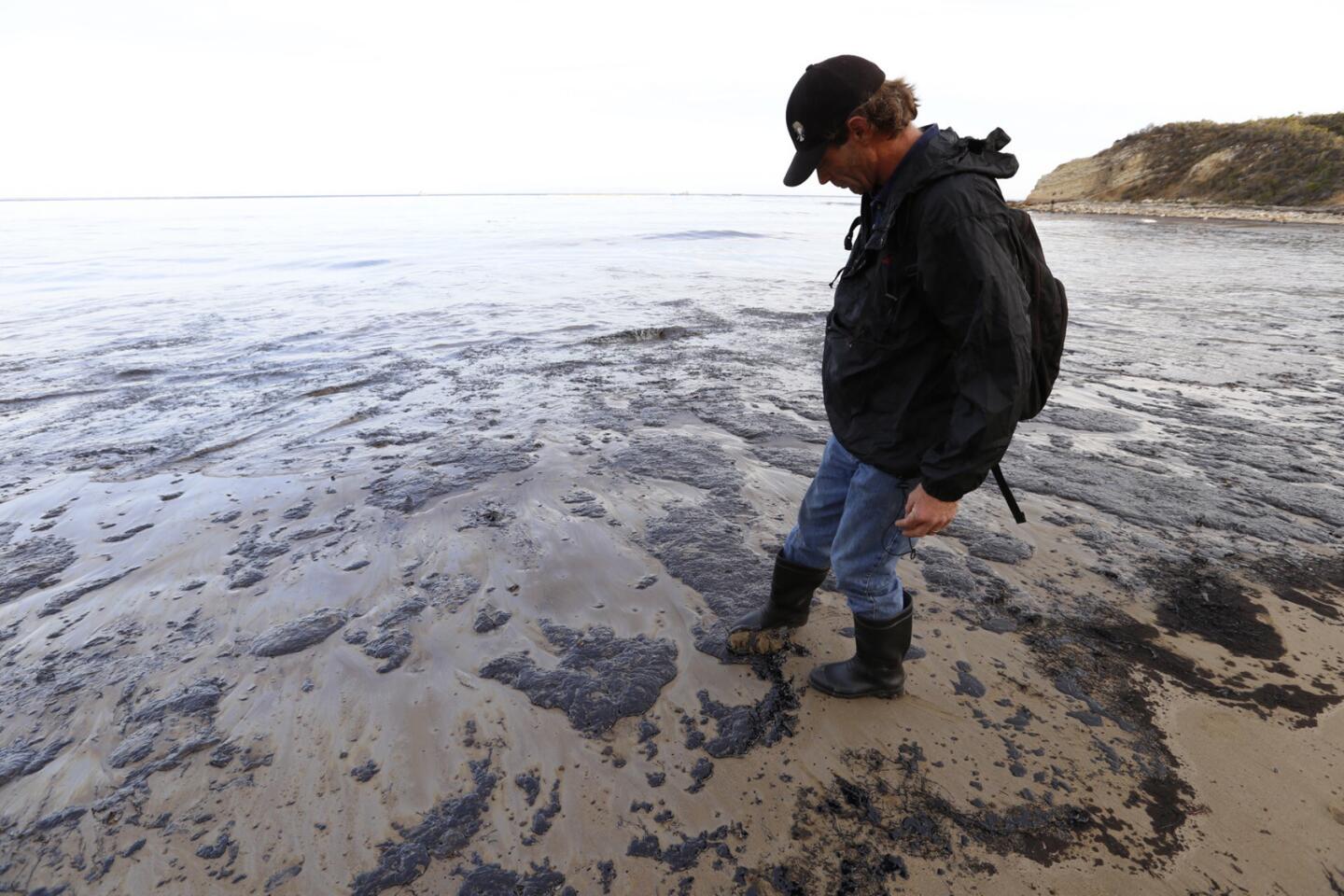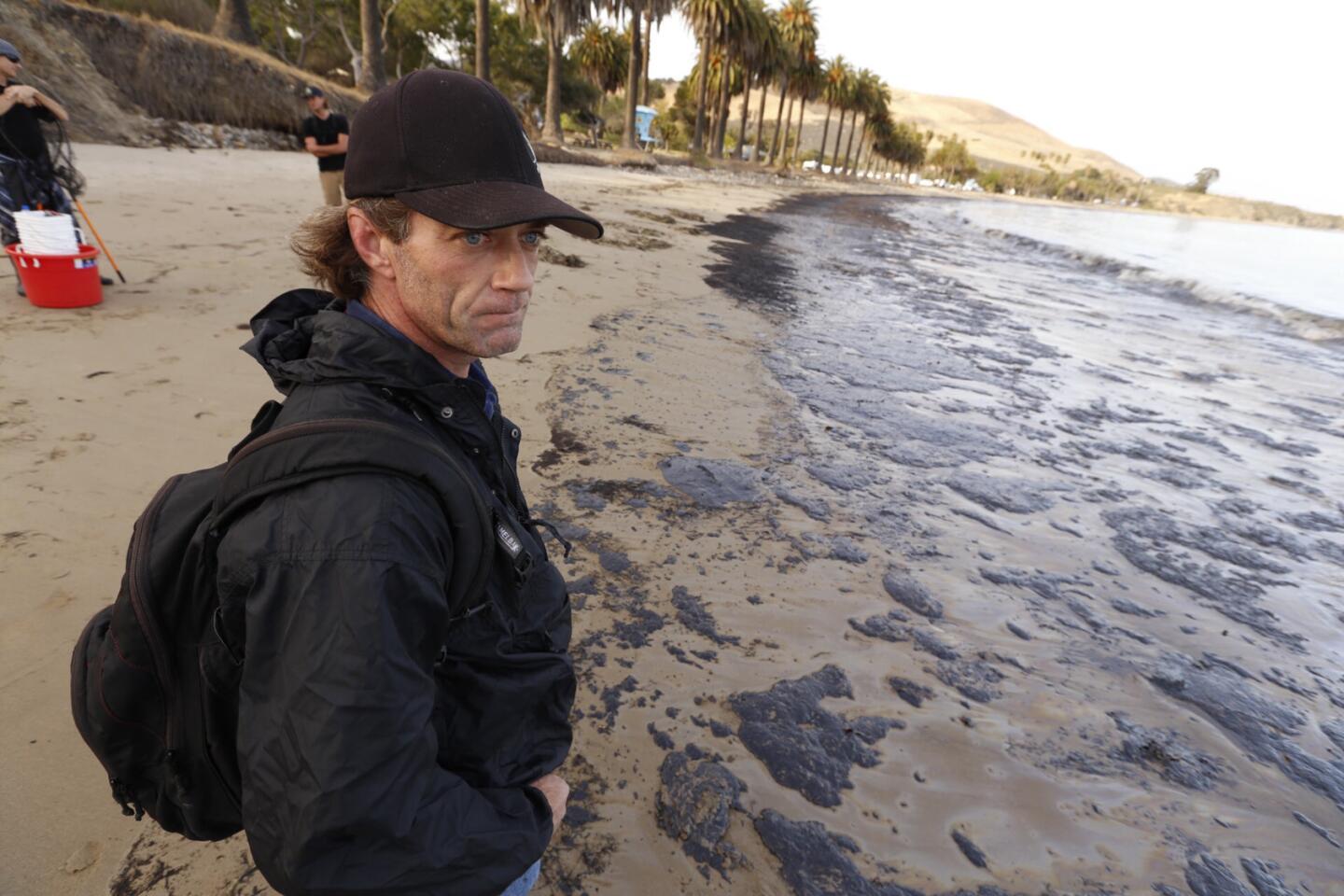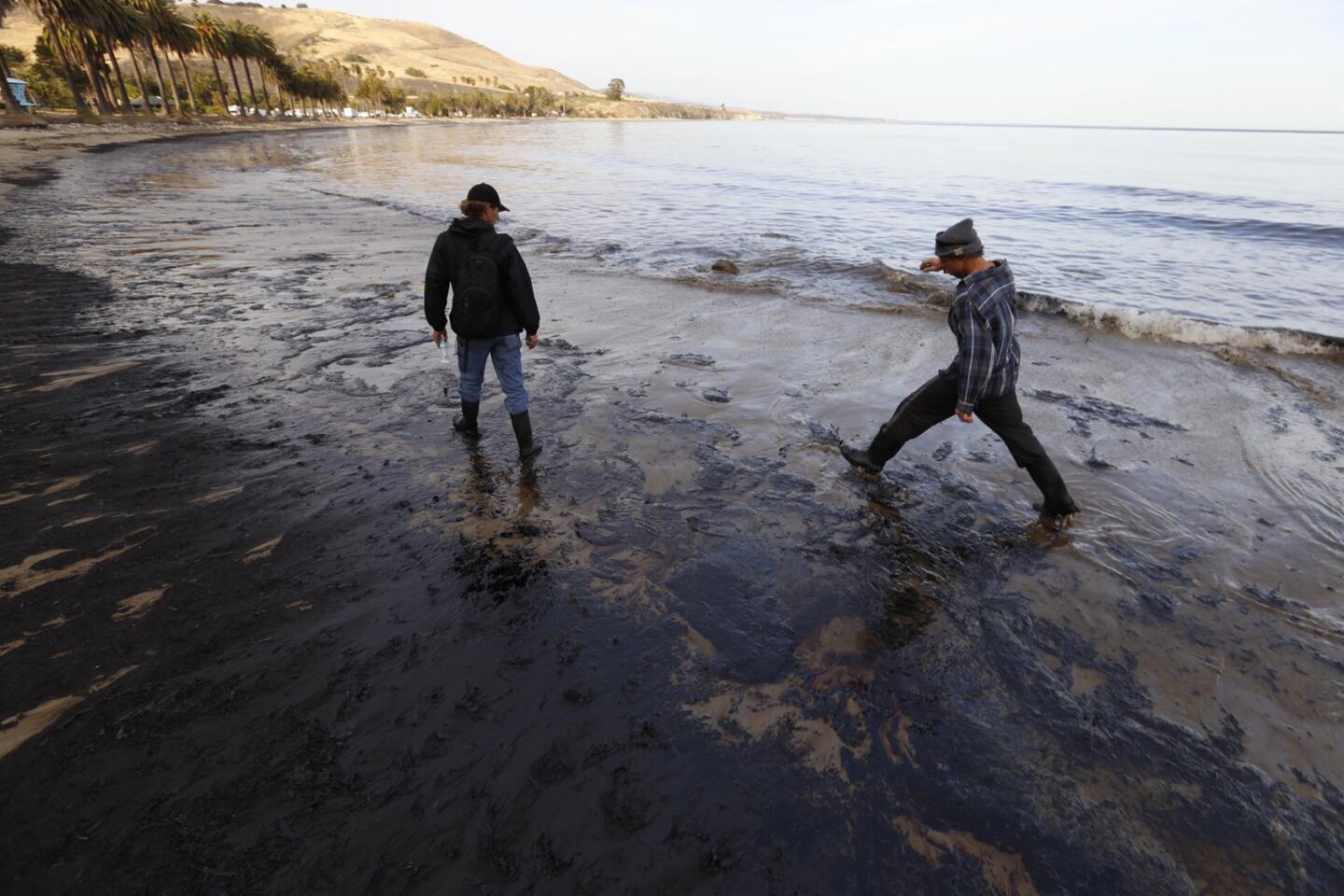Oil spill cleanup an eerie sight
The large, woodsy sign sounded a friendly warning about powerful riptides and dangerous backwash to the hordes of beachgoers who weren’t there: “When in Doubt, Don’t Go Out!”
A few days before the usually packed Memorial Day weekend, that wasn’t a problem.
There wasn’t a surfer, swimmer or camper in sight Wednesday. Instead, there were emergency vehicles, industrial-sized black dumpsters, supply trucks, a makeshift command post, ranks of port-a-potties and wash stations, and crews of white-helmeted workers clad in white, head-to-toe protective gear. It didn’t look like a holiday. It looked like a MASH unit on the moon.
Rocks on the beach were splattered in black. Mild breezes riffled the fronds but the smell in the air was more loading dock than lotus. With shovels in hand, workers slowly tromped along the shore. They dug into inky mud and dumped each shovelful into hundreds, then thousands of clear plastic bags. At points, they formed human chains, passing the heavy loads from one hand to the next, and, finally, into dumpsters.
Approached by the many journalists beside the fouled beach, workers politely declined to comment.
On the sand, Peuyoko Perez, an auto parts driver from Ventura, sang a mournful ode — a “willow song,” as he called it — in a Chumash dialect. He said he was paying homage to nature and to the sea, and was pleading for willow-like flexibility among conflicting interests in cleaning up the mess and preventing future disasters.
“This is an attack against the land, animals, fish, human beings — and I’m tired of it,” he said. Amid darkened clusters of seaweed, he looked out at the ocean. He said he planned to burn sage later in the day for cleansing.
Not far away, workers on their breaks shed their soiled protective suits as they stood in shallow blue plastic tubs the size of toddlers’ wading pools. Peeling off their yellow boot coverings, they scrubbed the work boots beneath them with heavy, sudsy brushes.
The antiseptic smell of household cleansers vied for a moment with the smell of oil. “Remember, guys,” a supervisor reminded them. “Gloves off last.”
Along the Gaviota coast, people watched and waited. There was no telling whether the slick would roll ashore at Santa Barbara and other points south. Even the amount of oil released Tuesday in a pipeline rupture near U.S. 101 was unknown. Early estimates were 21,000 gallons but Plains All America Pipeline officials on Wednesday said it may have been as much as 105,000 gallons.
A couple of miles down the coast from Refugio, El Capitan State Beach also was closed as a precaution.
However, several students and professors from Cal State Channel Islands were there Wednesday morning. They had secured permission to make scientific measurements, driving stainless steel cylinders a couple of feet into the sand to gauge the number of sand crabs and other tiny creatures living in it before oil washes ashore — if any does.
Clare Steele, a professor of environmental science and resource management, said students will repeat the sampling in June and chronicle any difference they might find.
At the edge of El Capitan’s parking area, two Carpinteria couples reclined on beach chairs, chatting and reading paperbacks. The ocean view was magnificent, there was nobody else around, and the pace was as unhurried as a Jimmy Buffett tropical paradise song.
They had pitched camp at Refugio the day before. In the late afternoon, Debbie Sukiasian was just getting ready to paddle out on her surfboard when she picked up the acrid smell of what she thought was someone nearby laying hot tar on a roof.
When Refugio was evacuated, they set up at El Capitan. On Wednesday morning, El Capitan was also closed but the couples were allowed to sit in the sunshine beside the parking lot. The ocean, at the foot of a steep hilllside, was calm. There was no sign of the disruption just up the coast — or, for the moment, in the world beyond.
“We’re not going anywhere,” Sukiasian said. “We’re happy.”
Twitter: @schawkins
More to Read
Start your day right
Sign up for Essential California for news, features and recommendations from the L.A. Times and beyond in your inbox six days a week.
You may occasionally receive promotional content from the Los Angeles Times.
